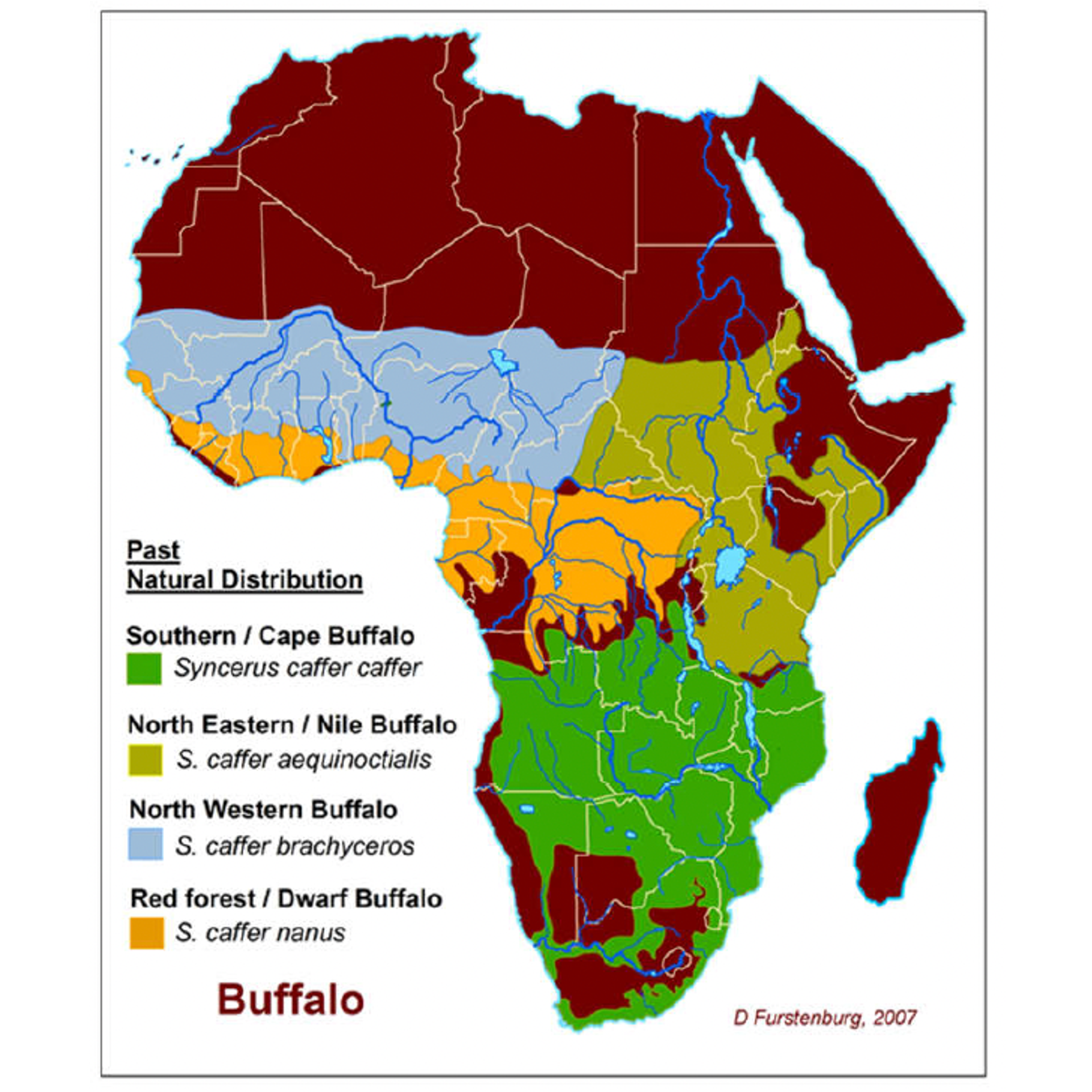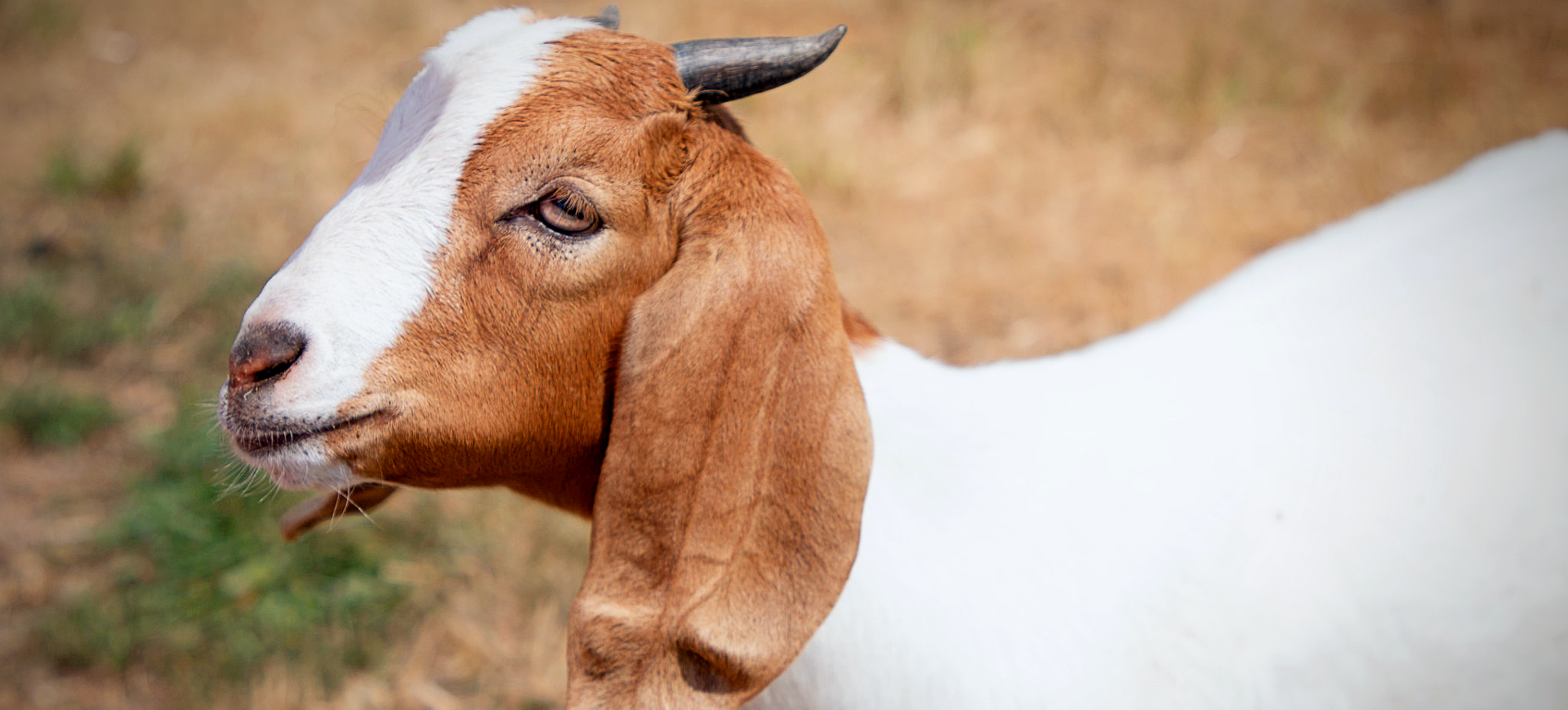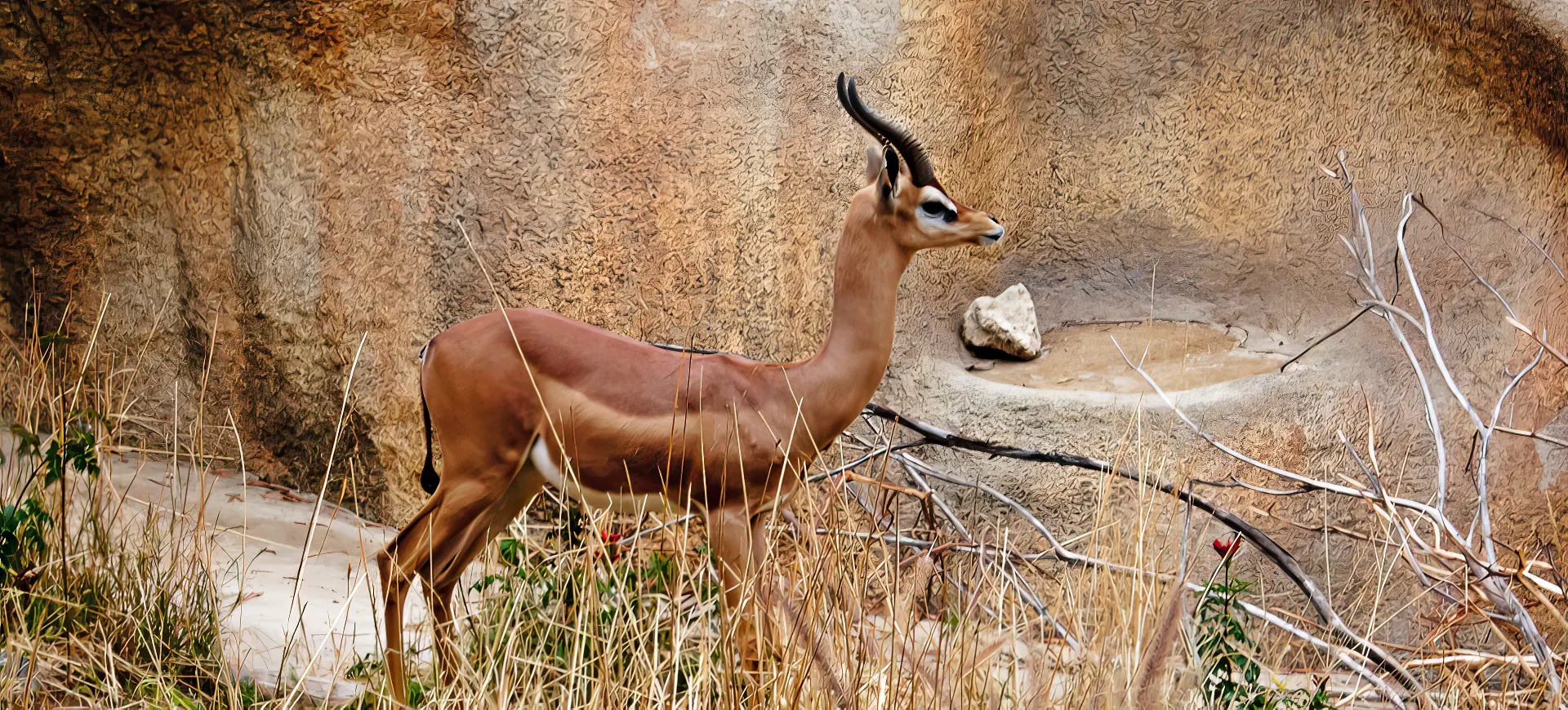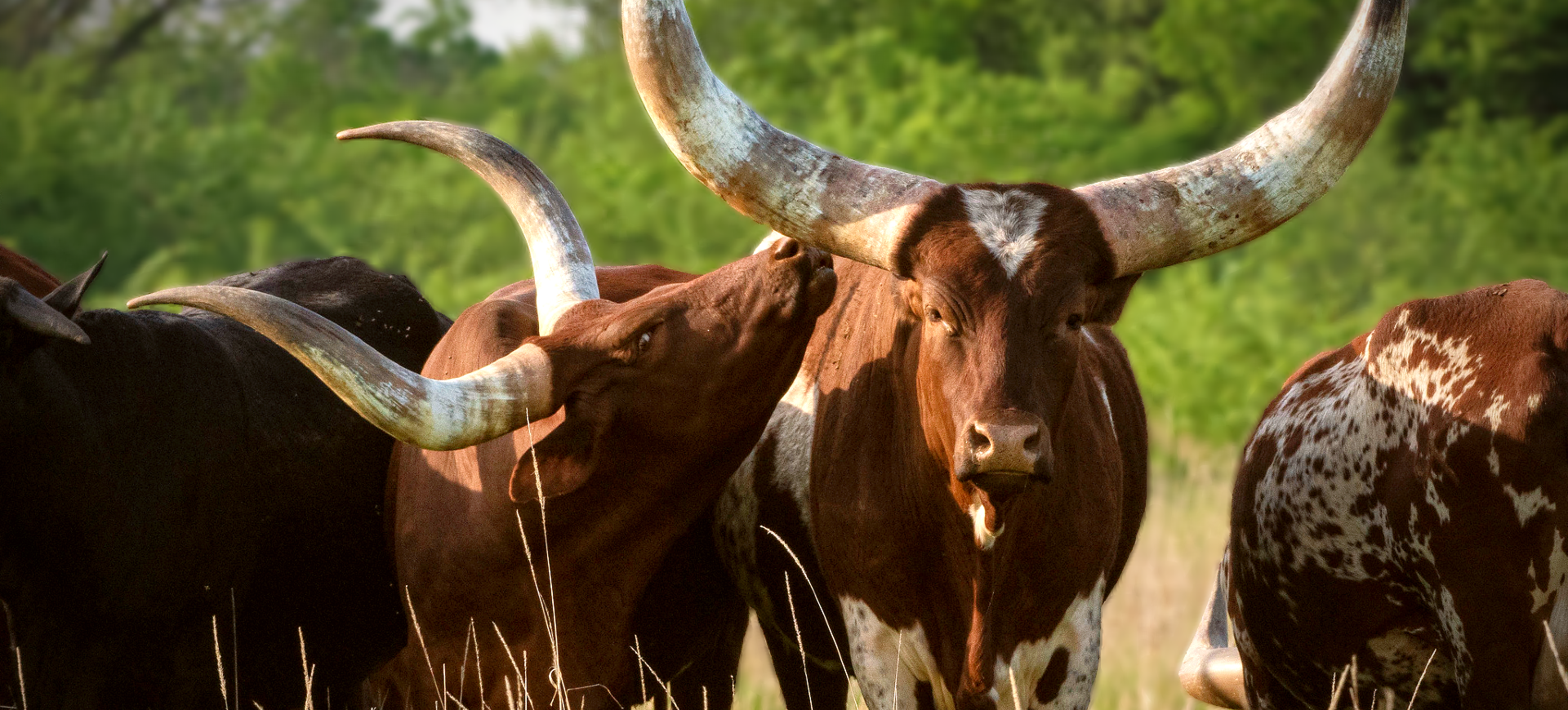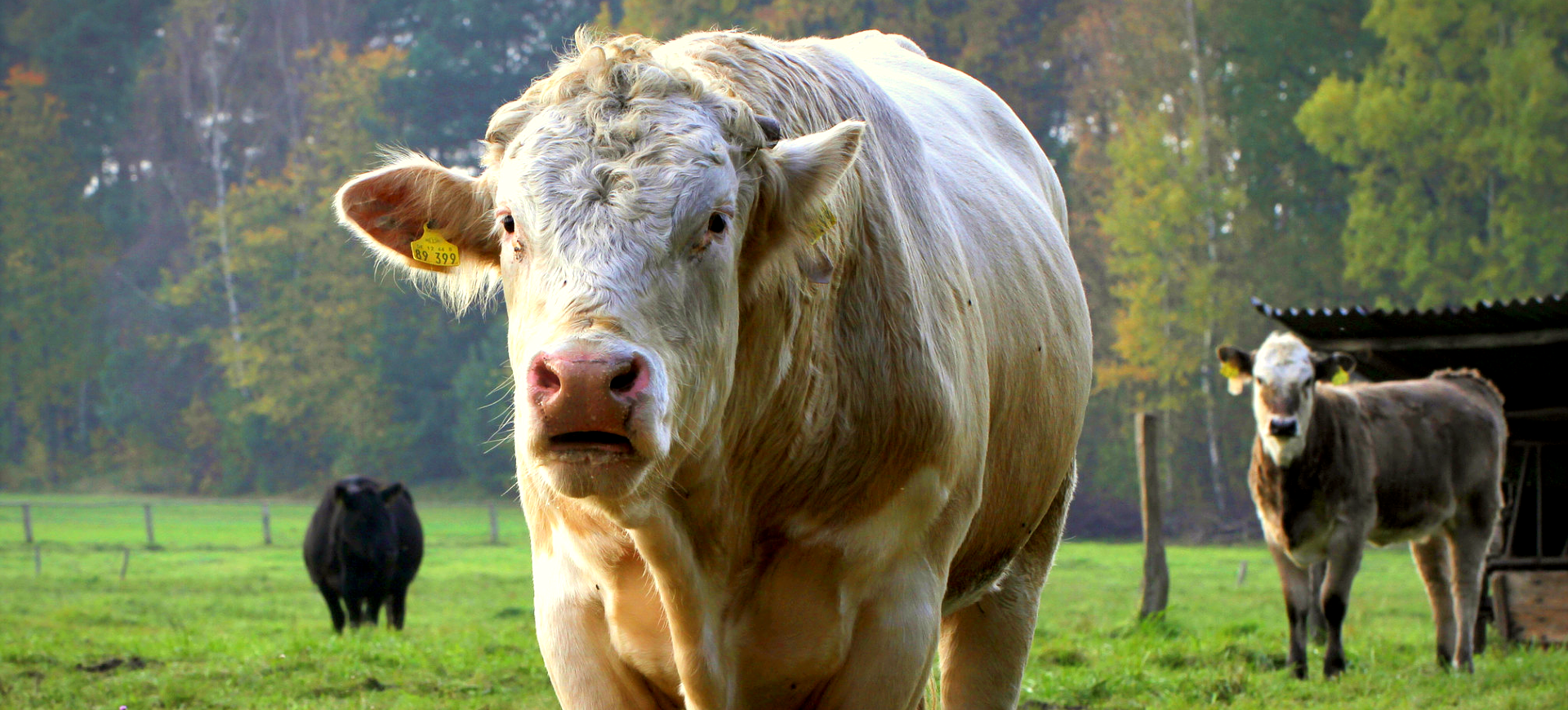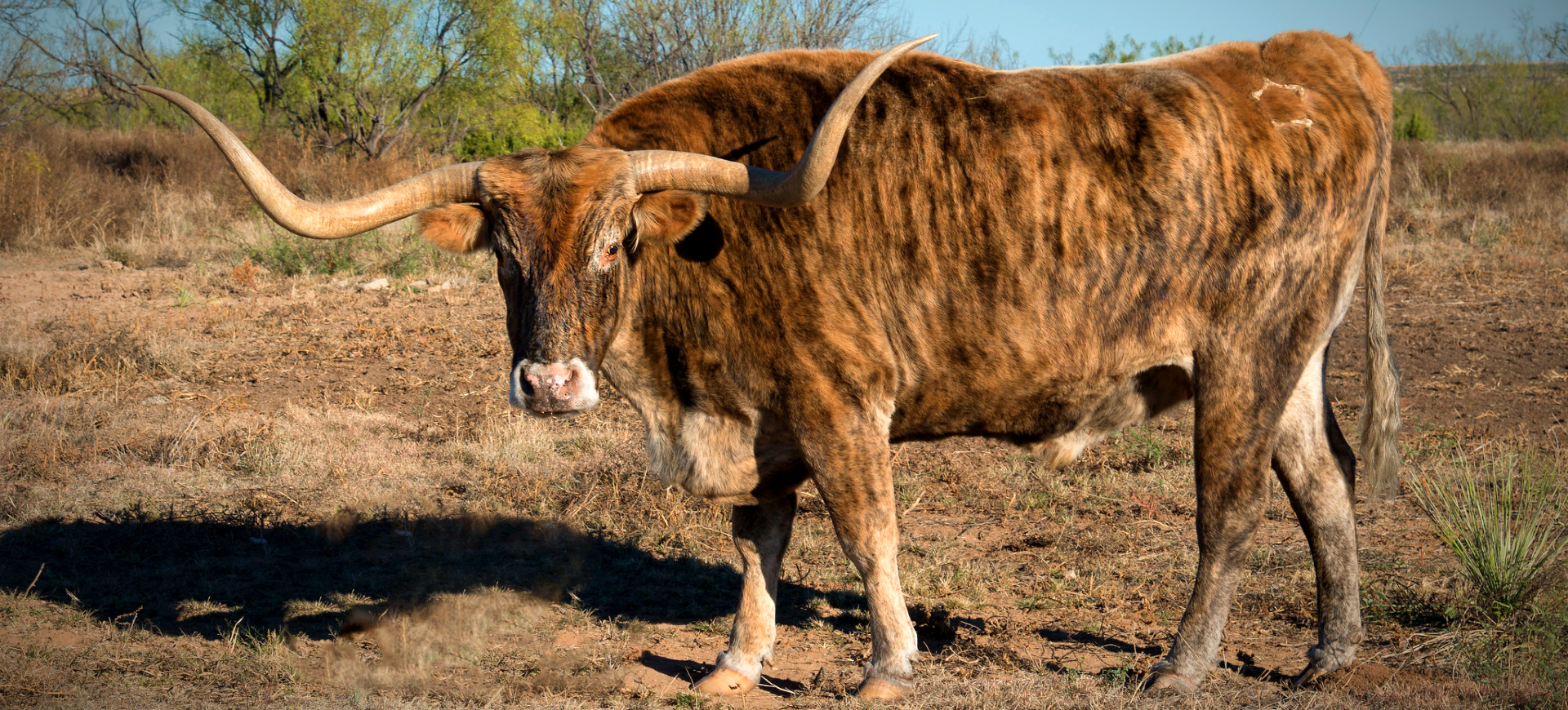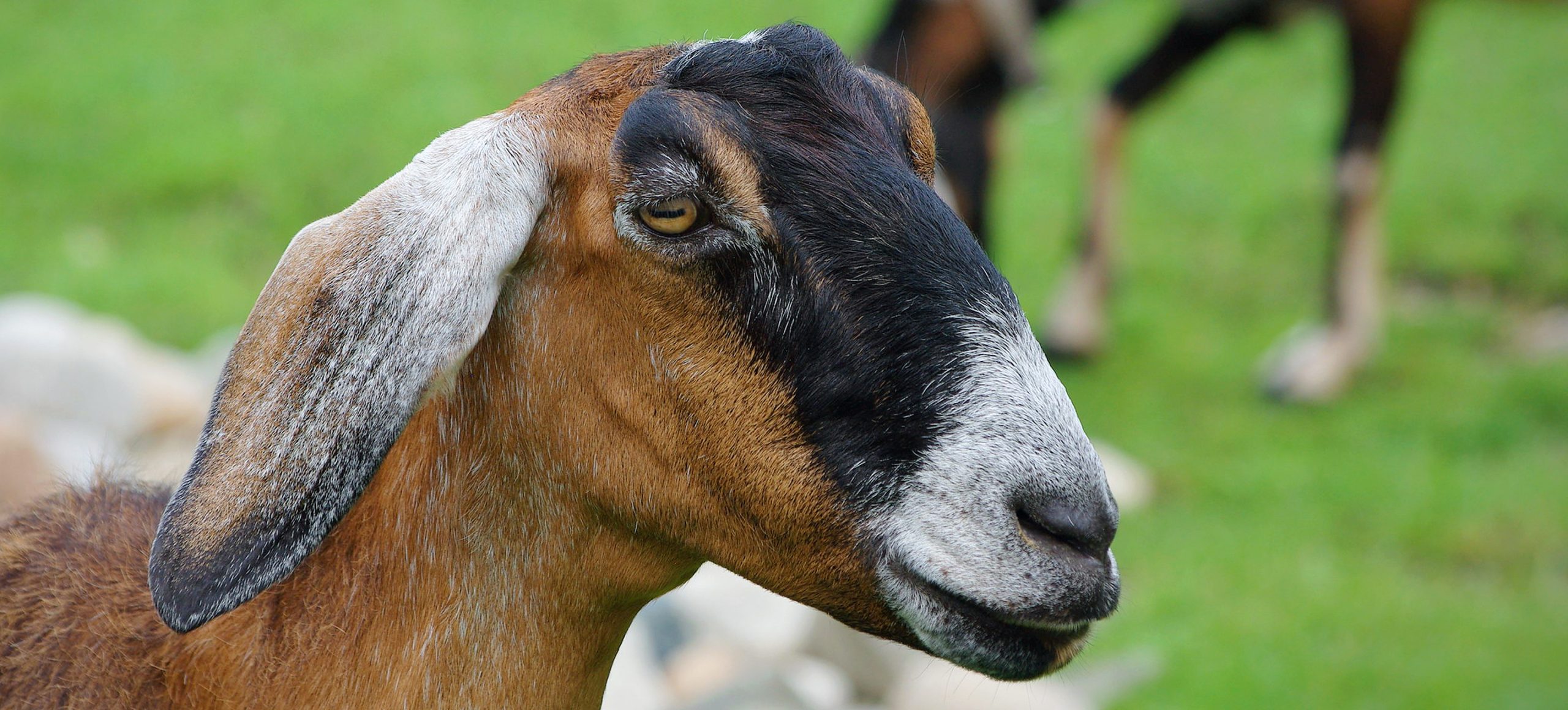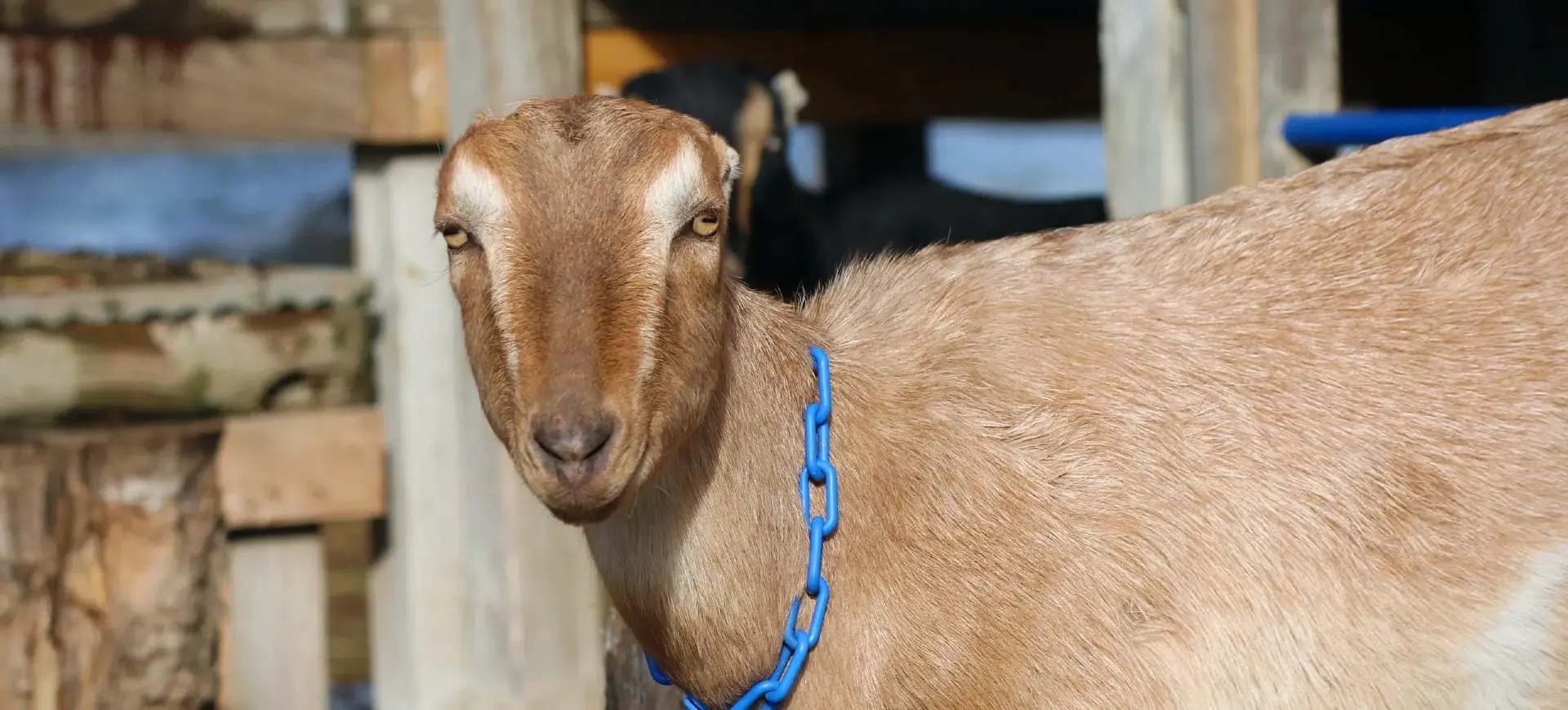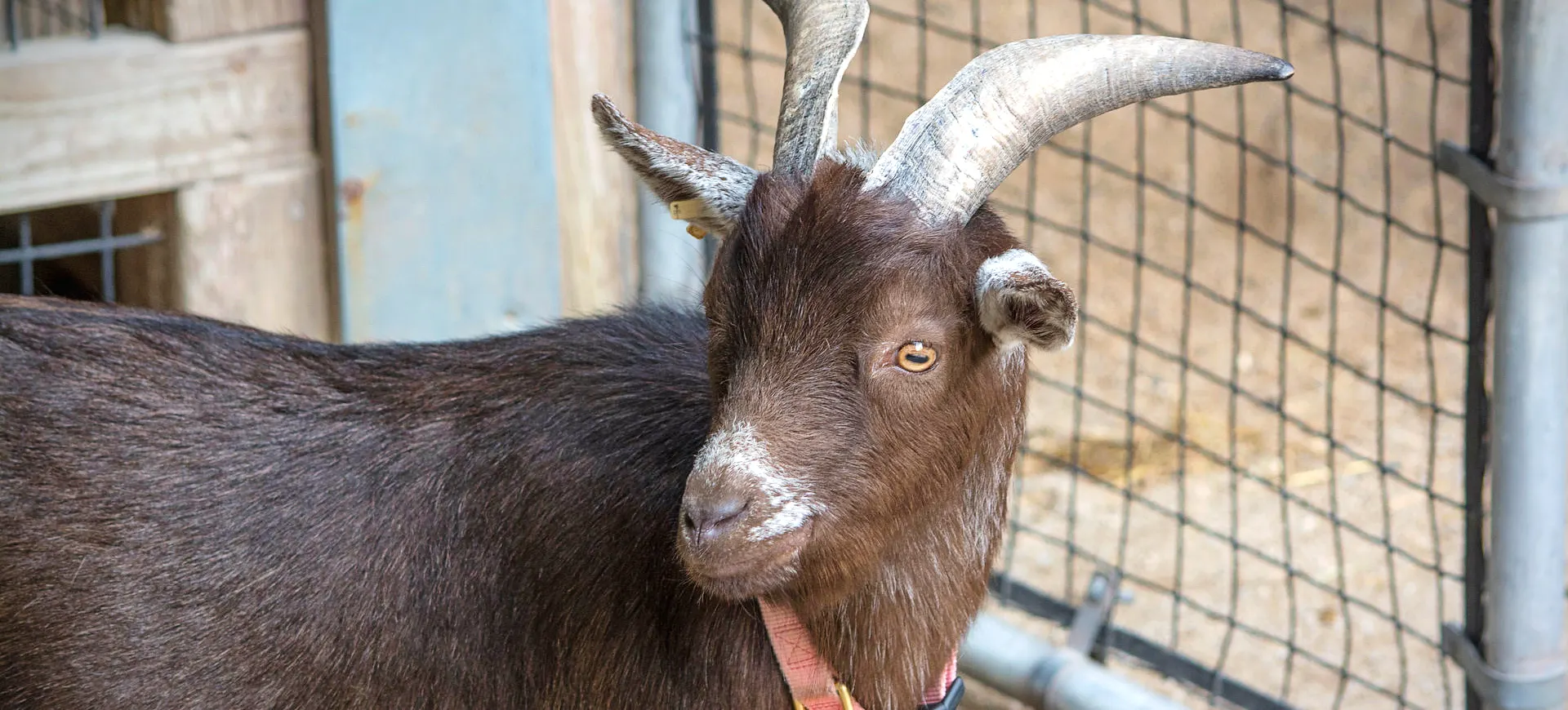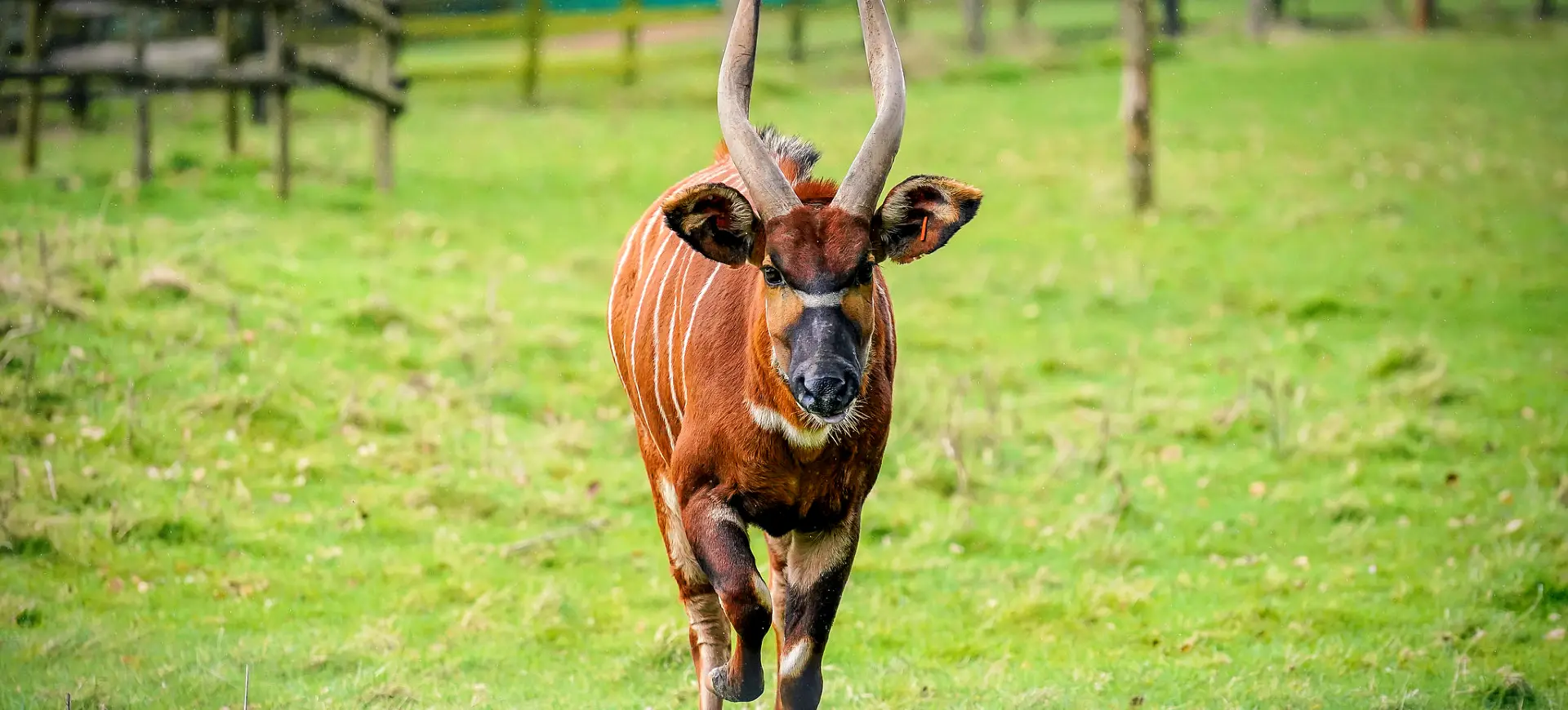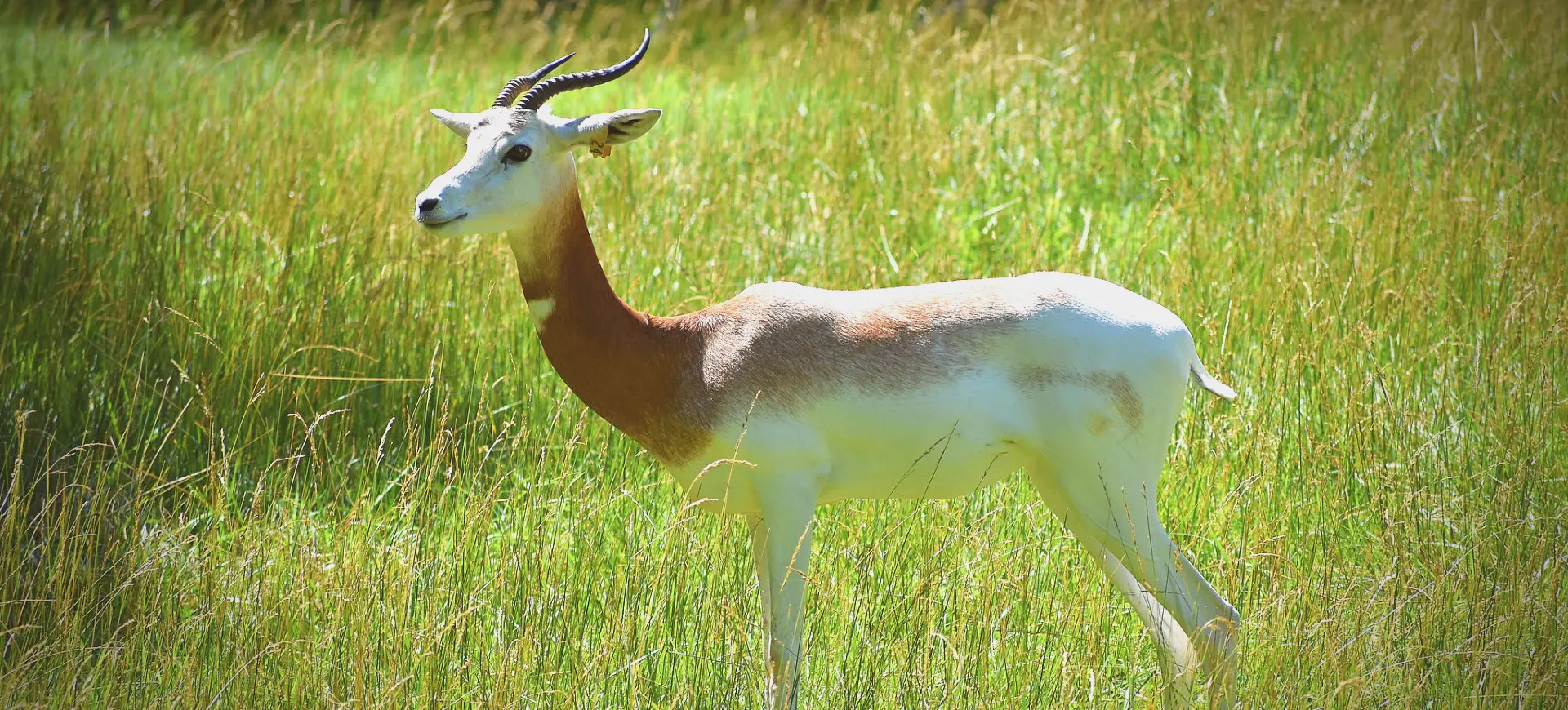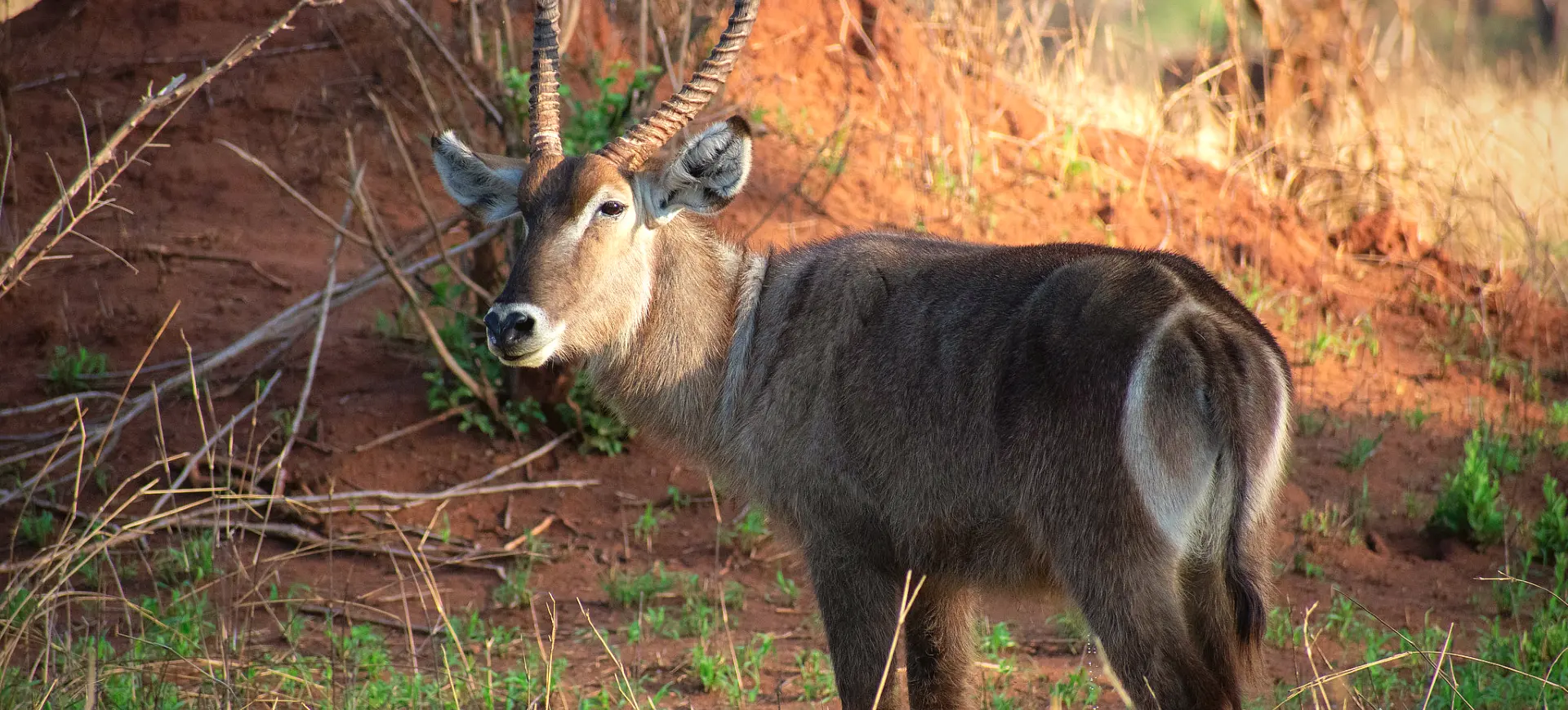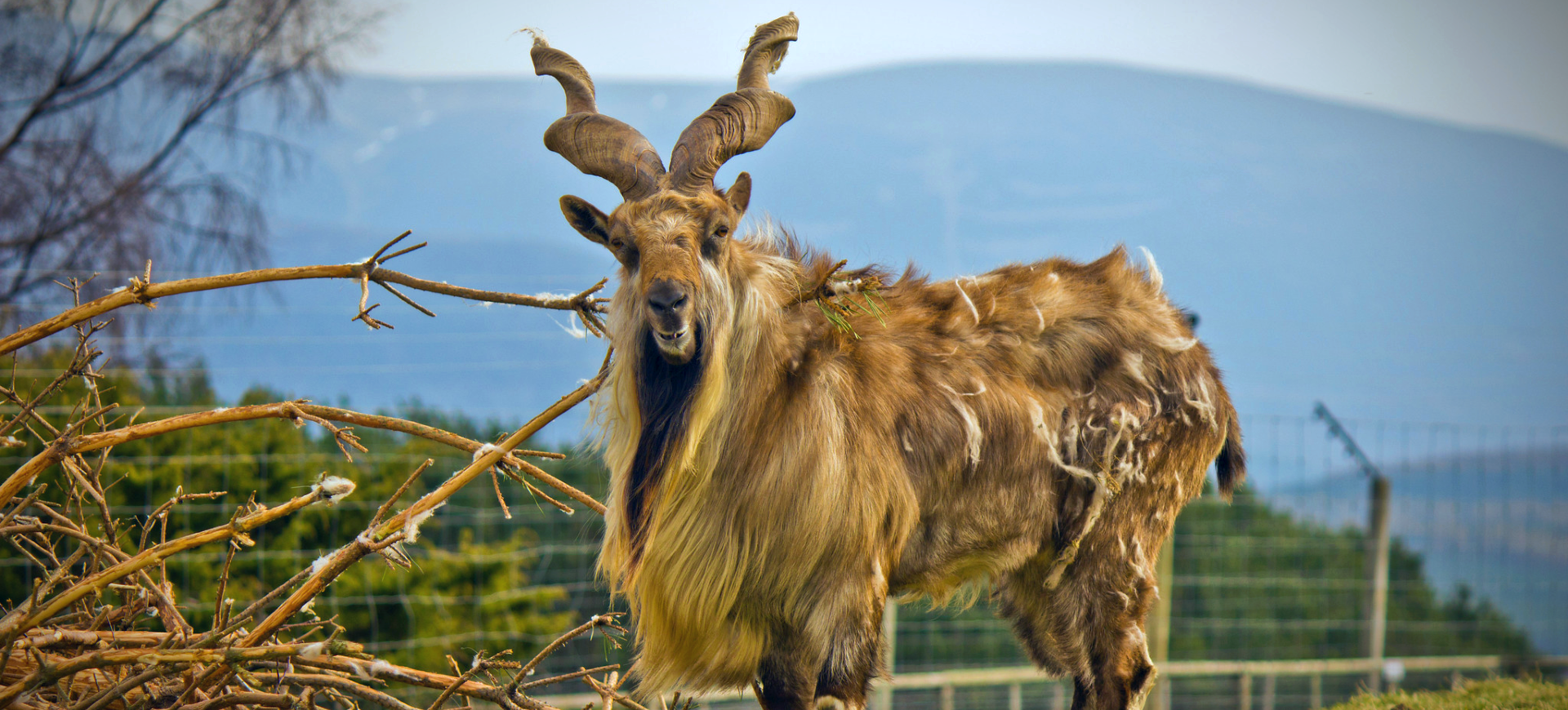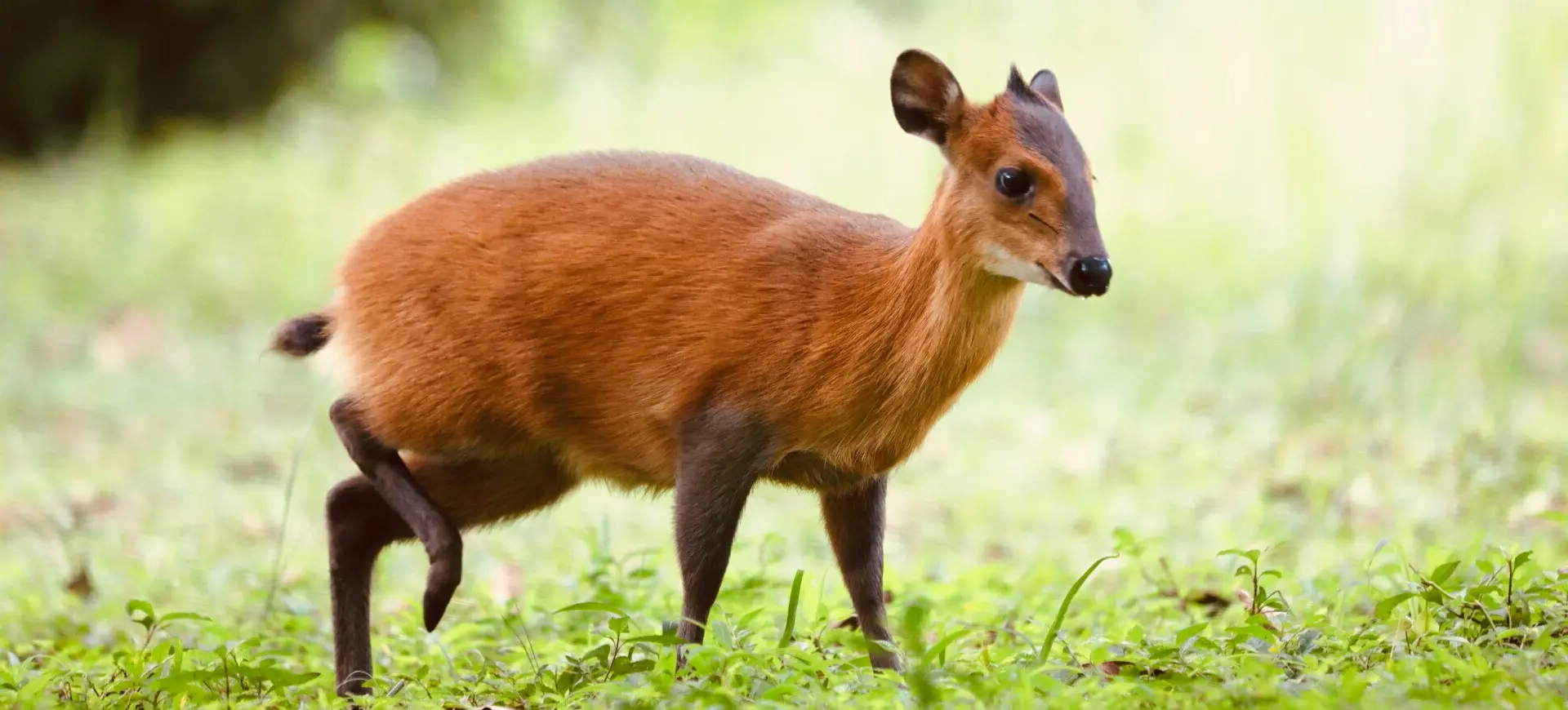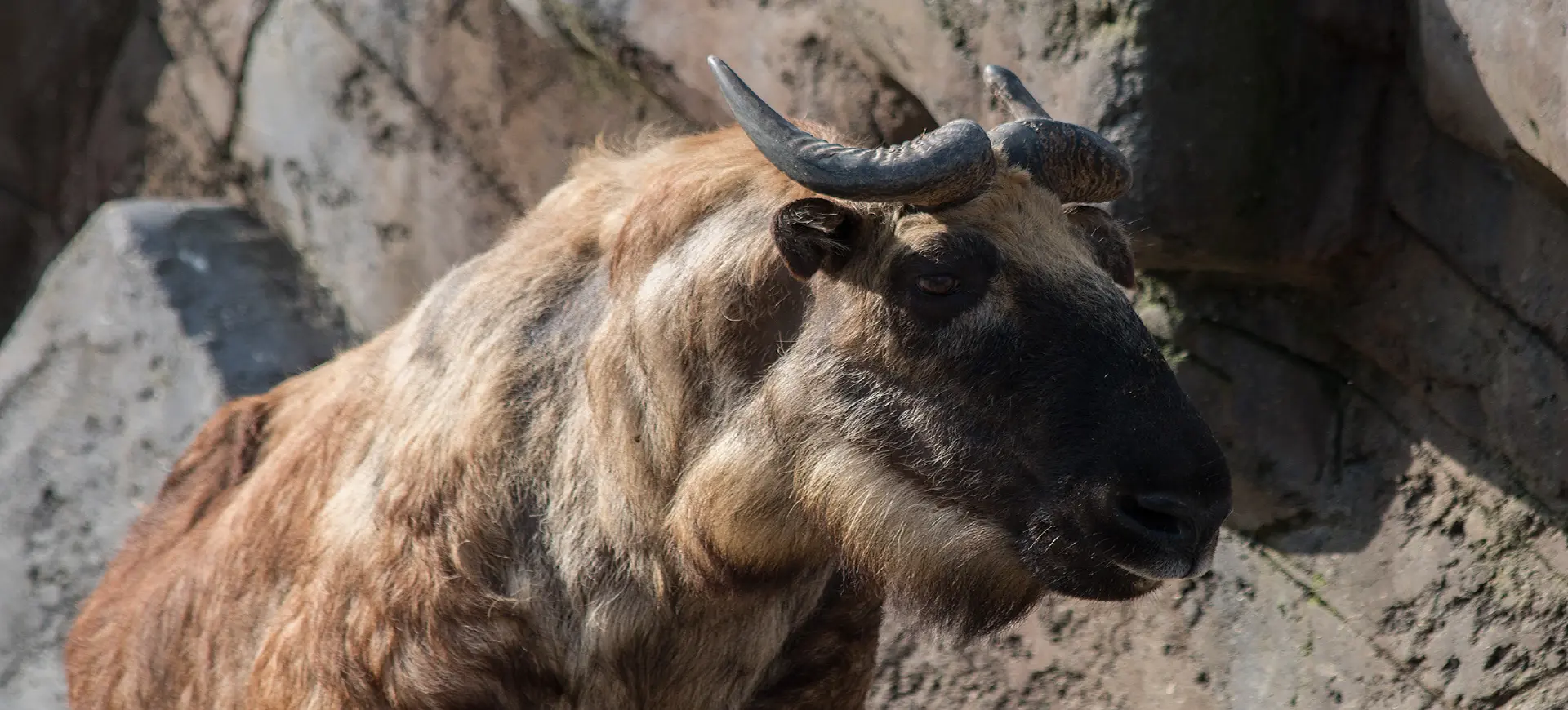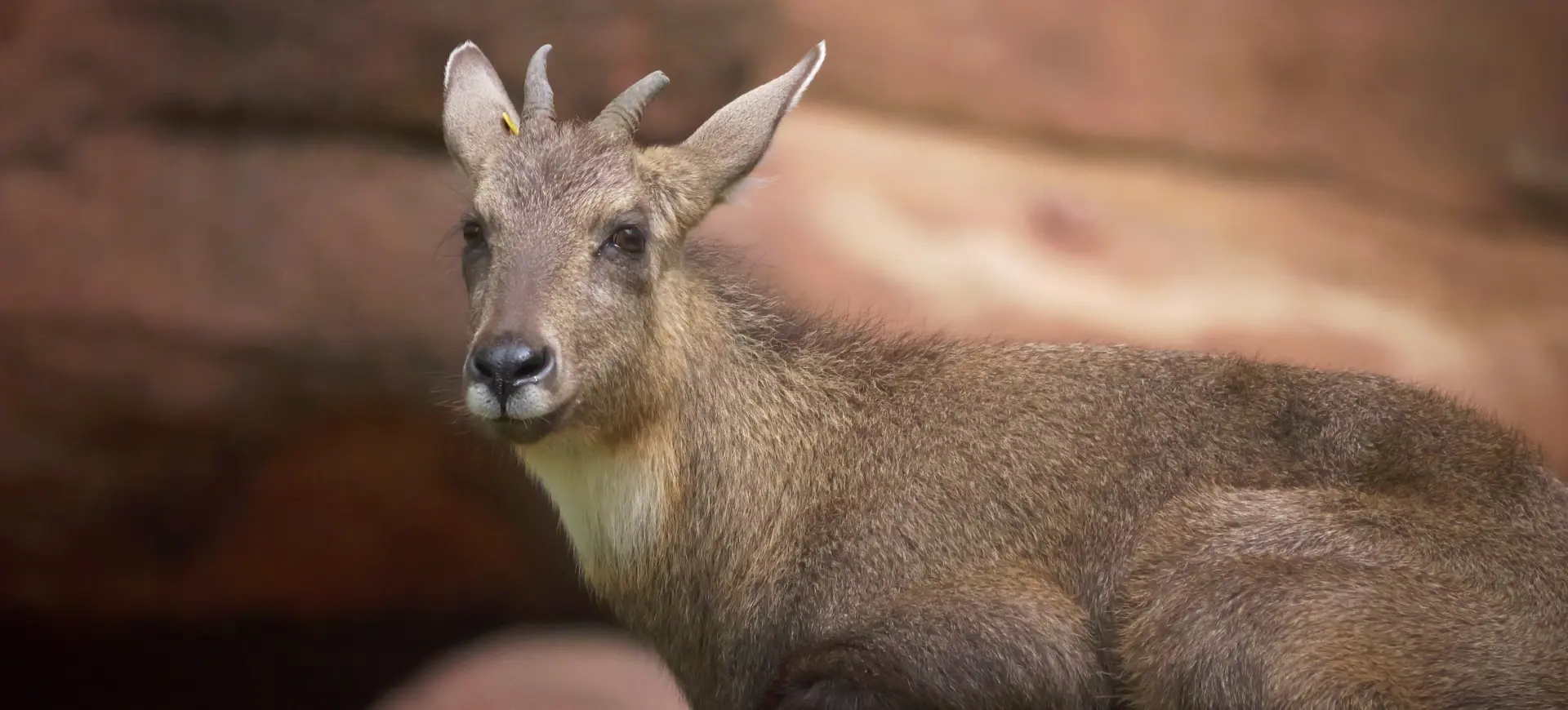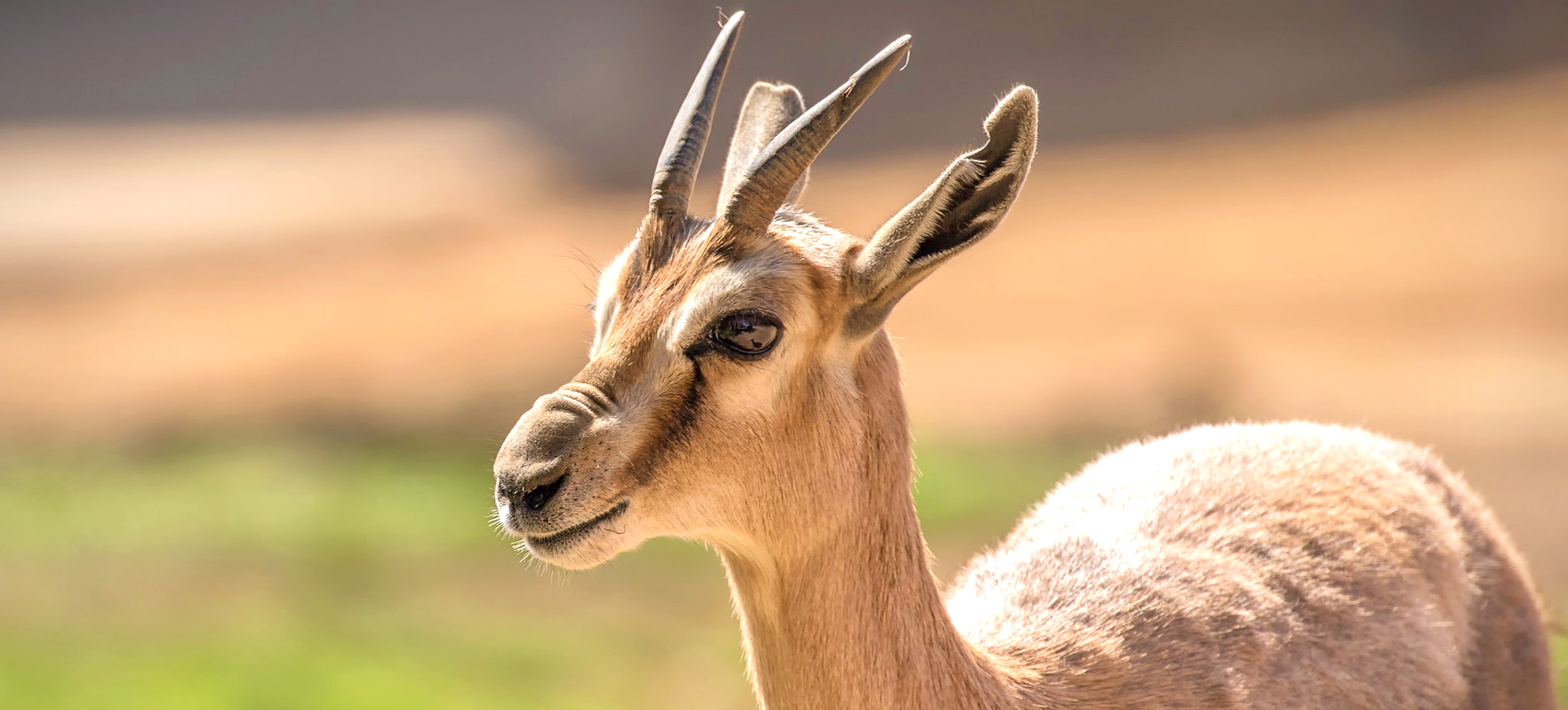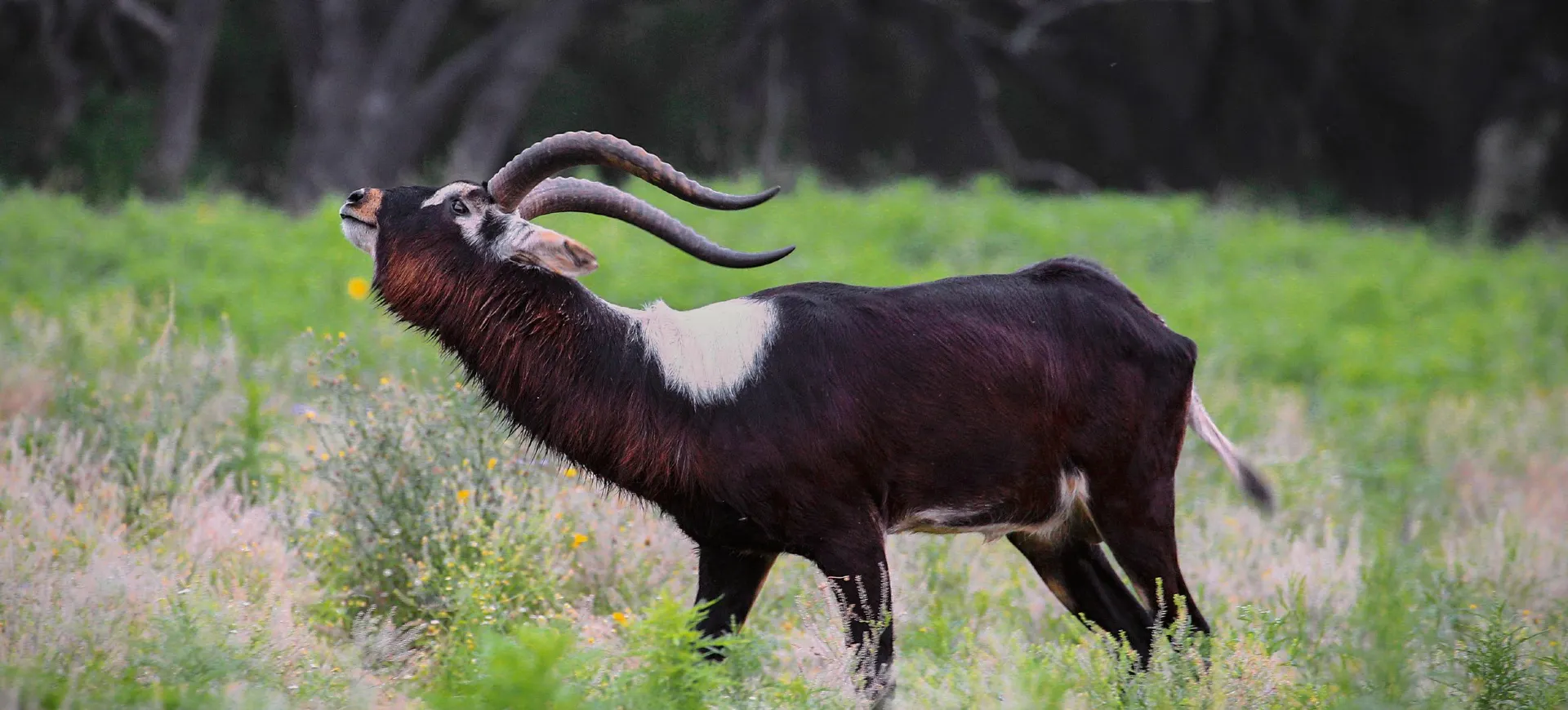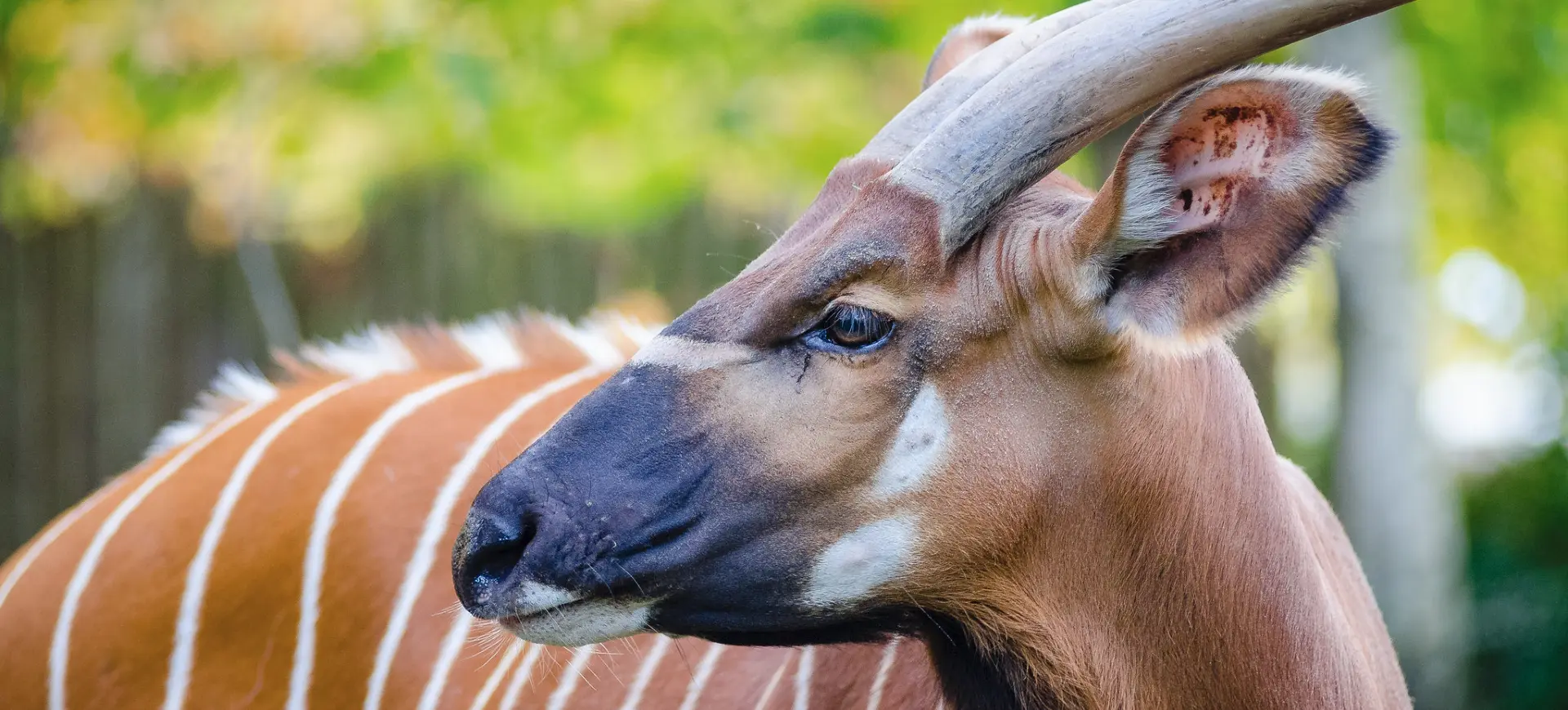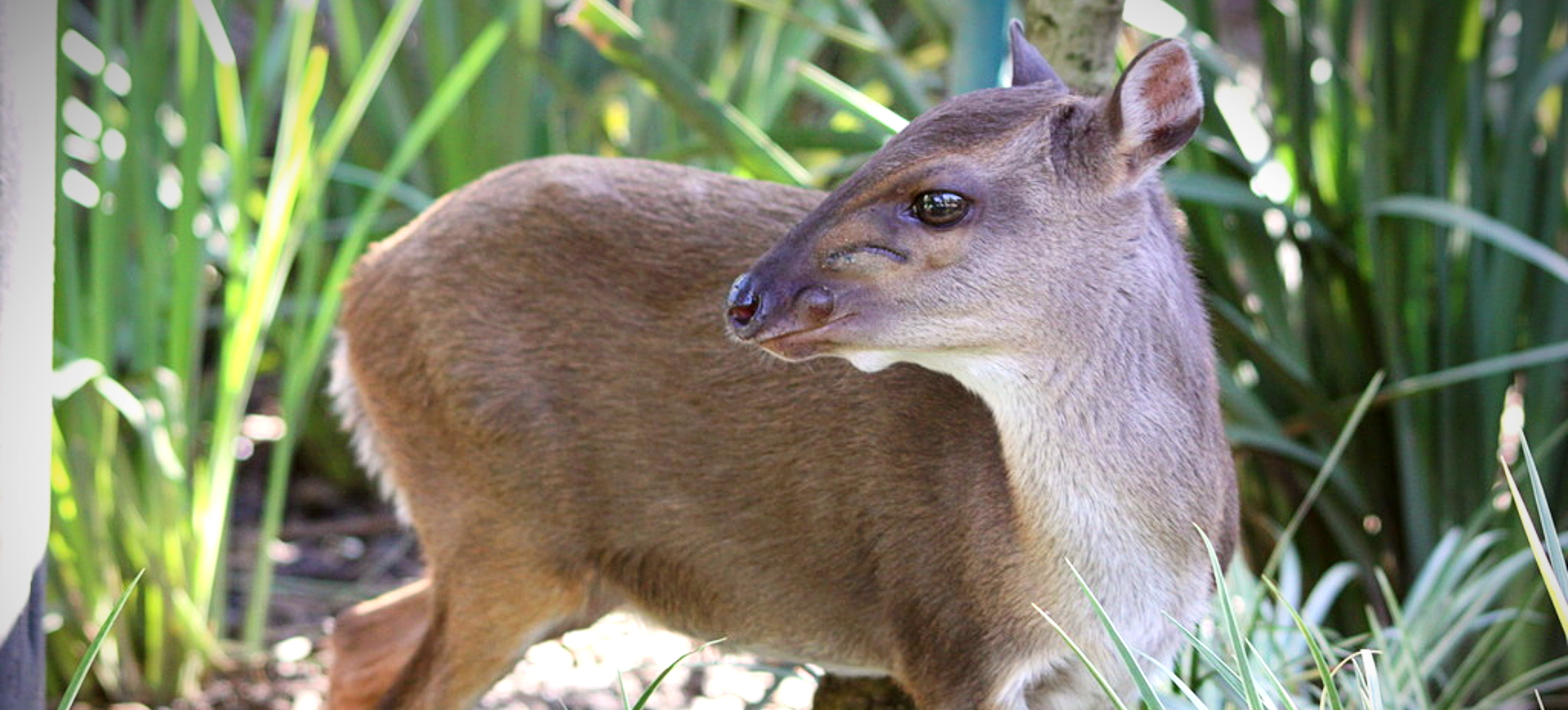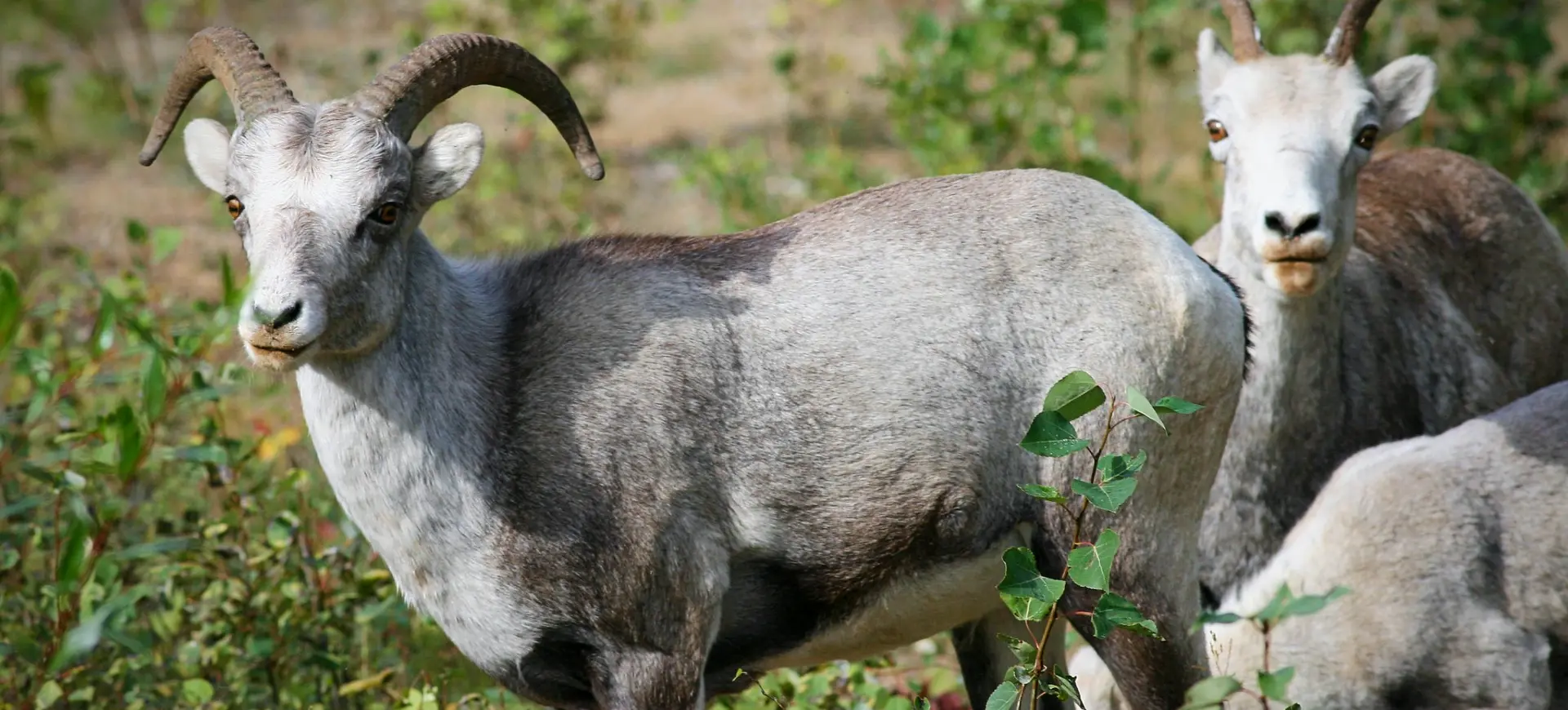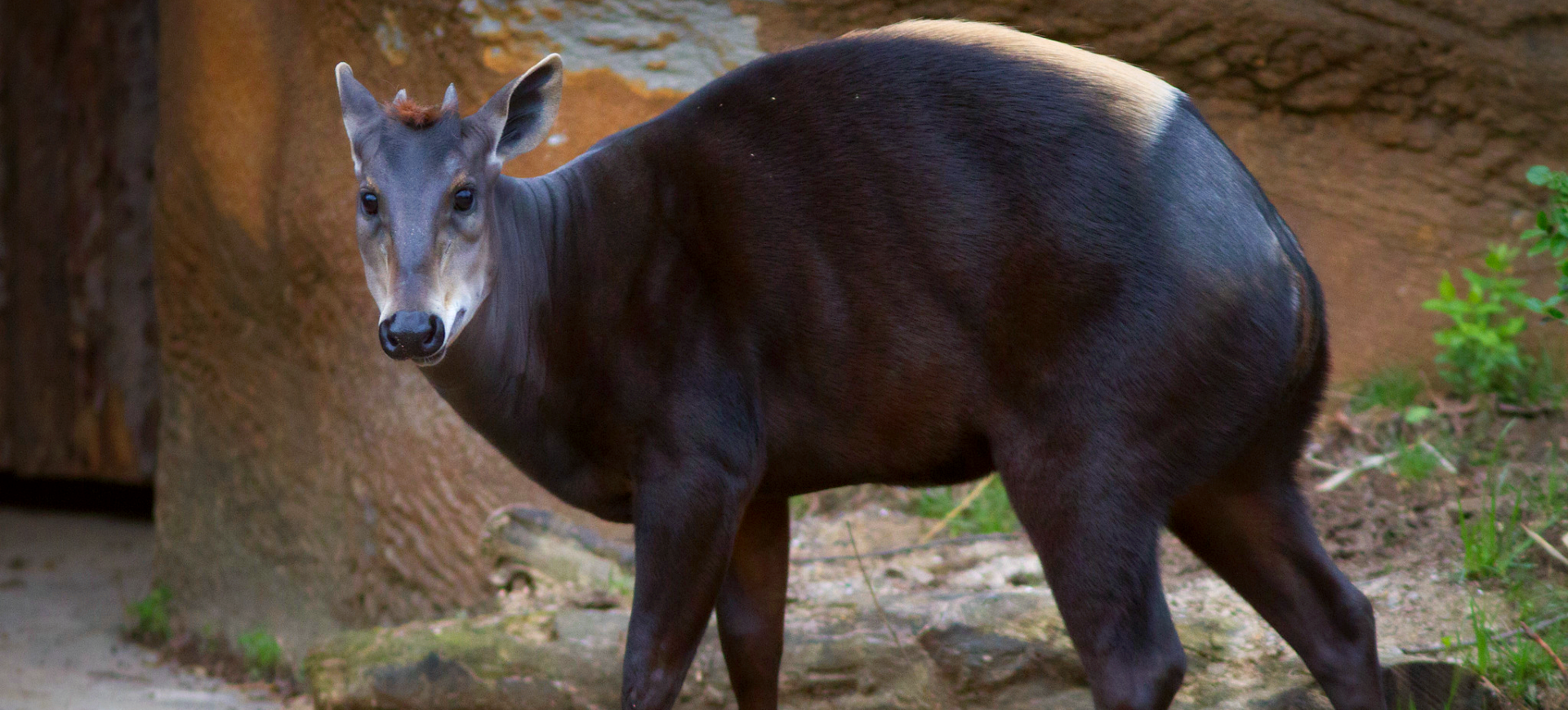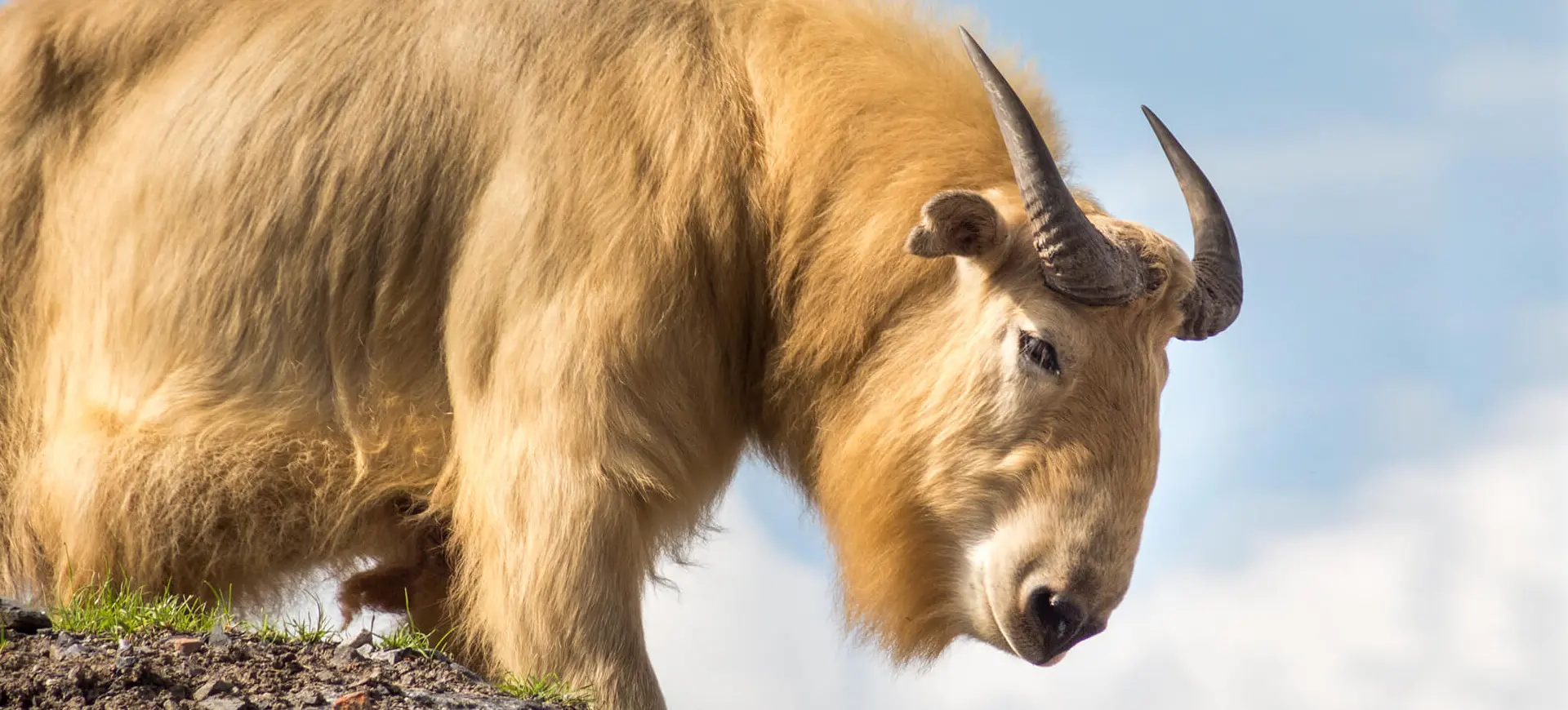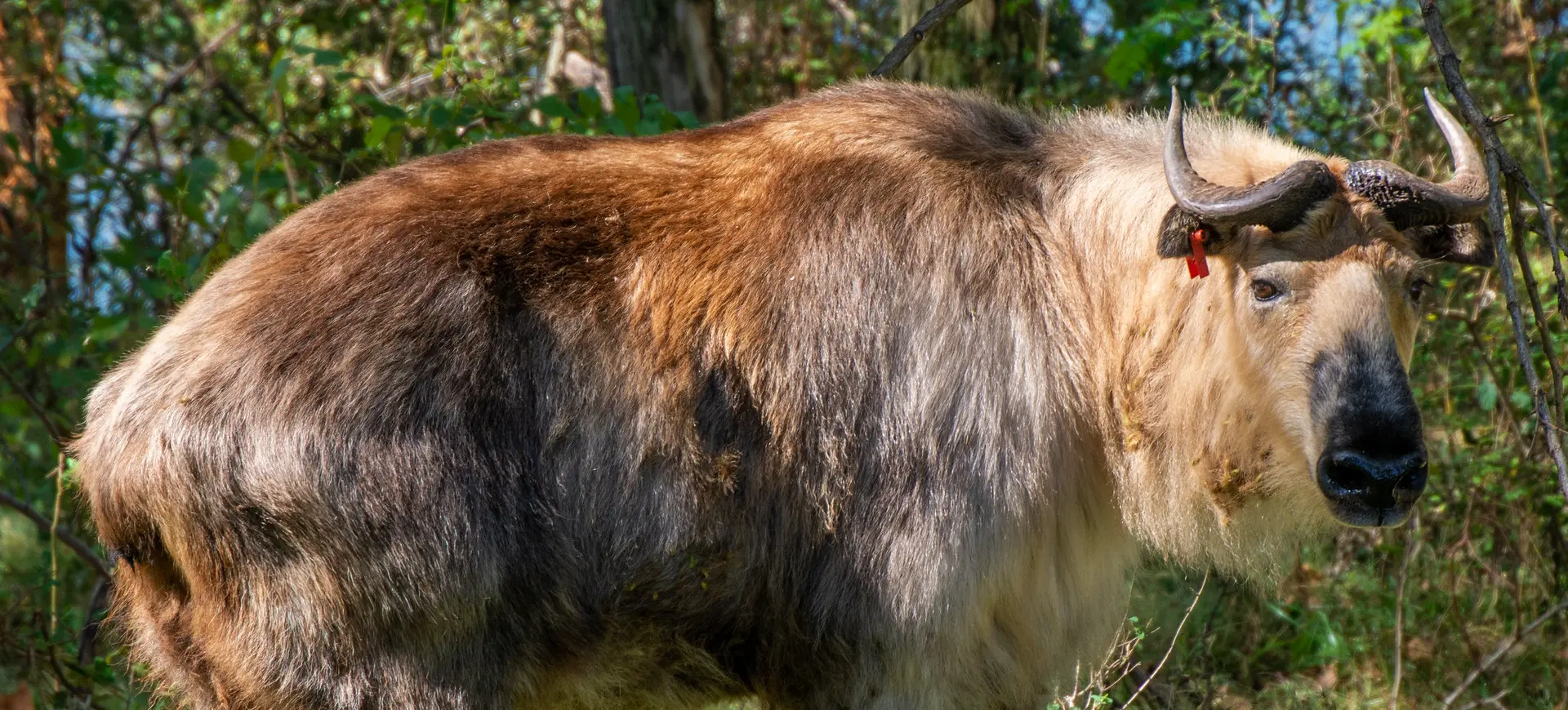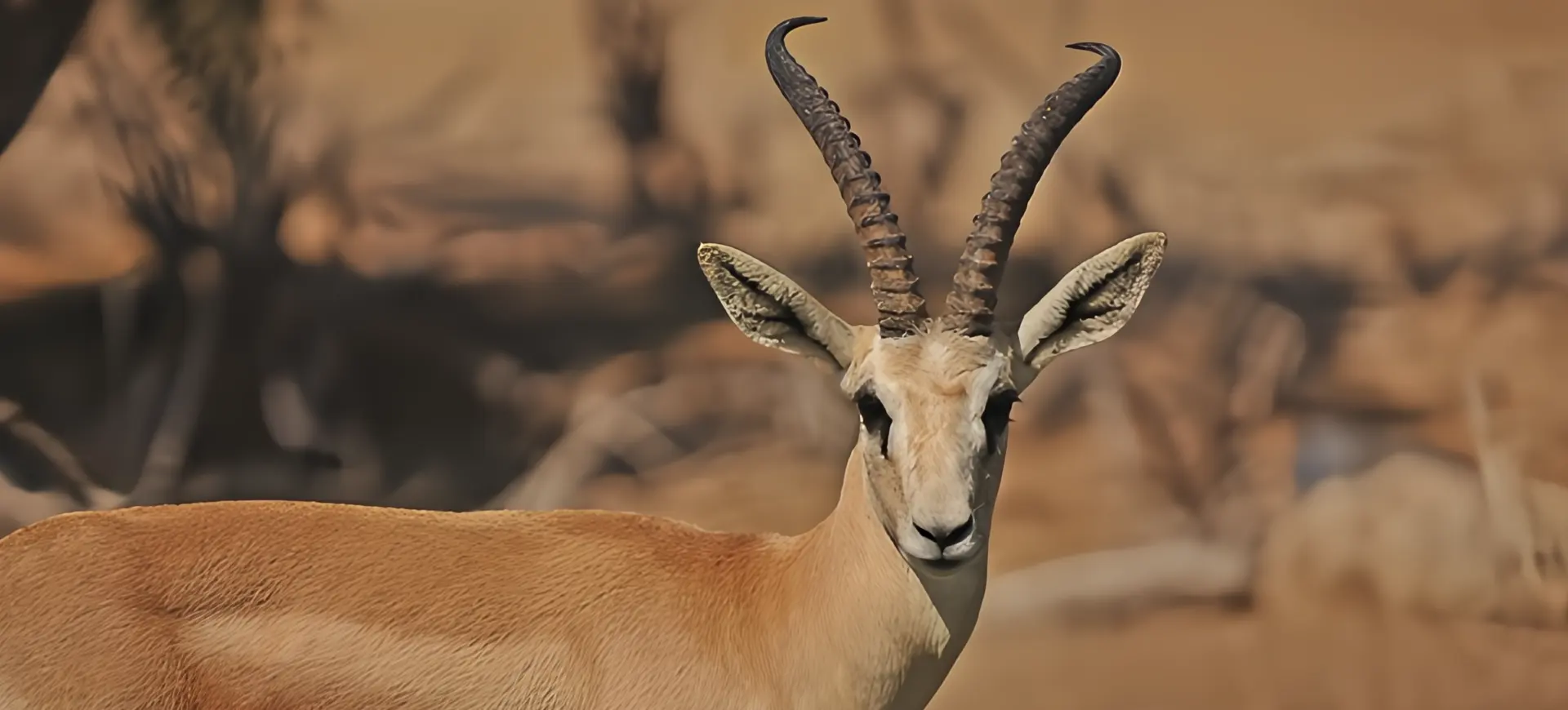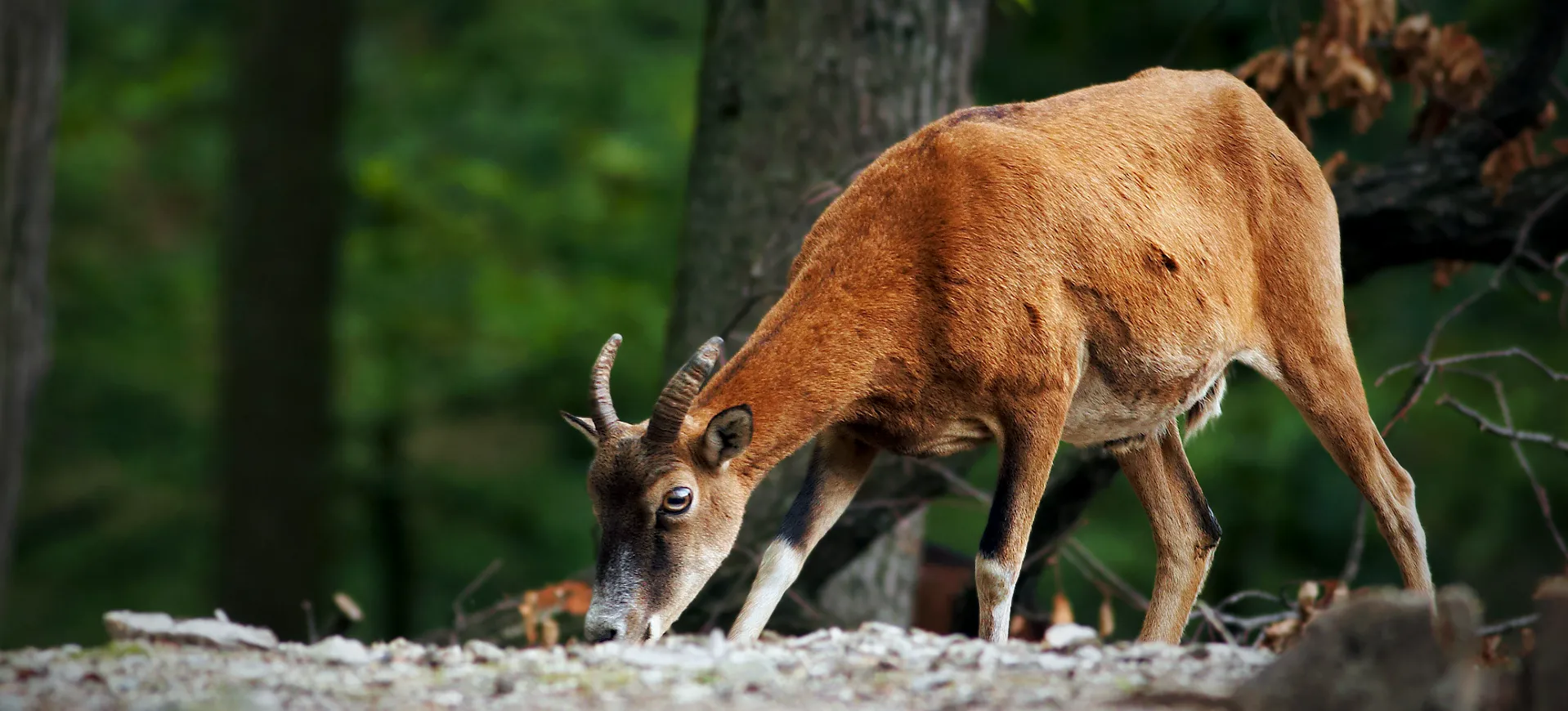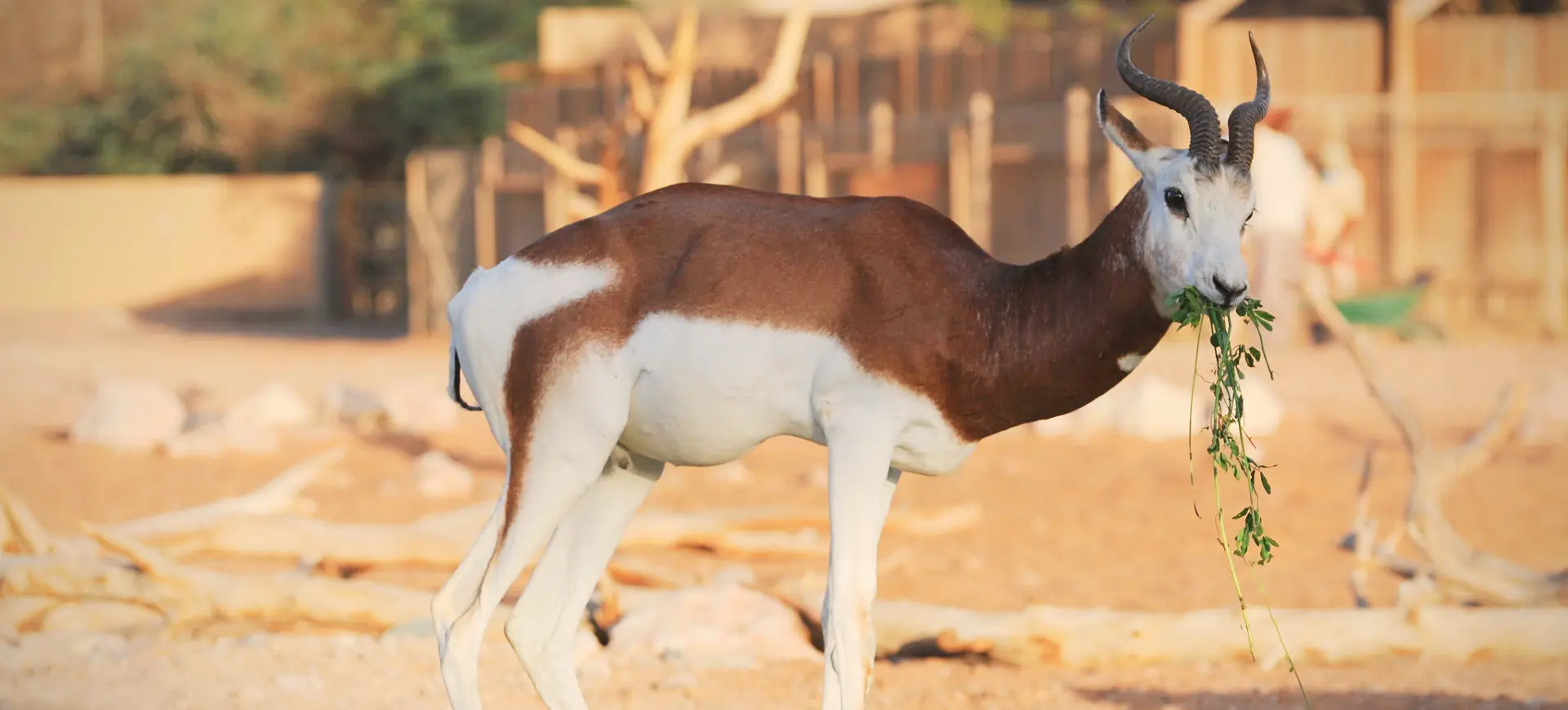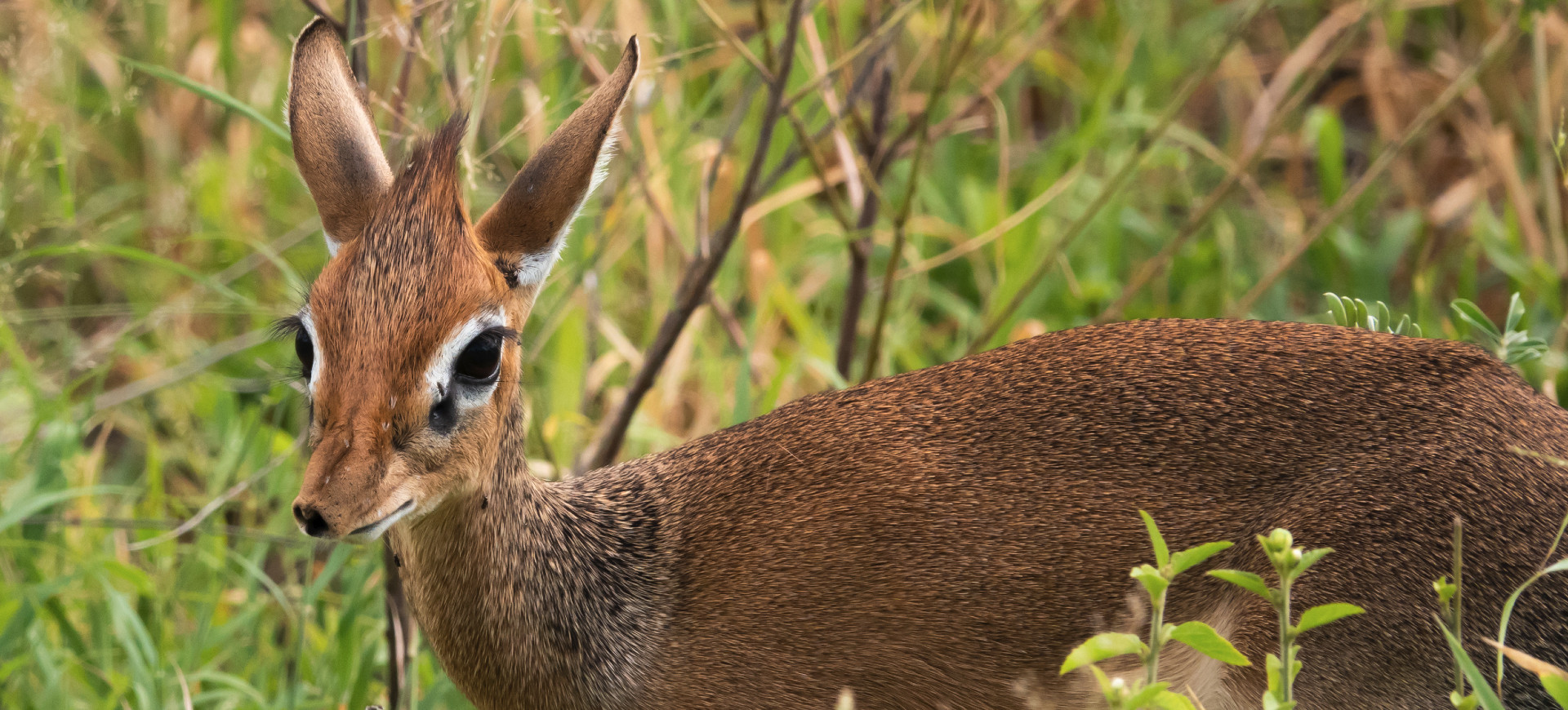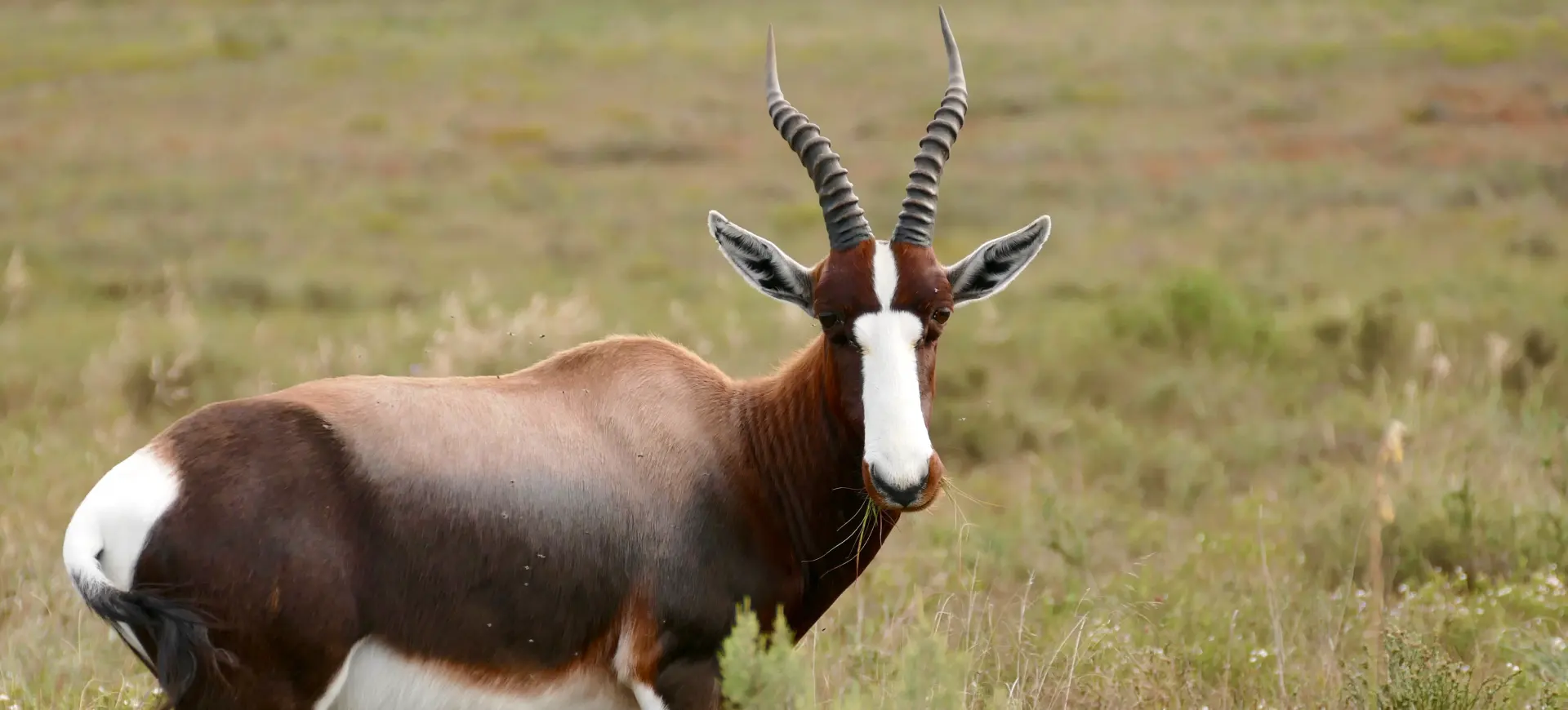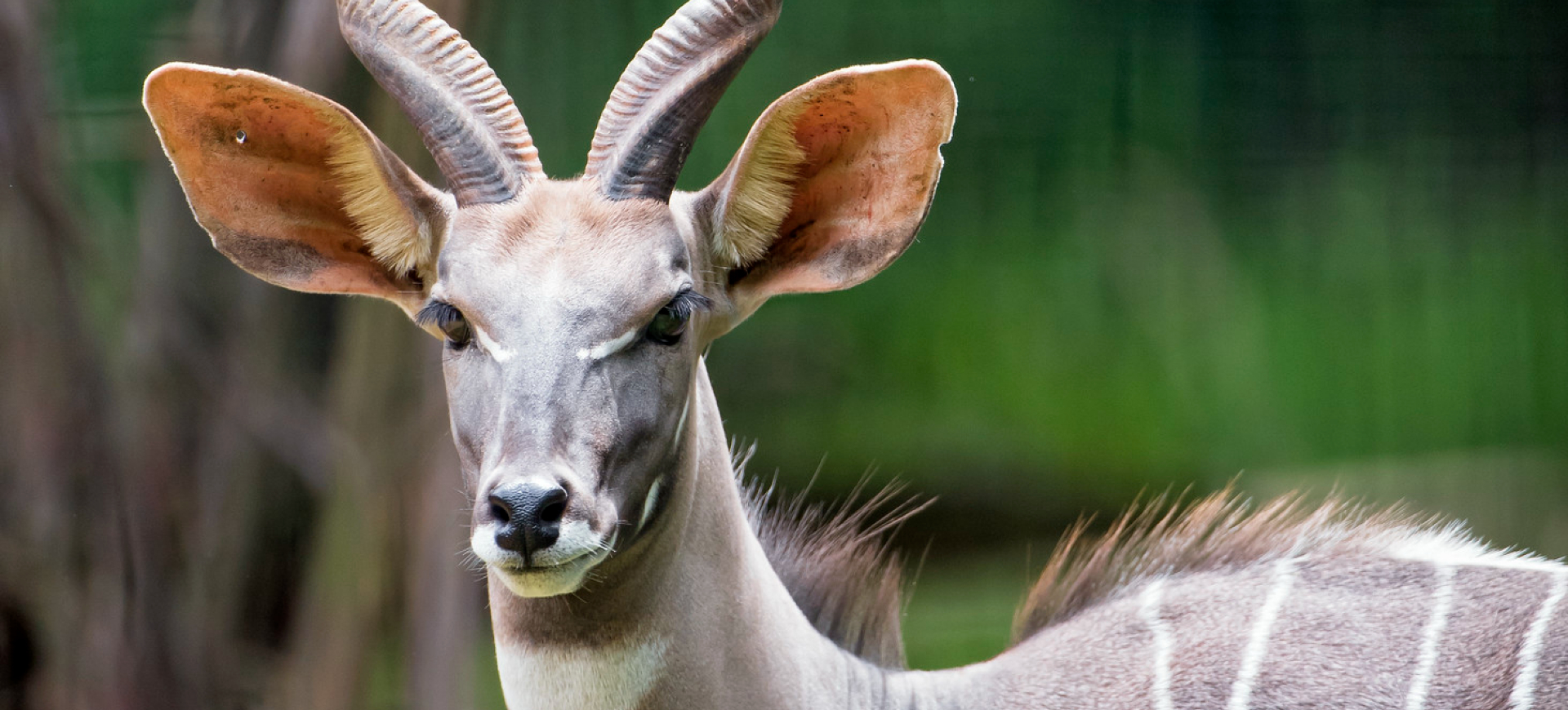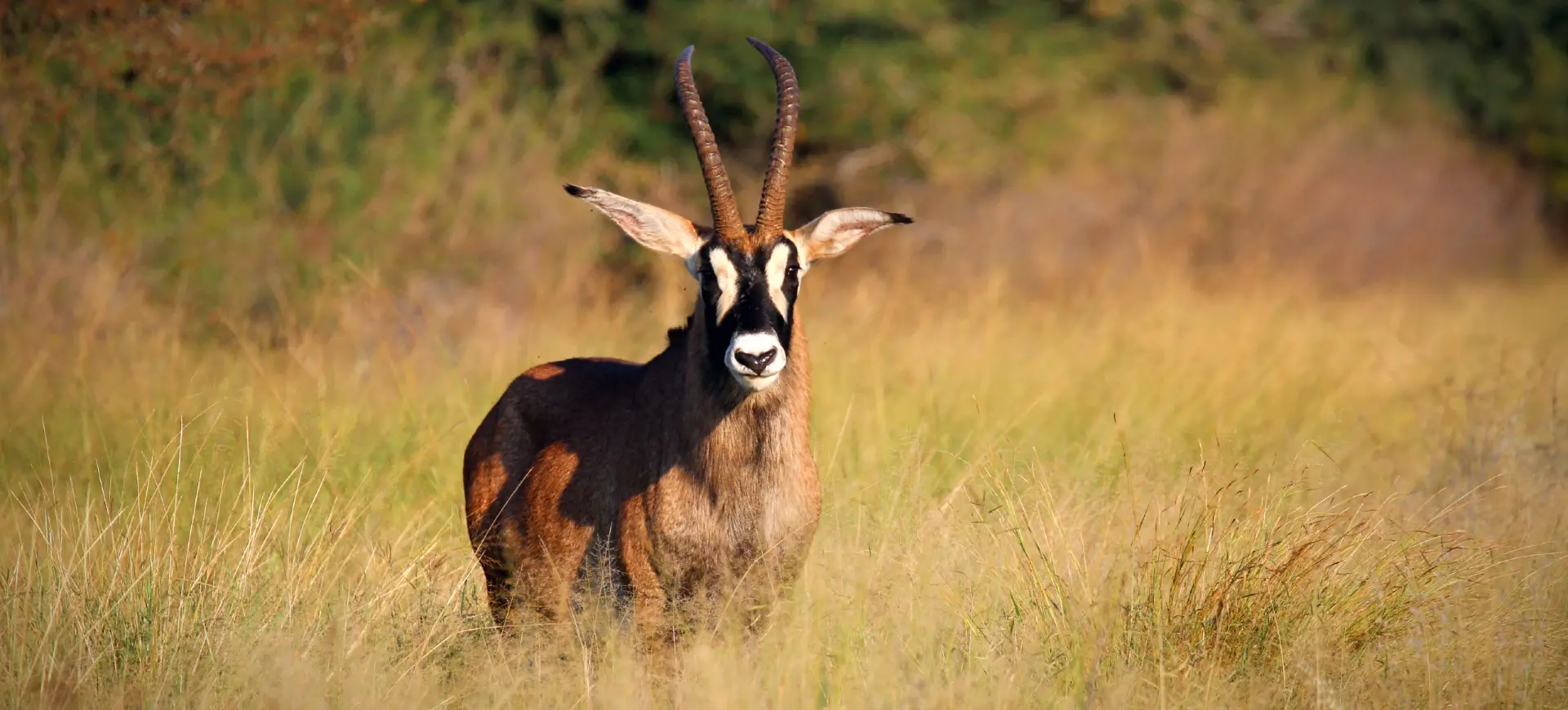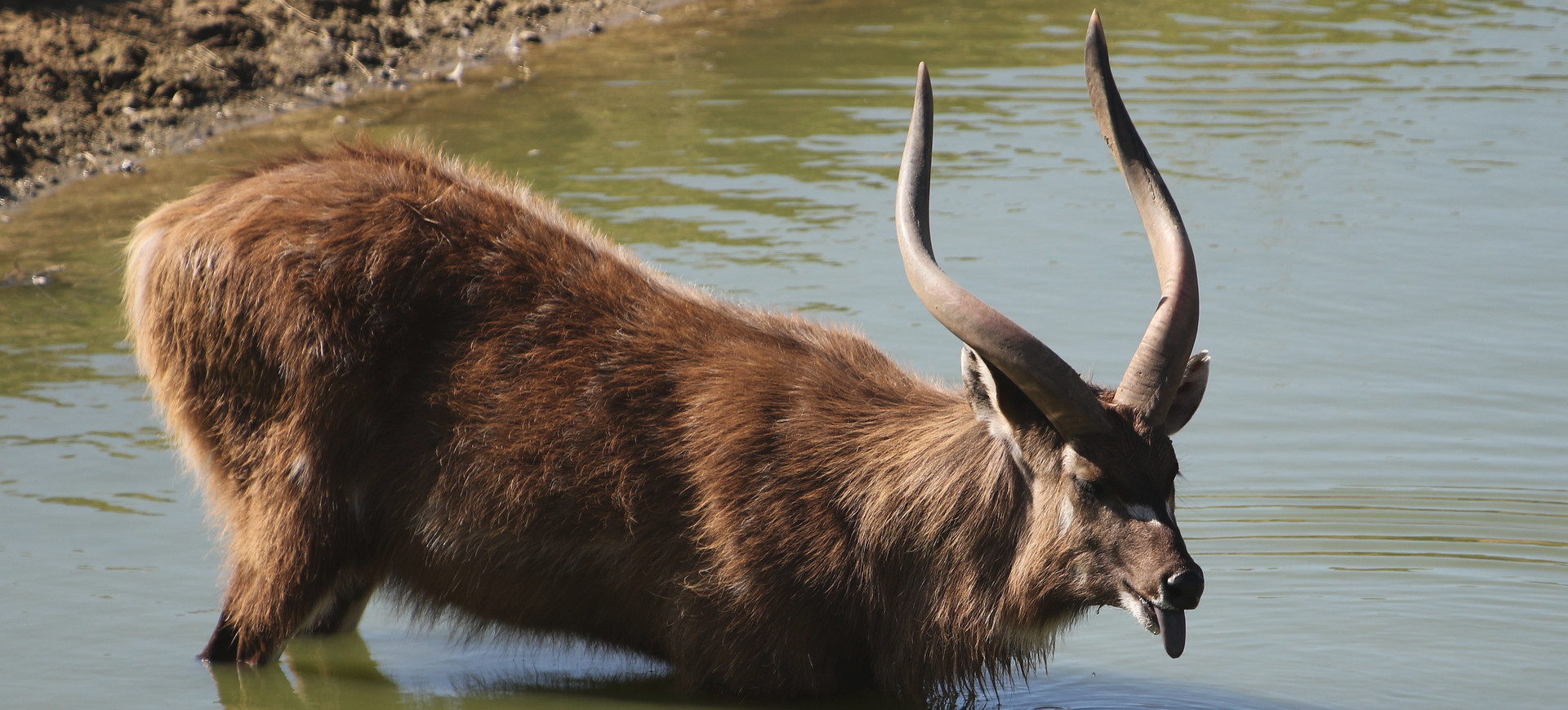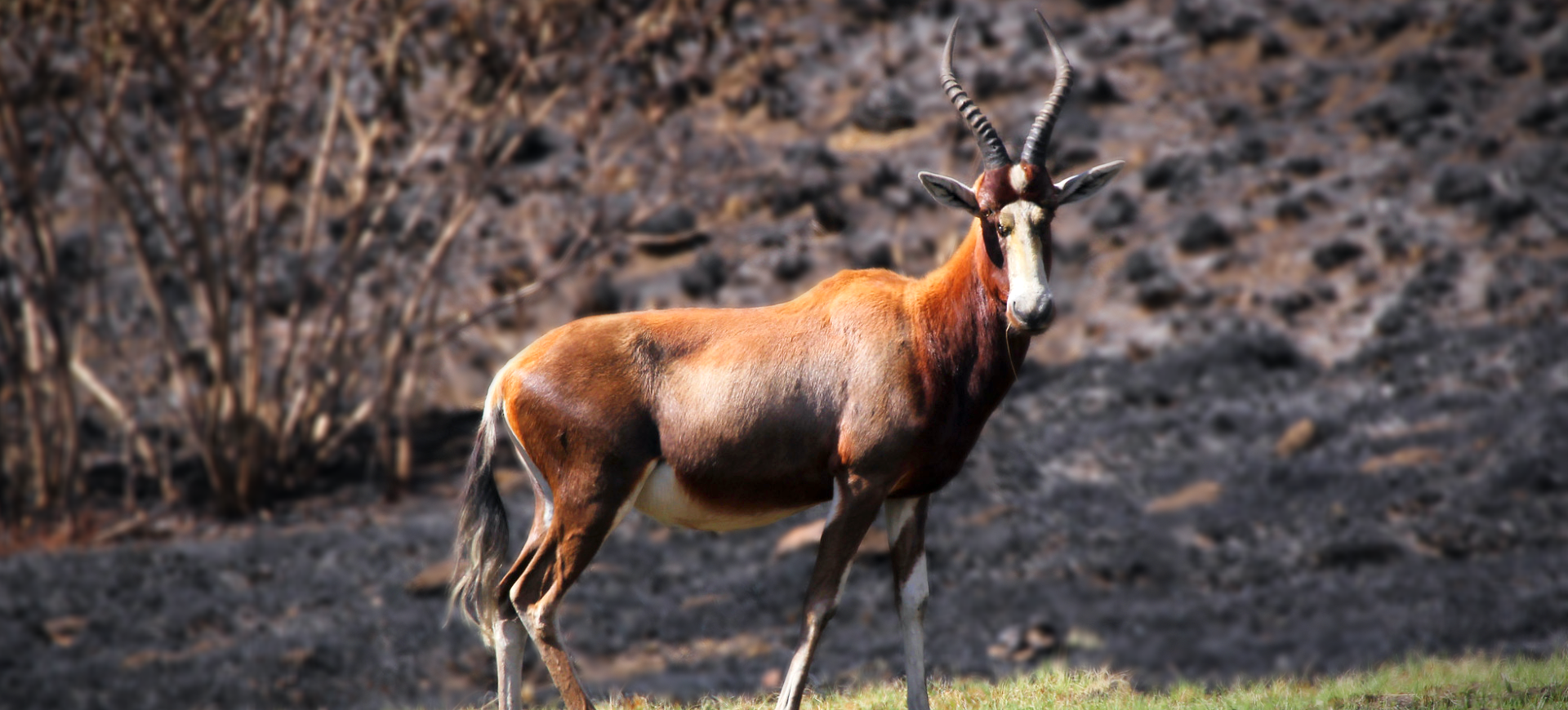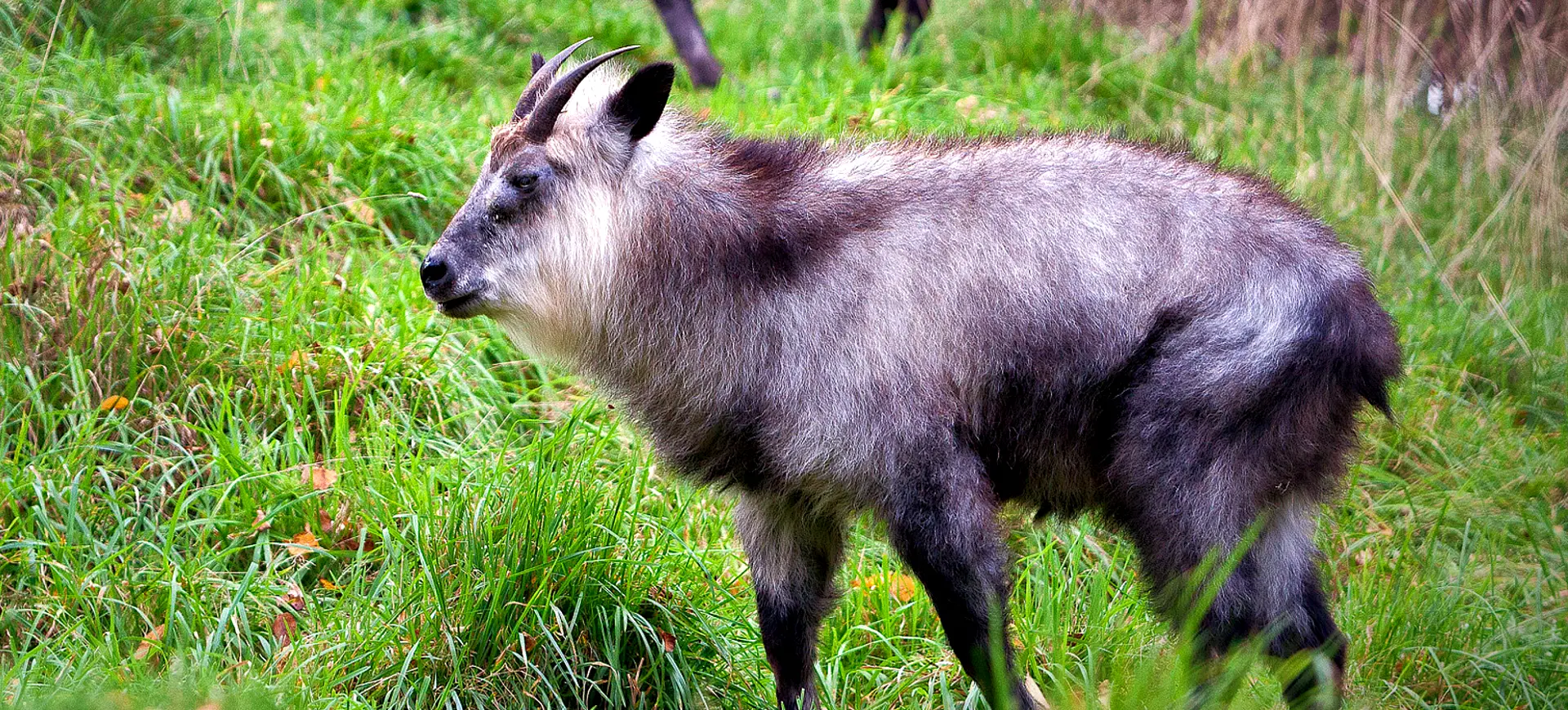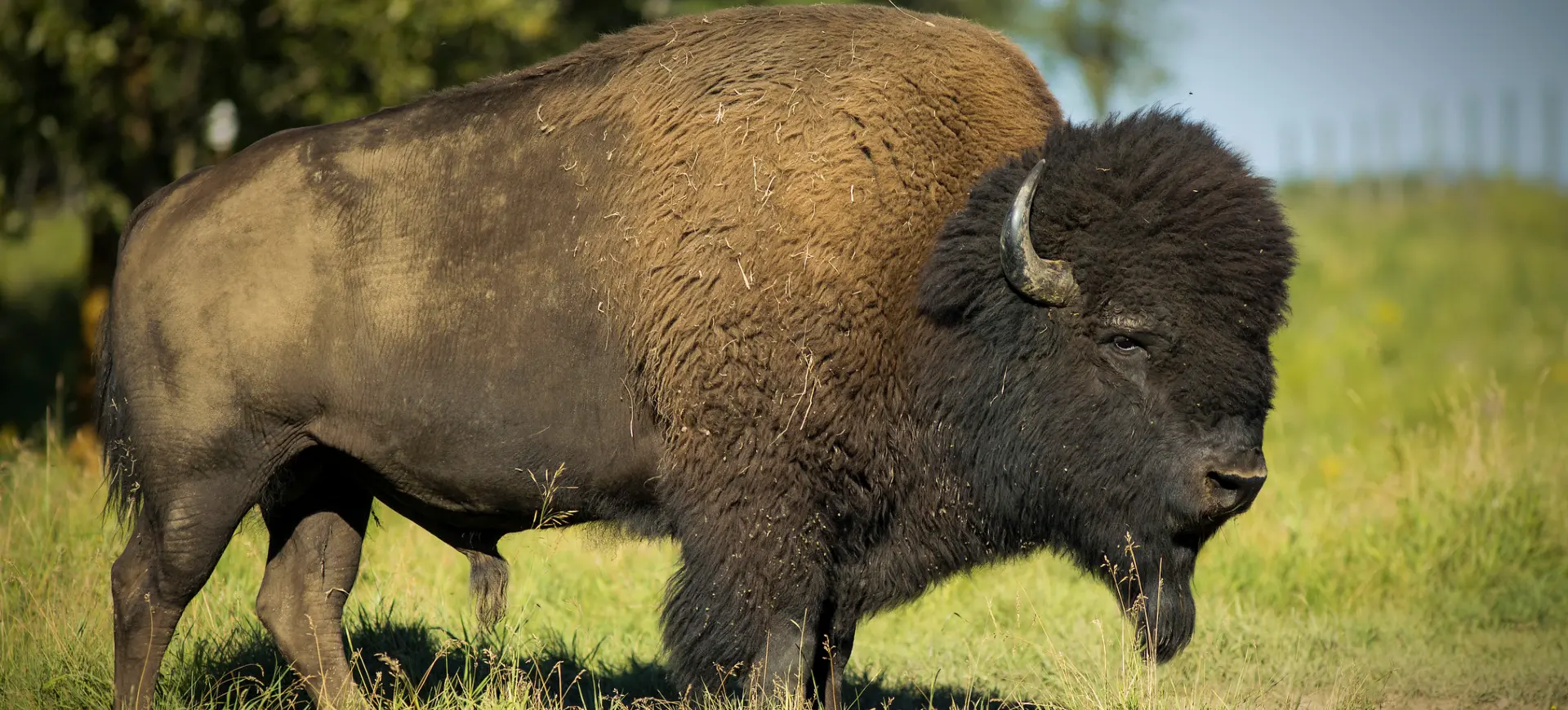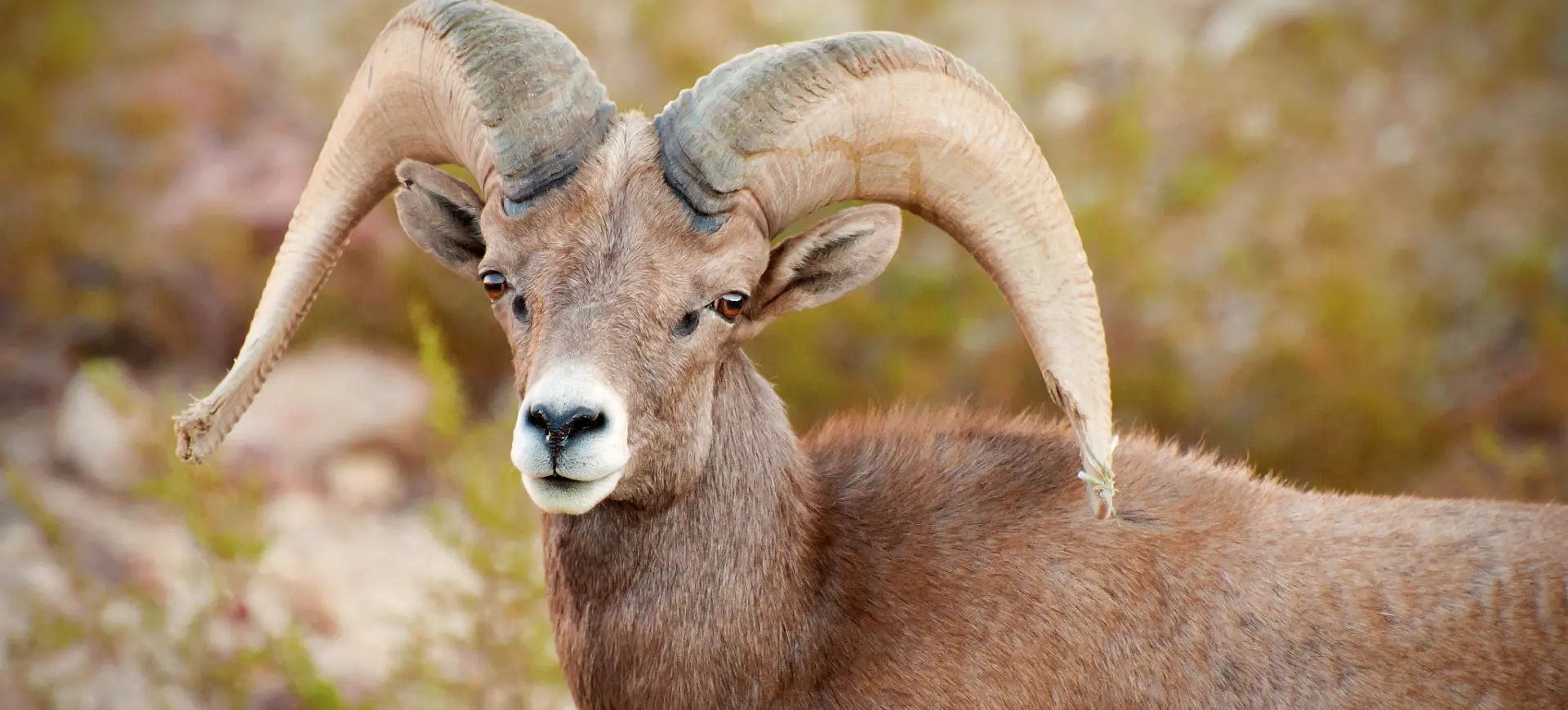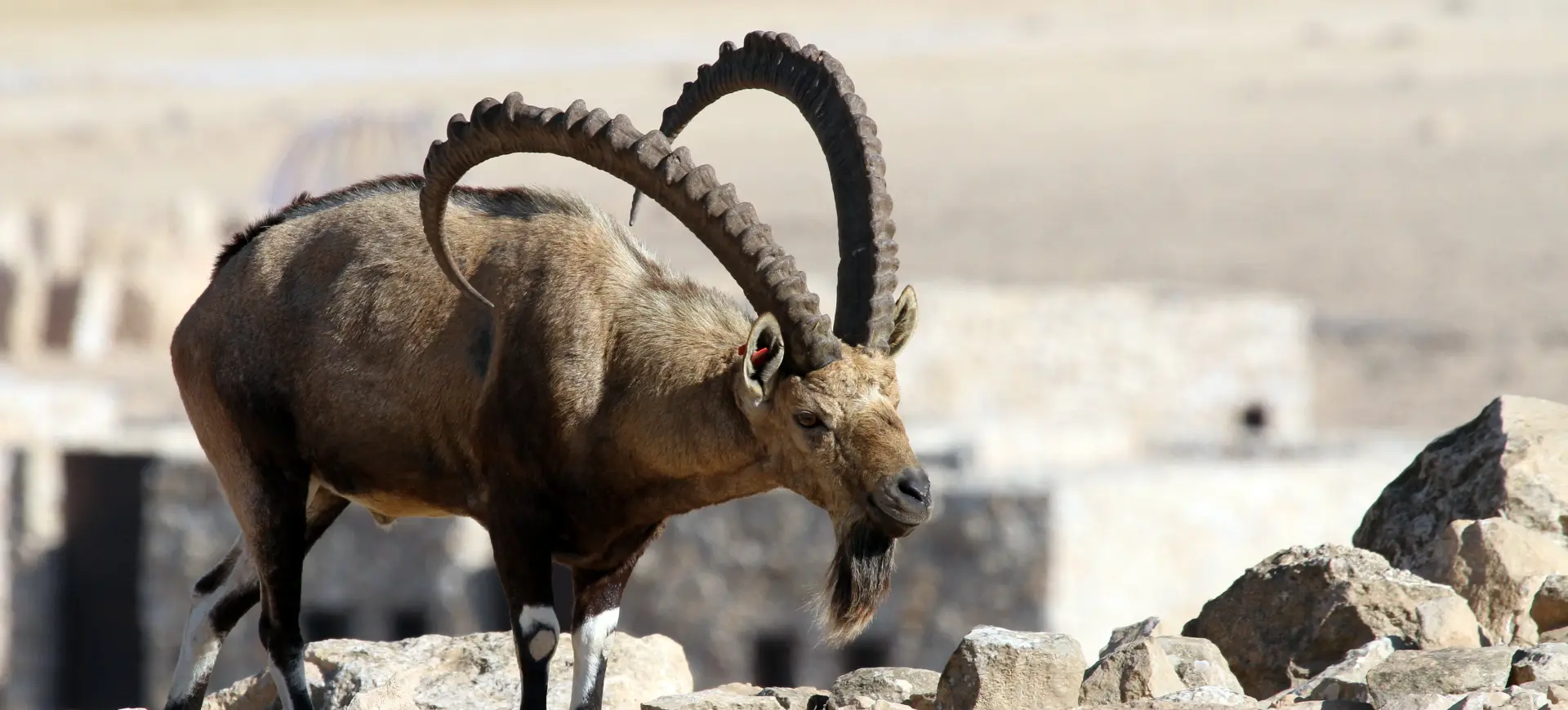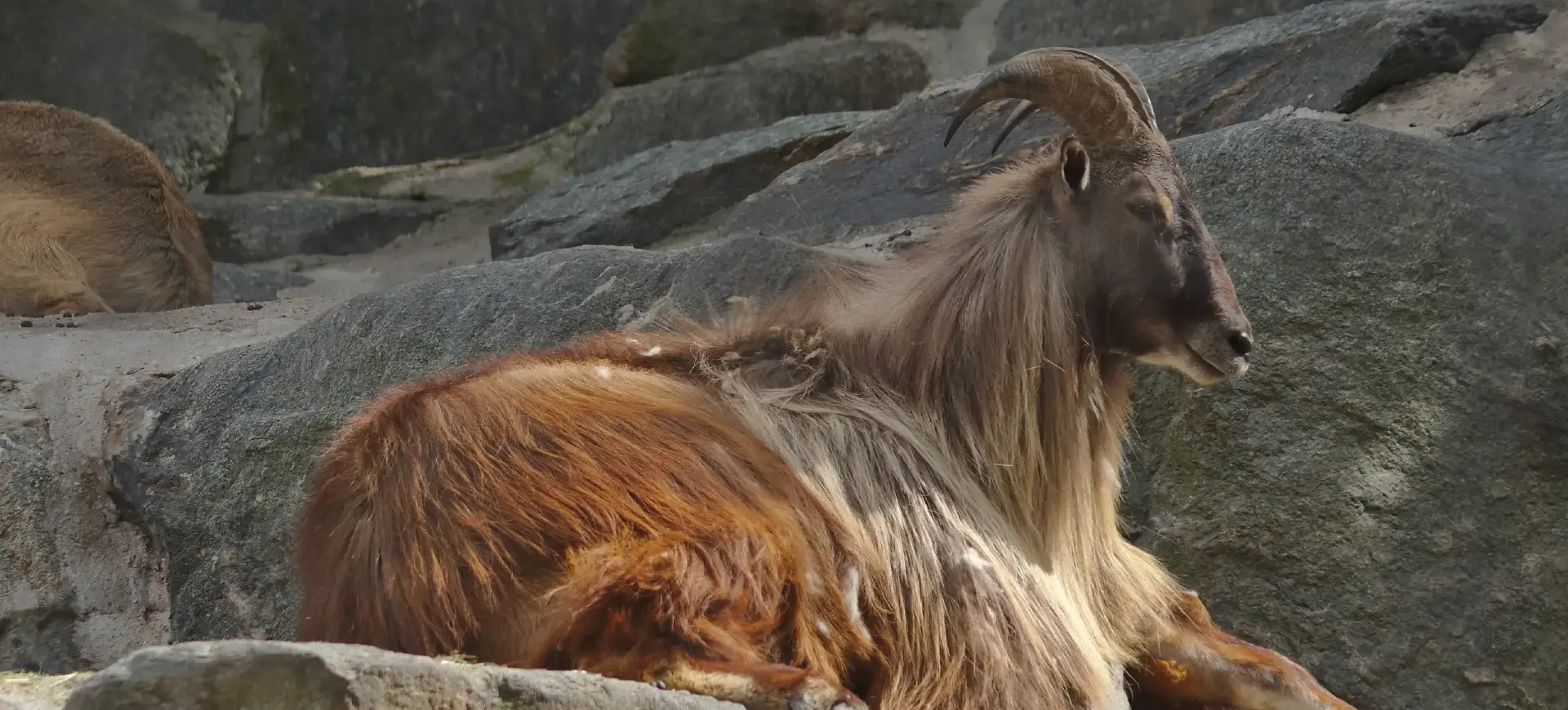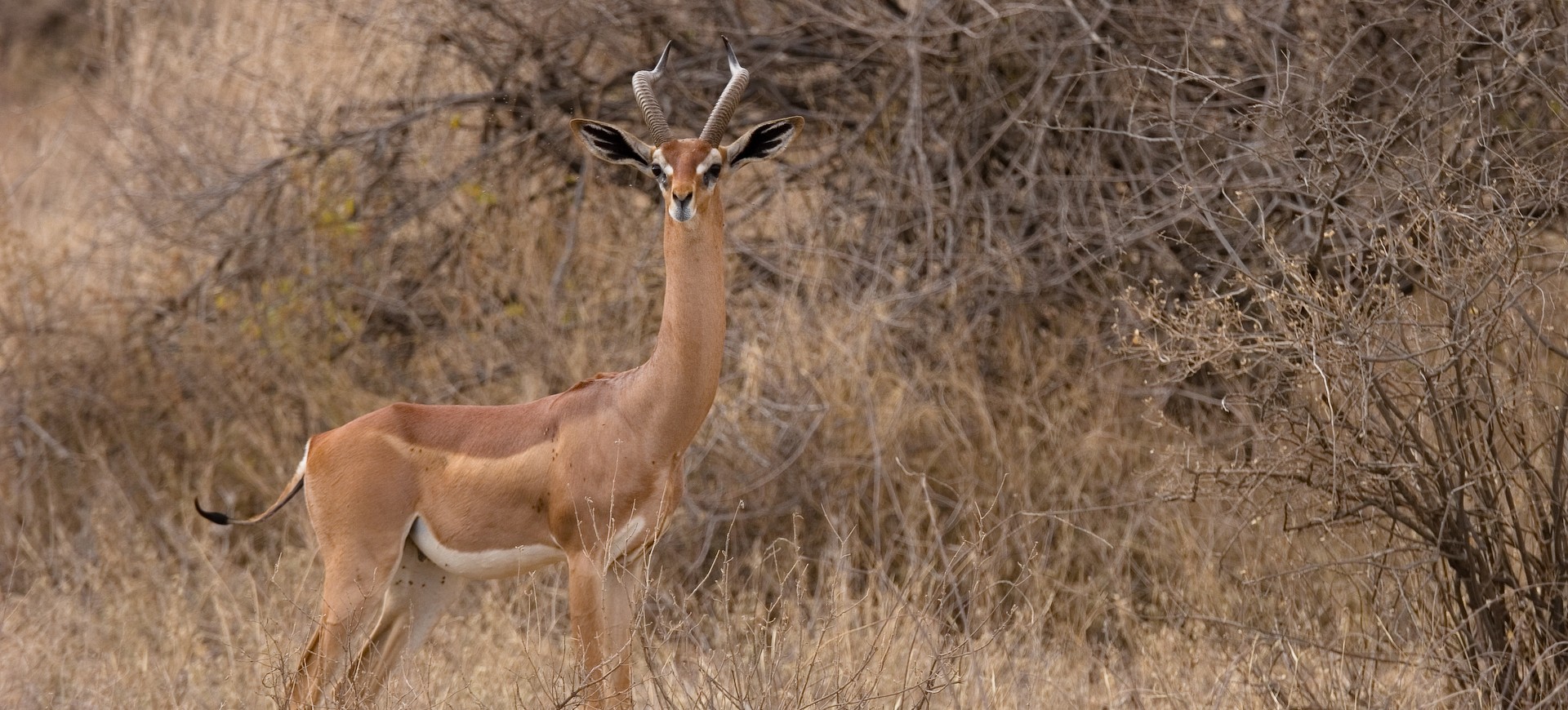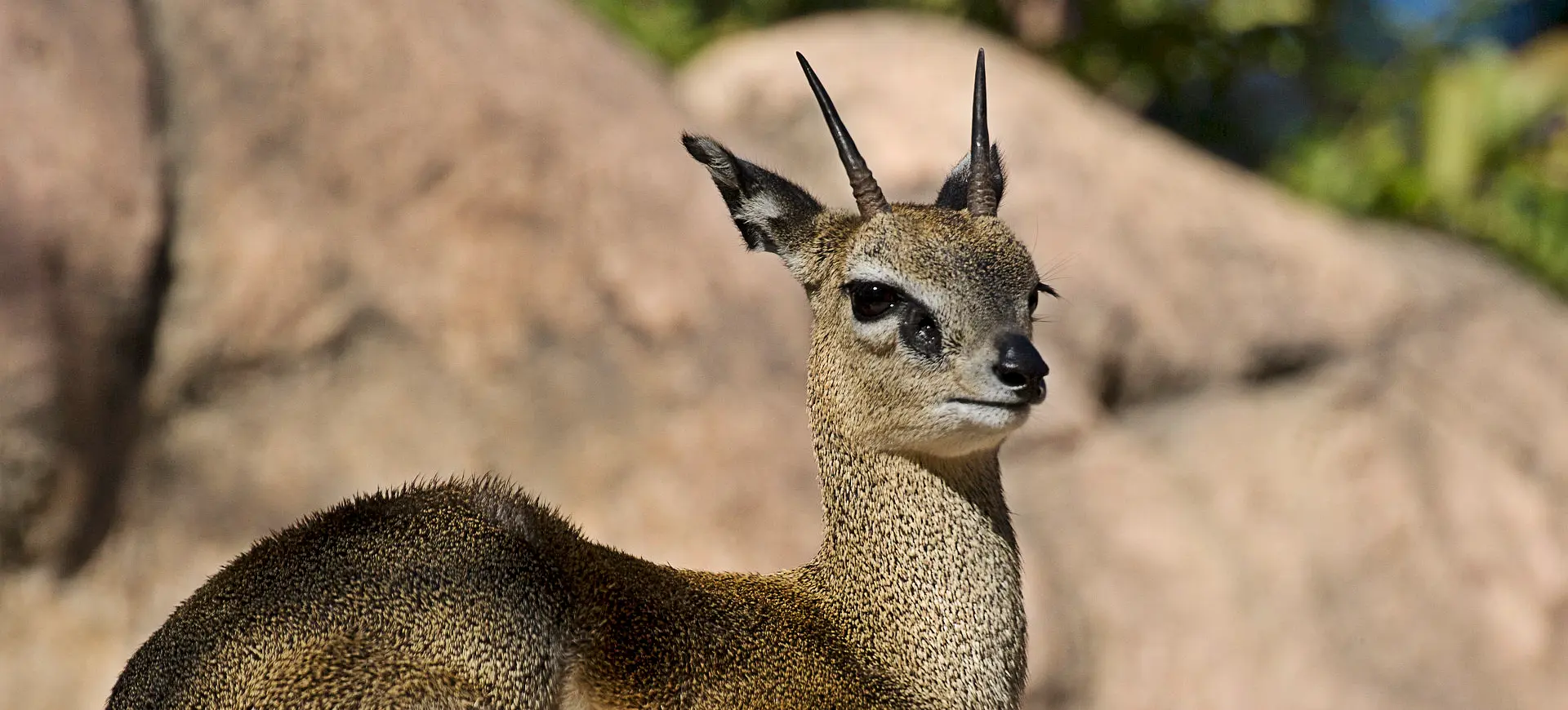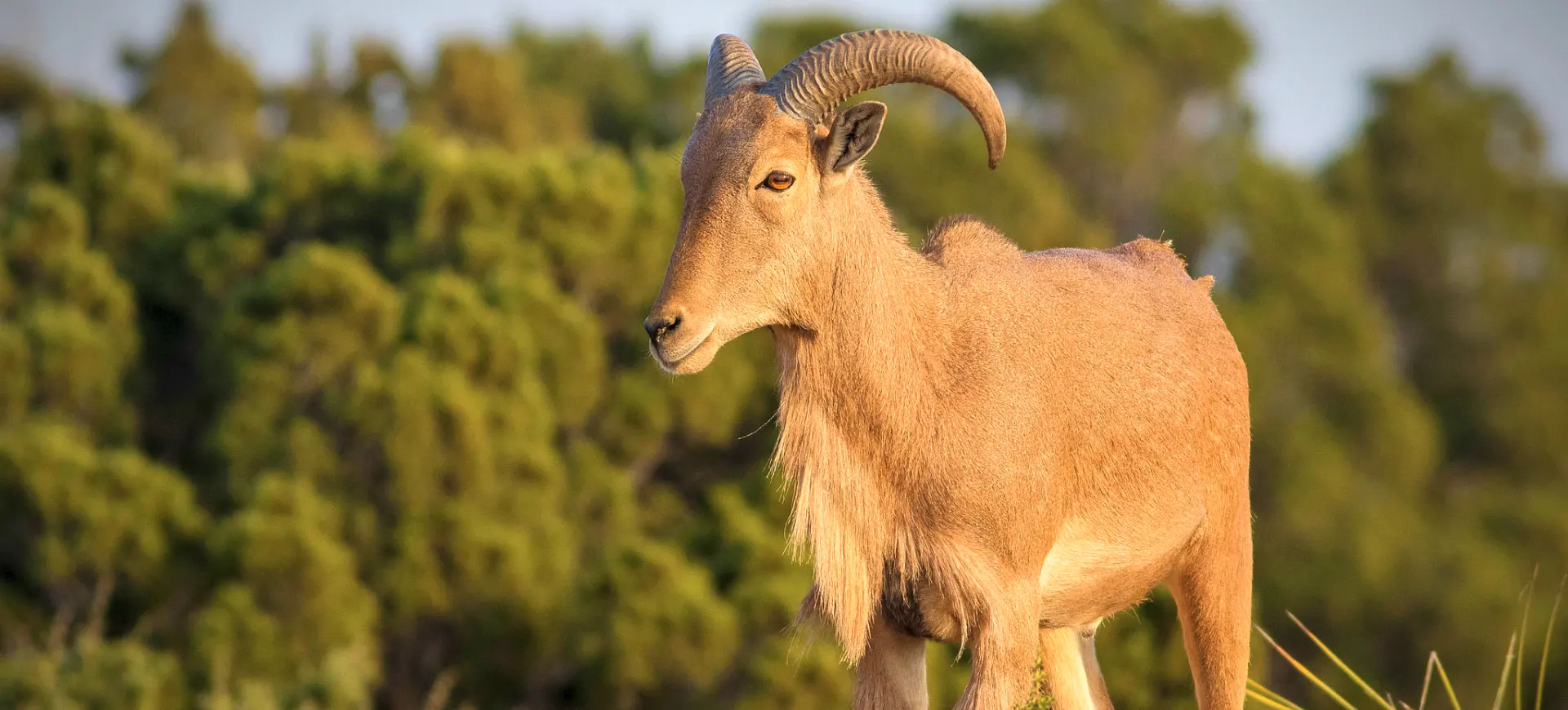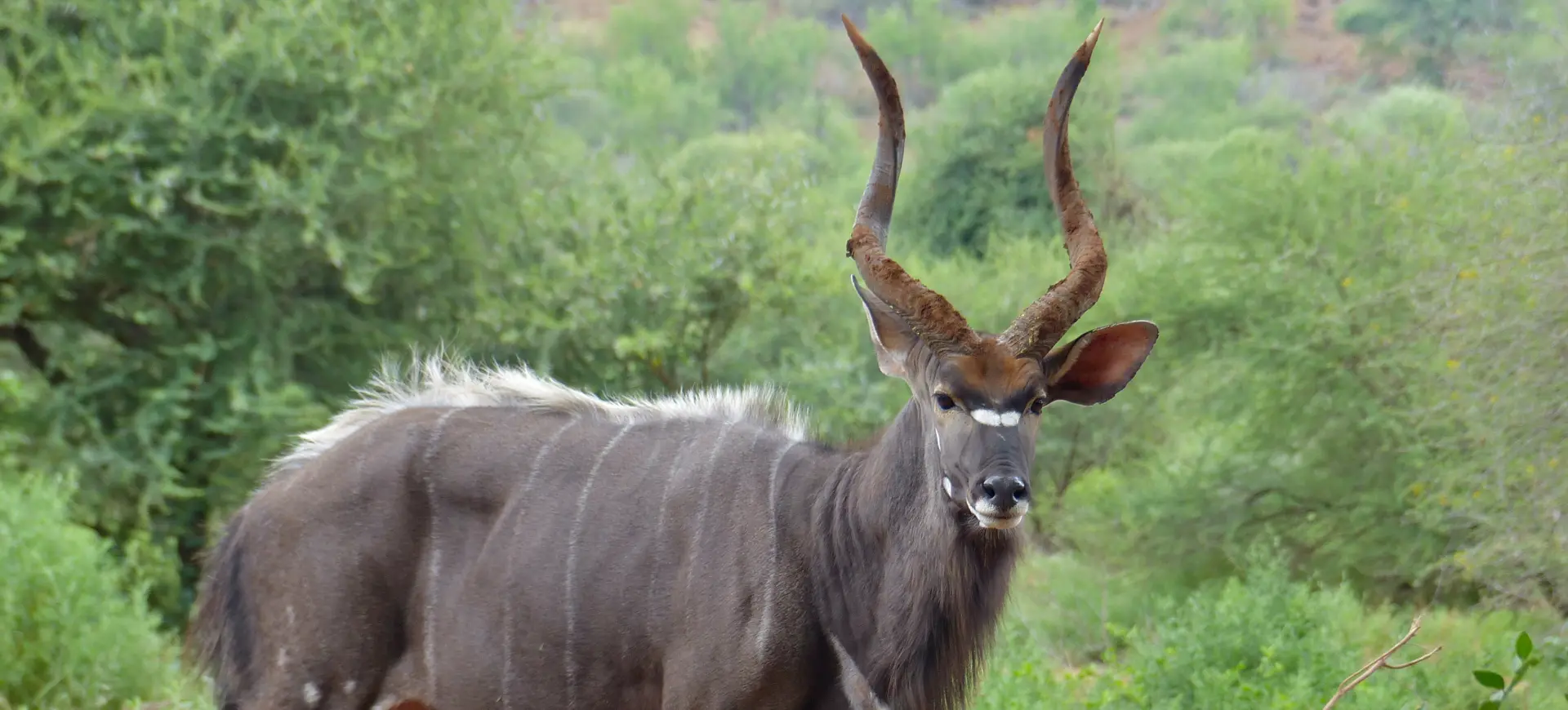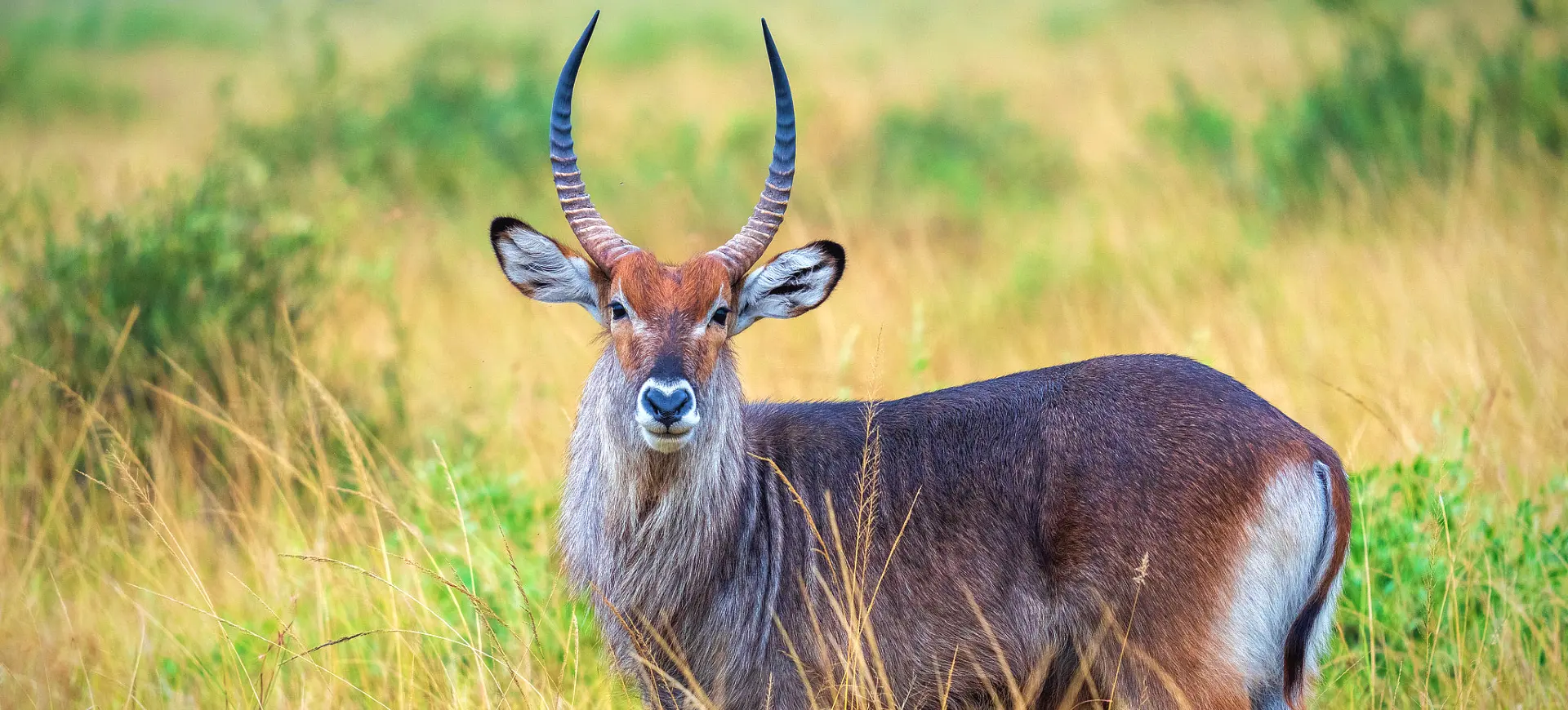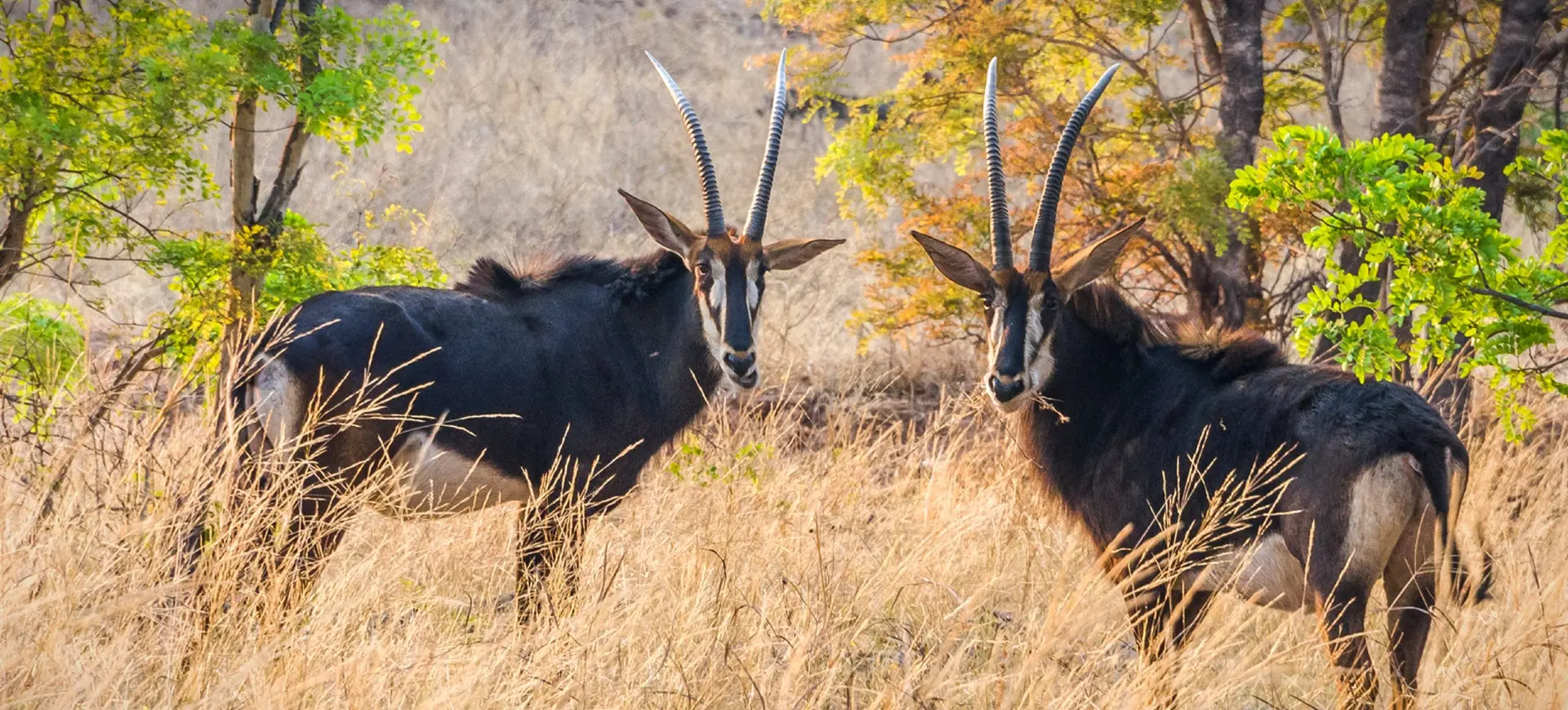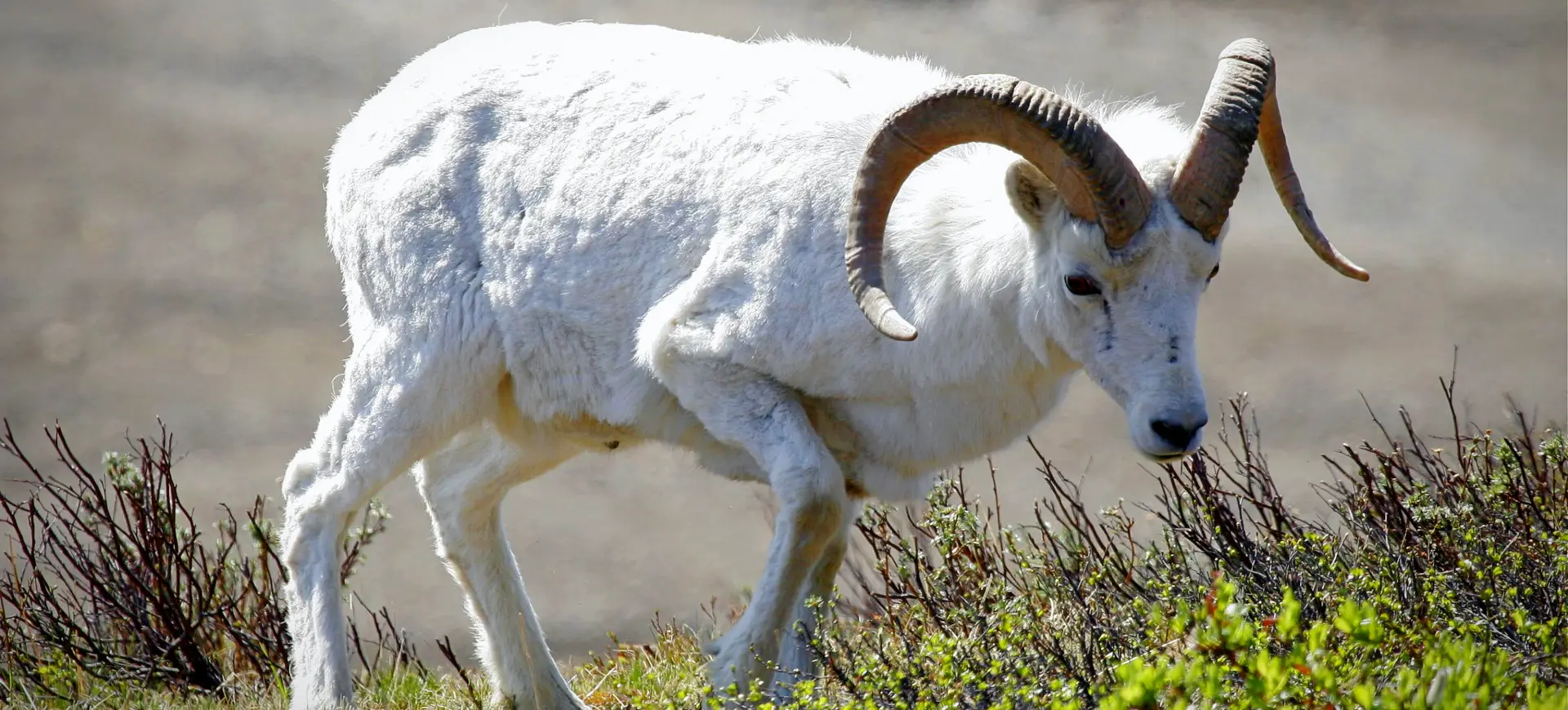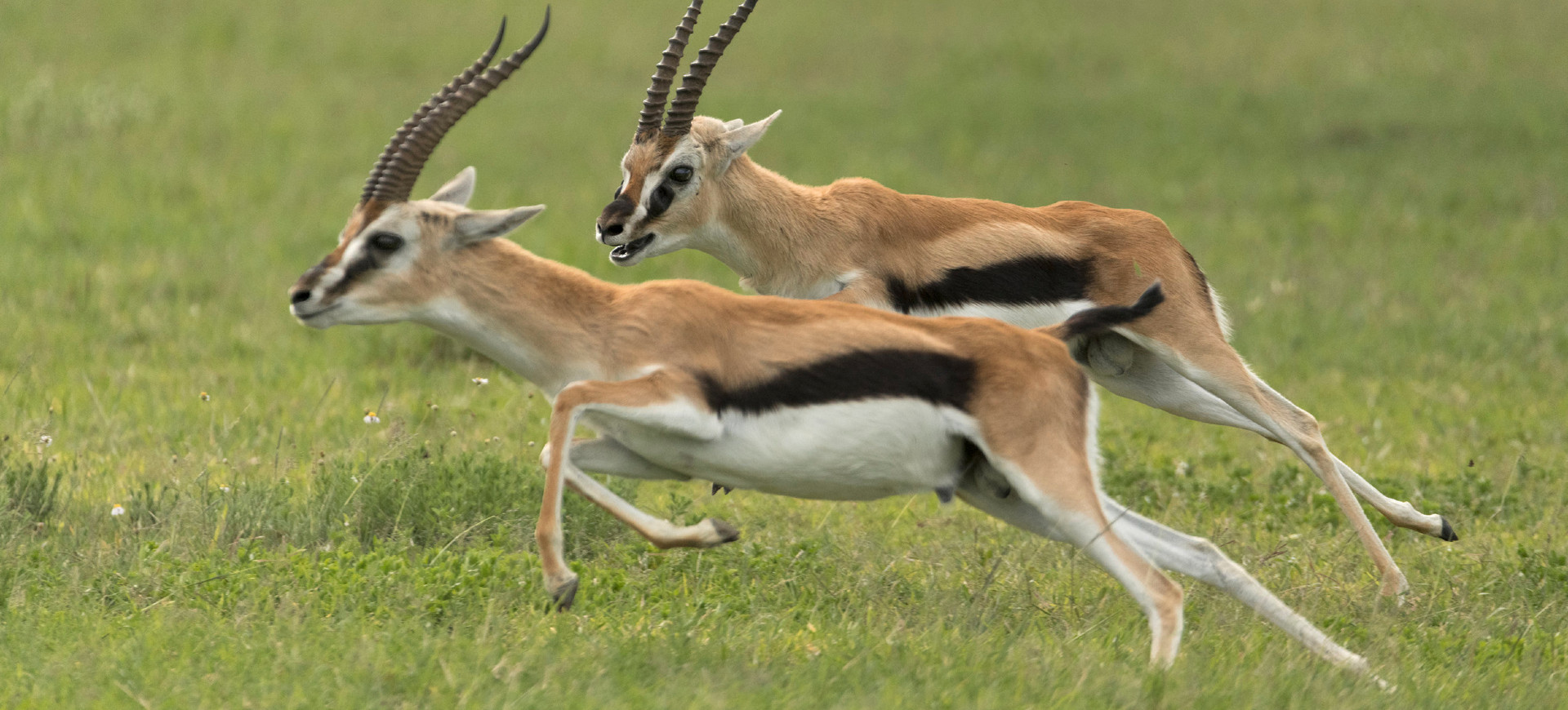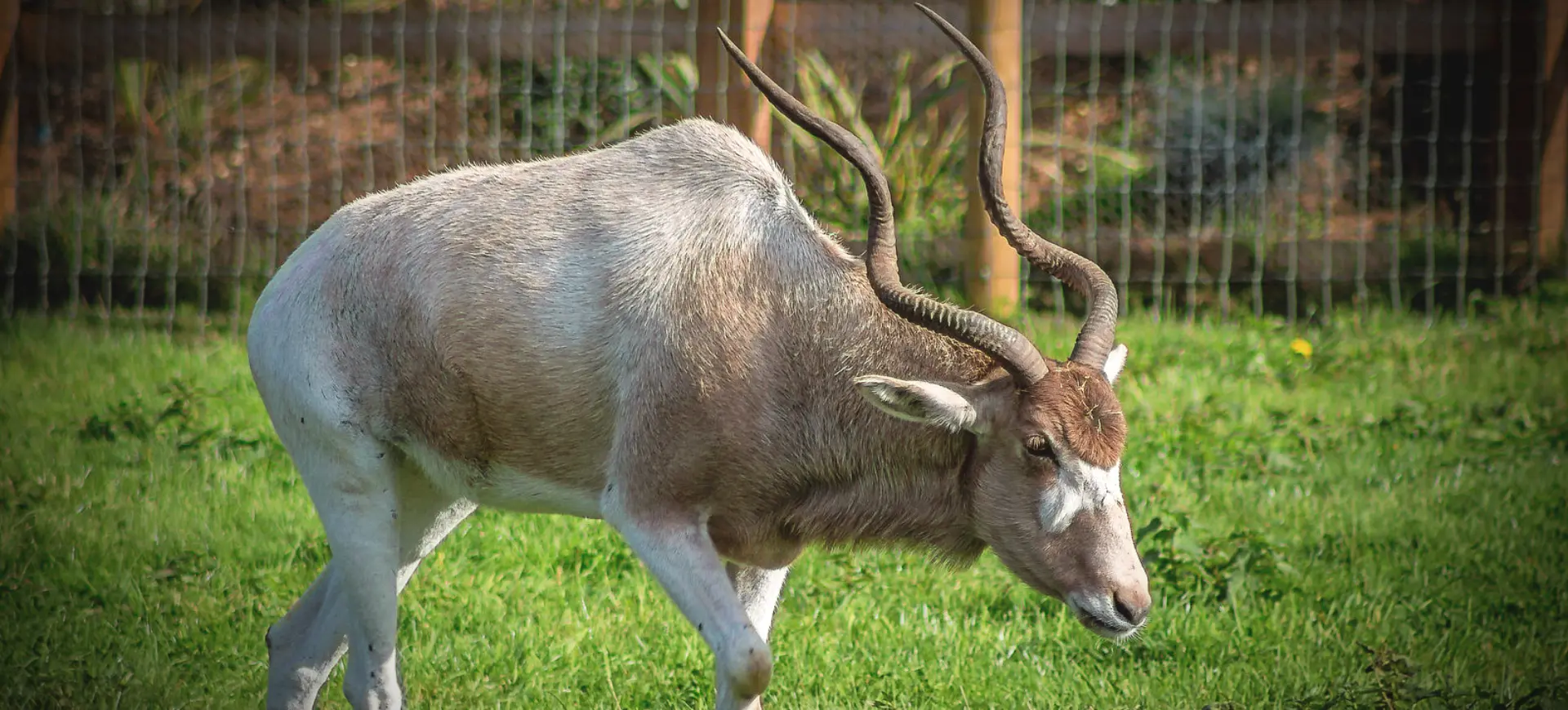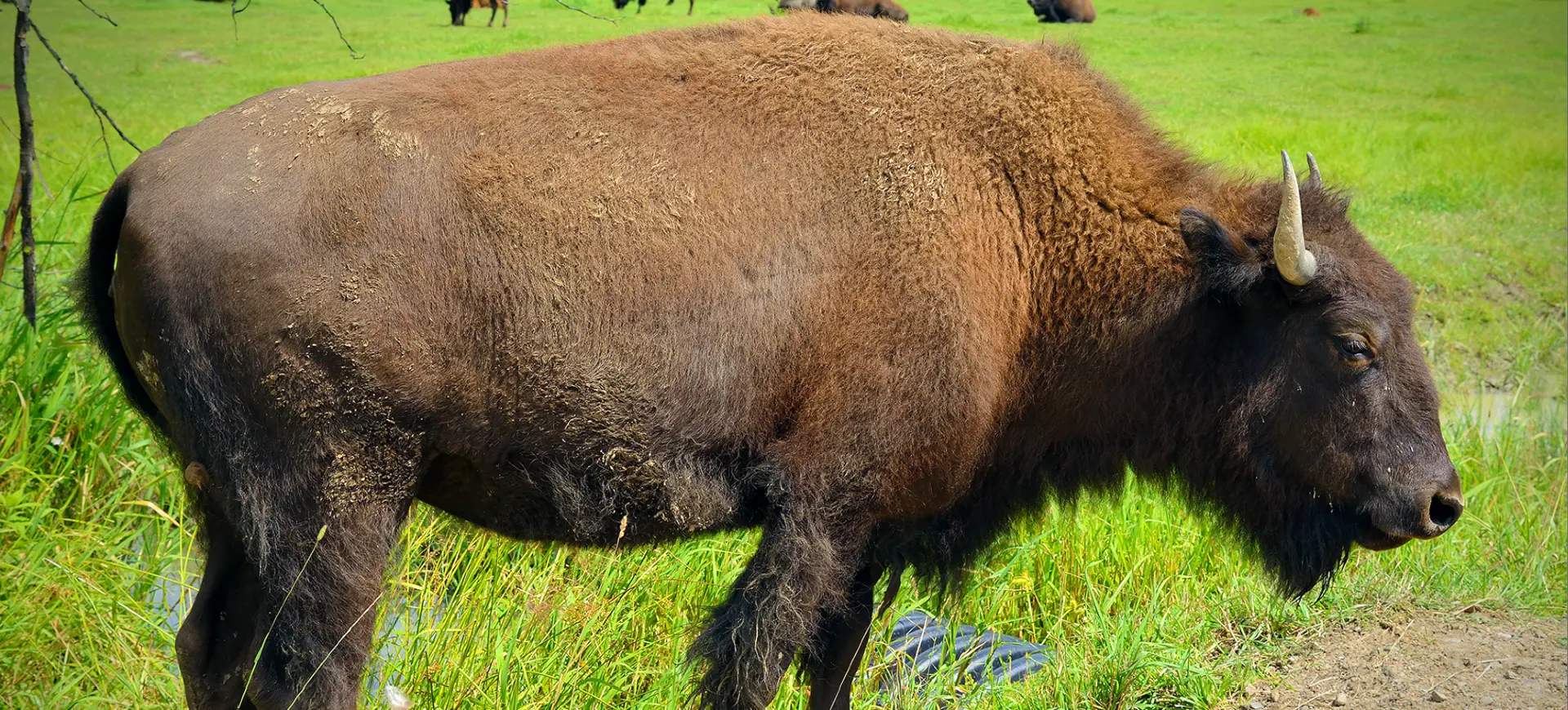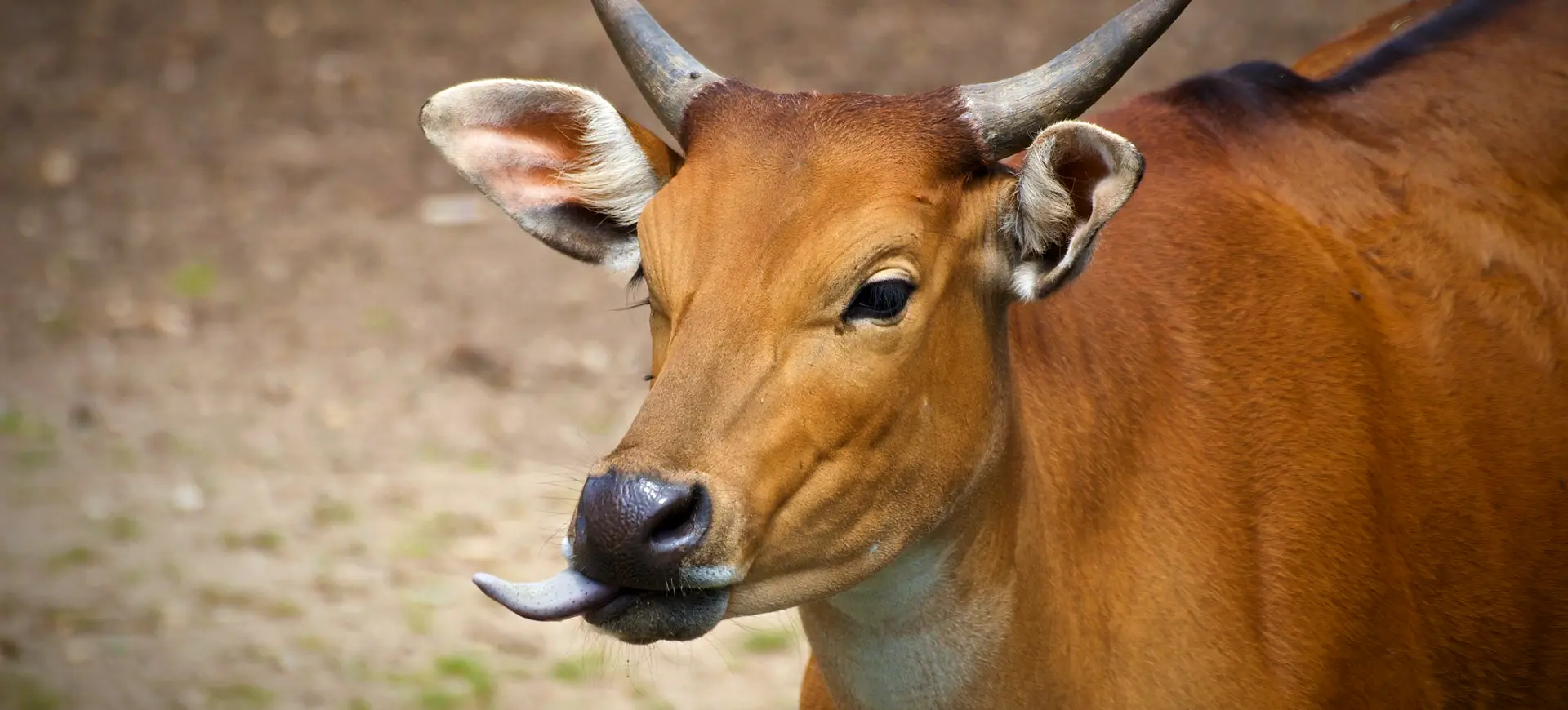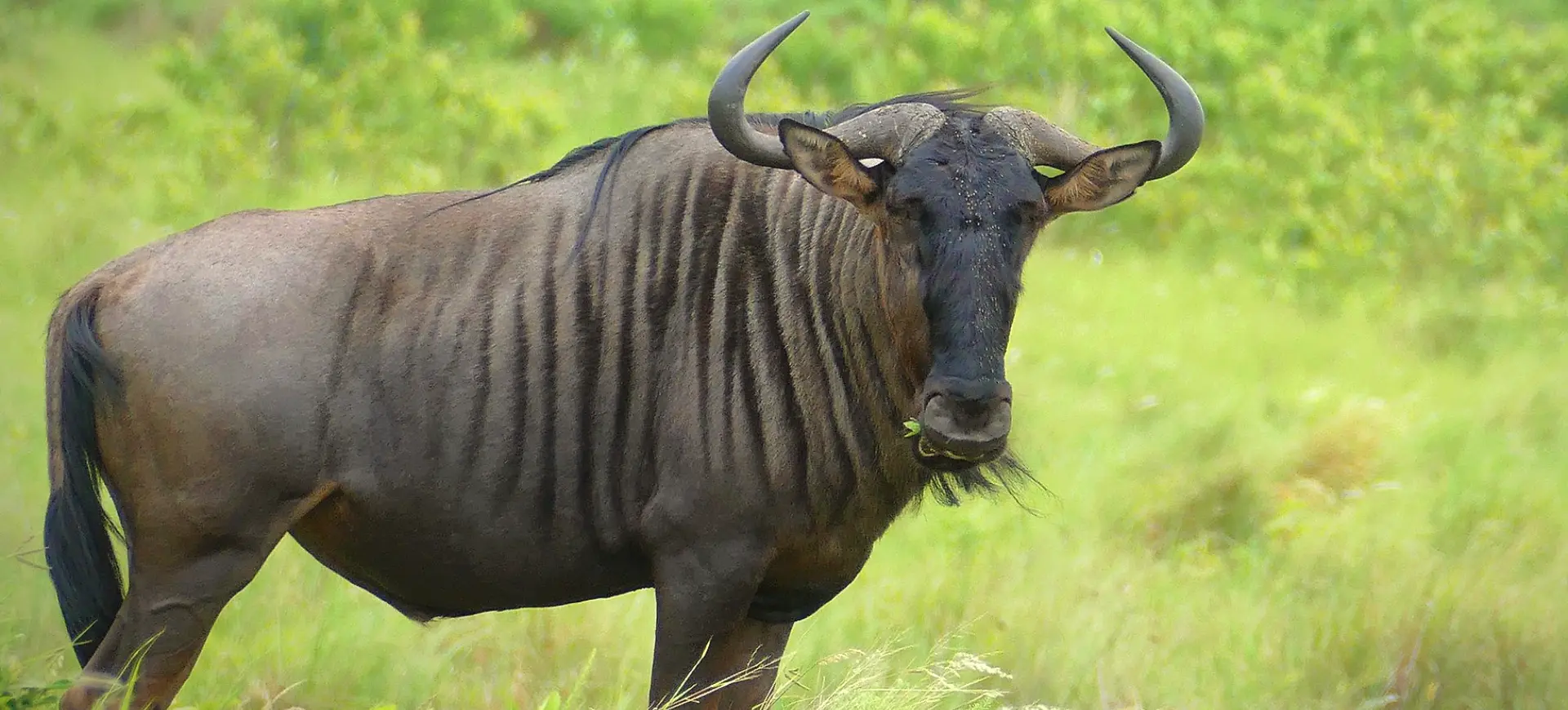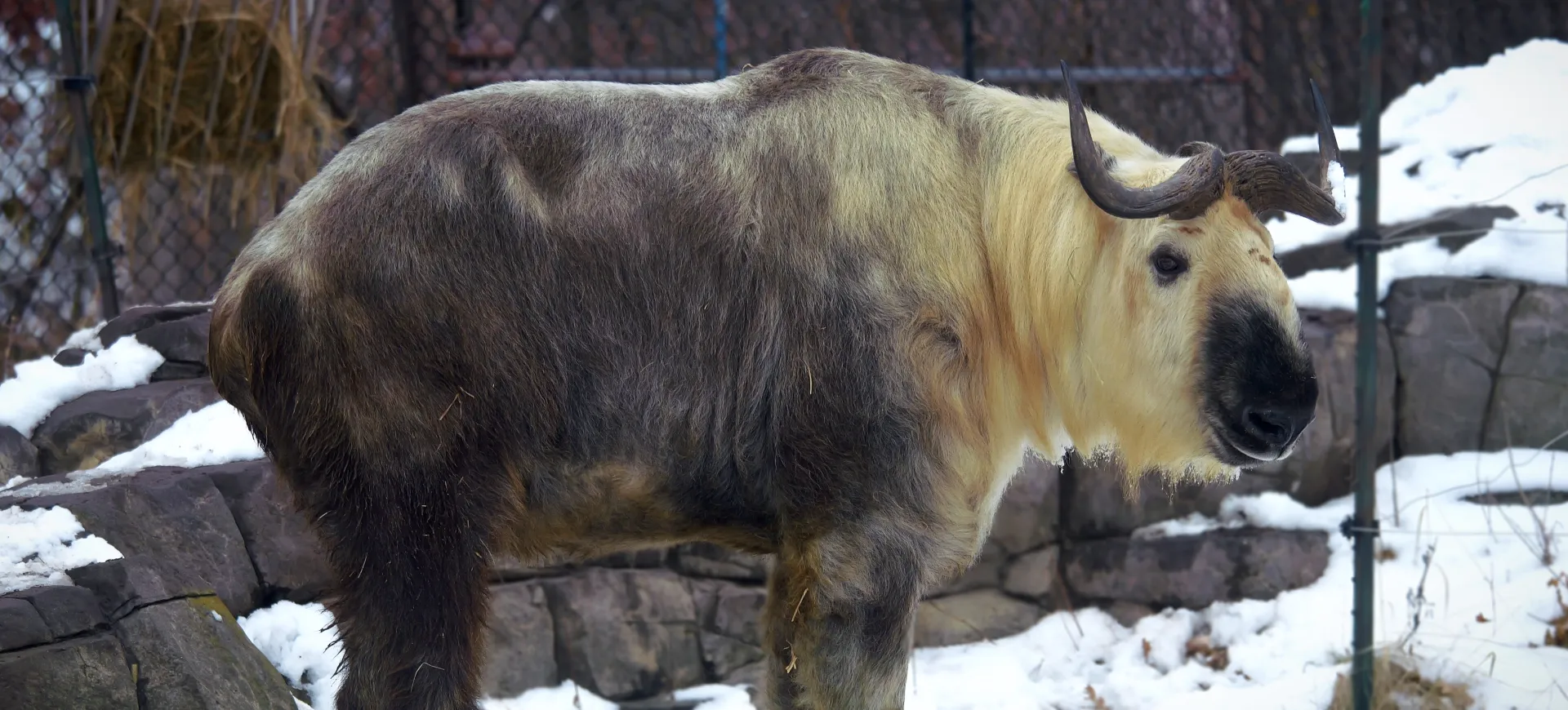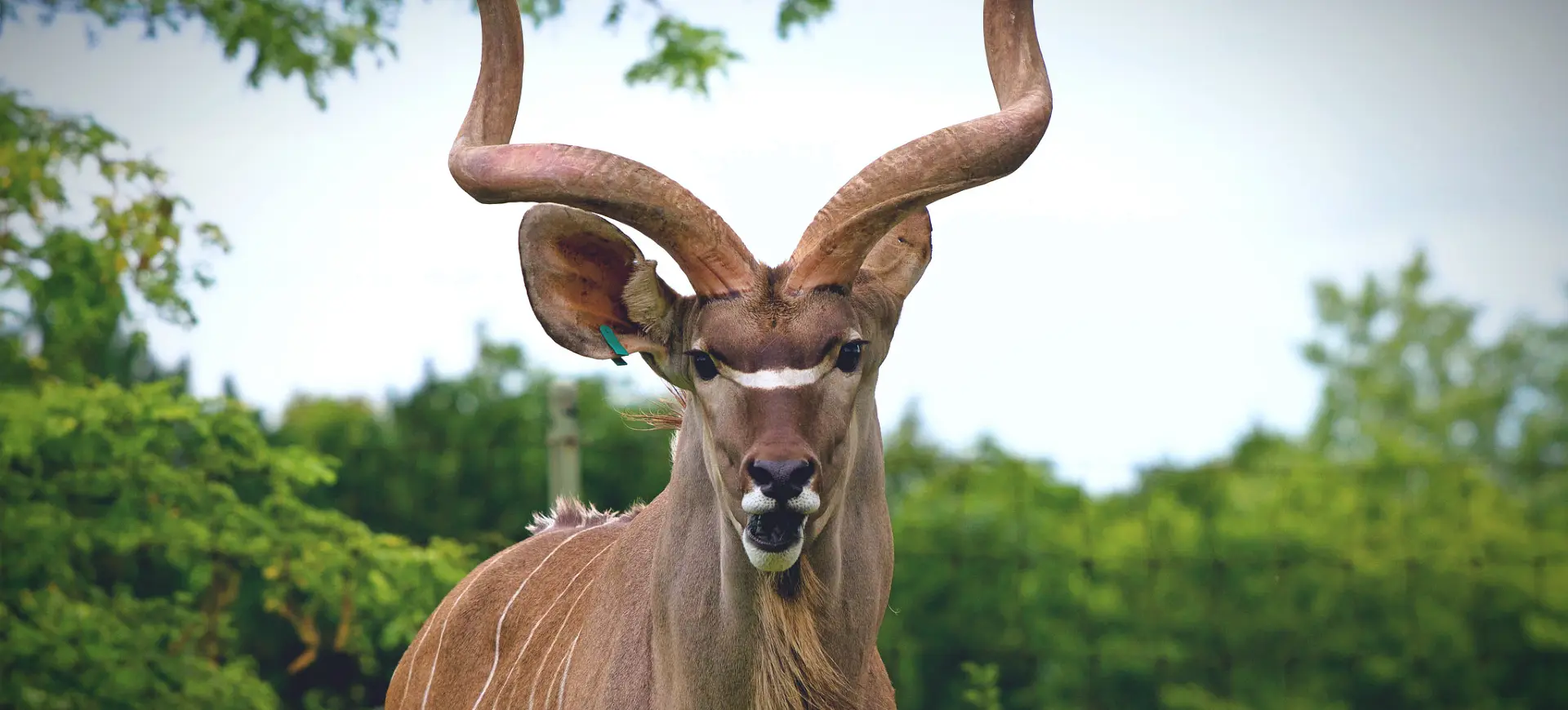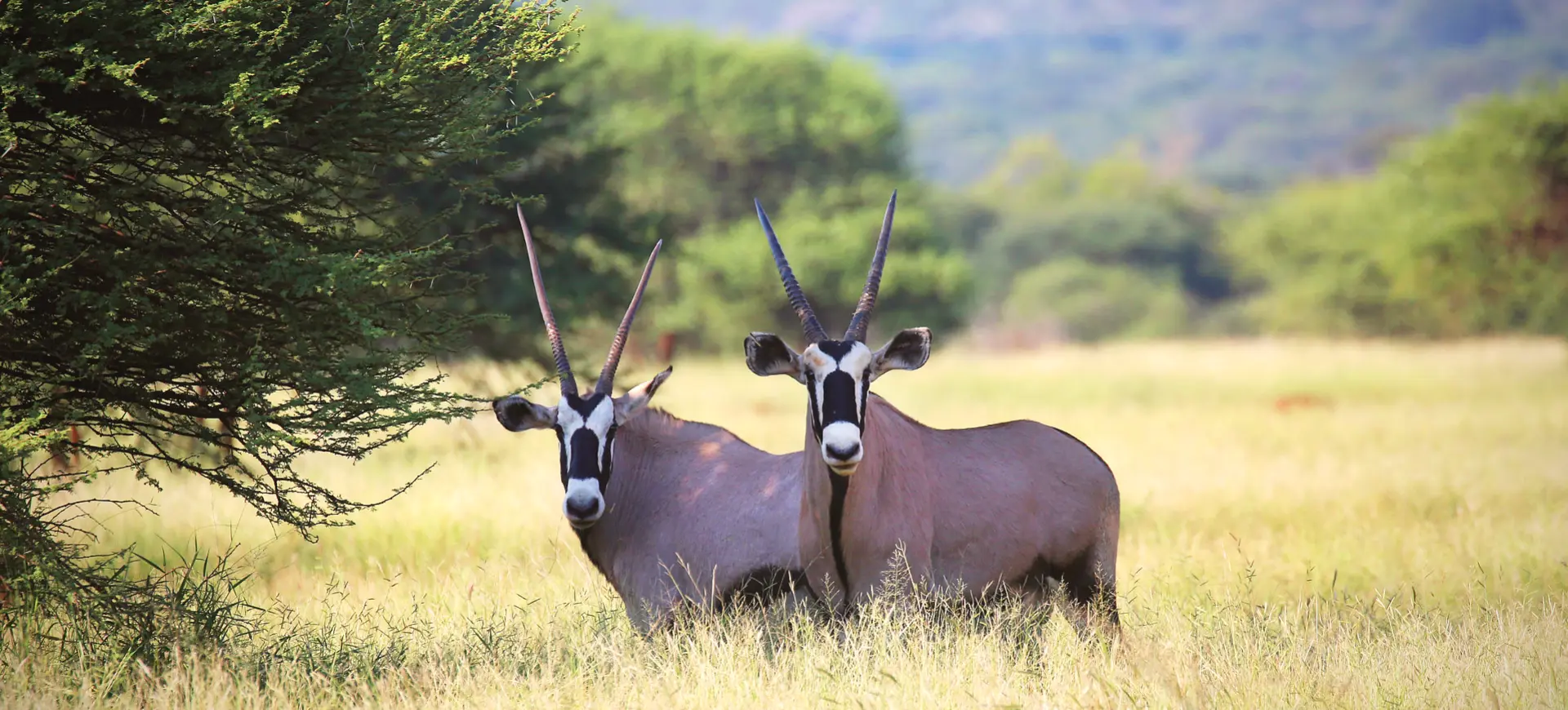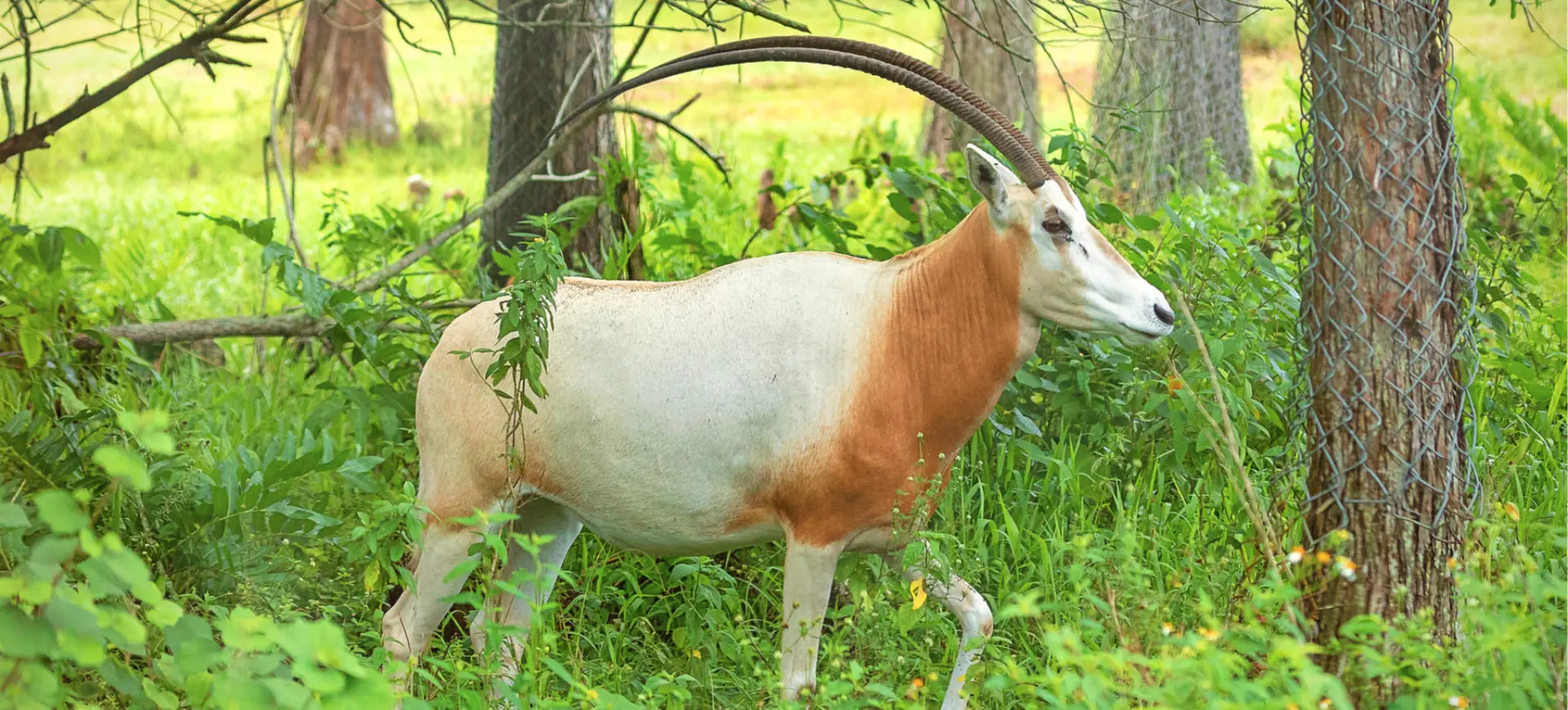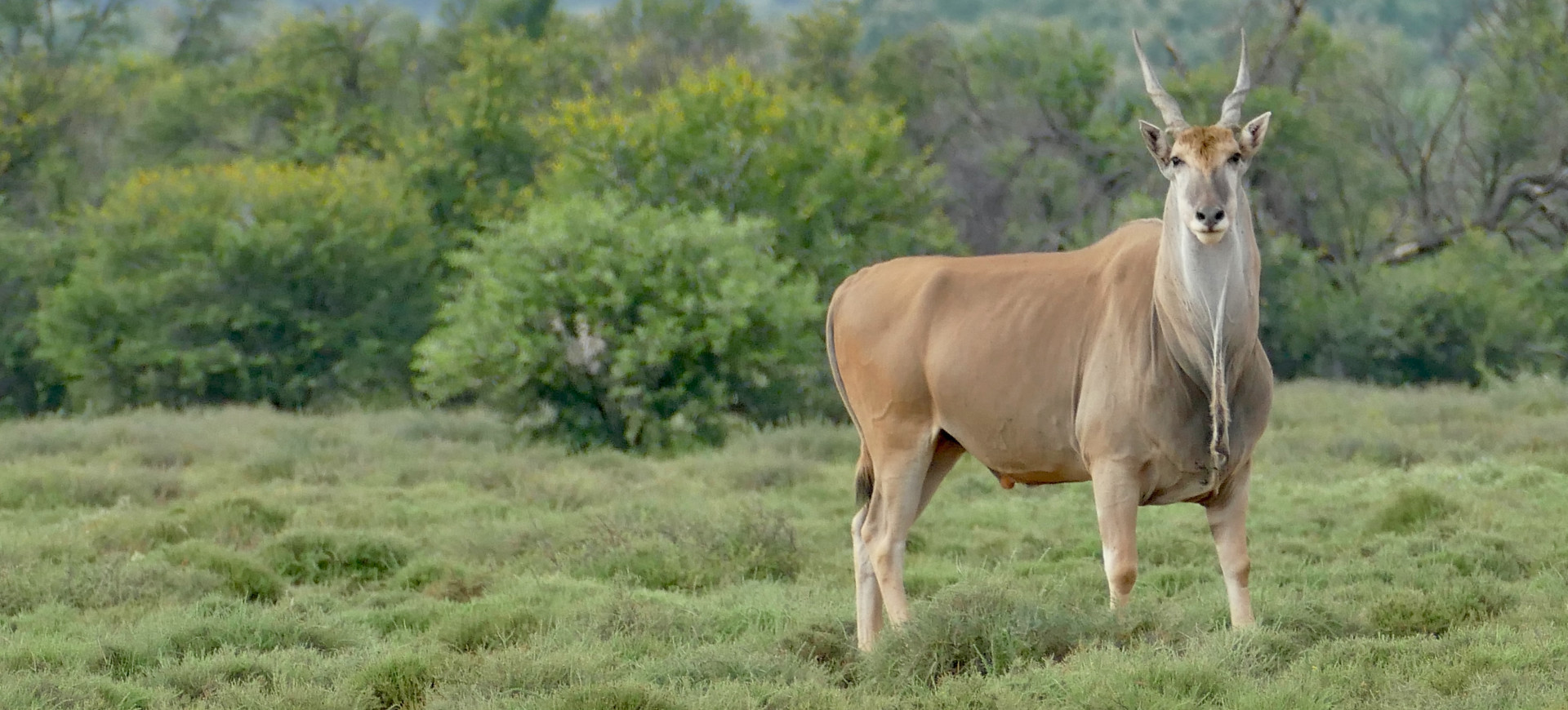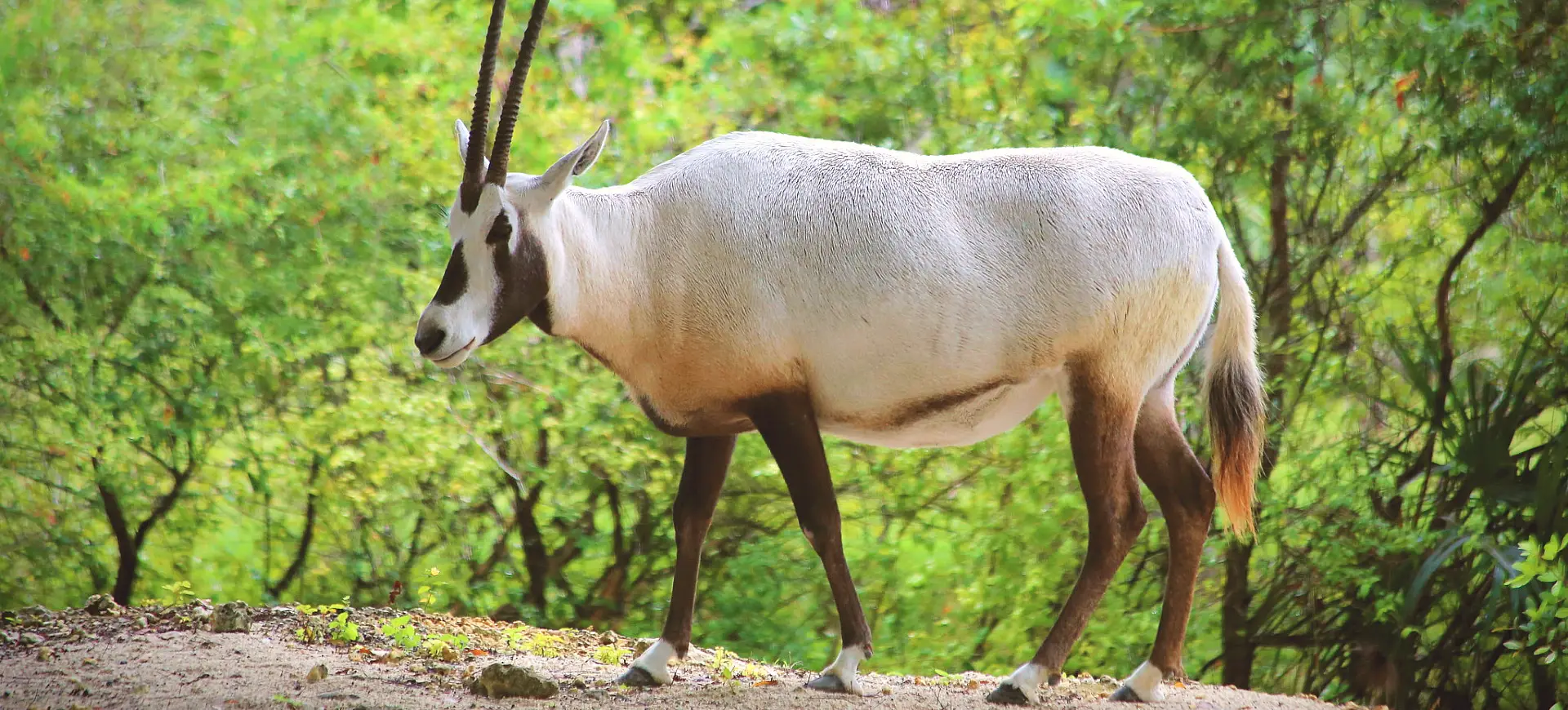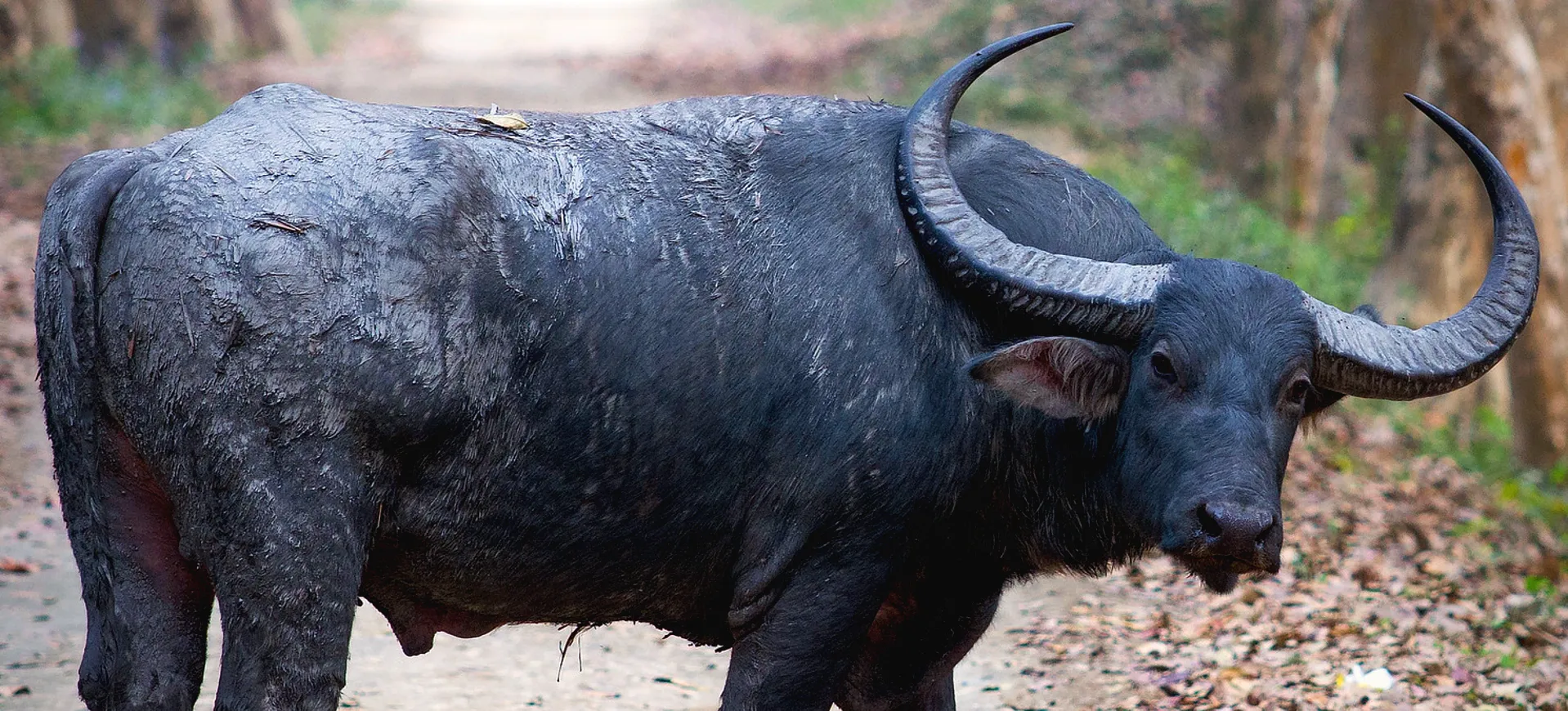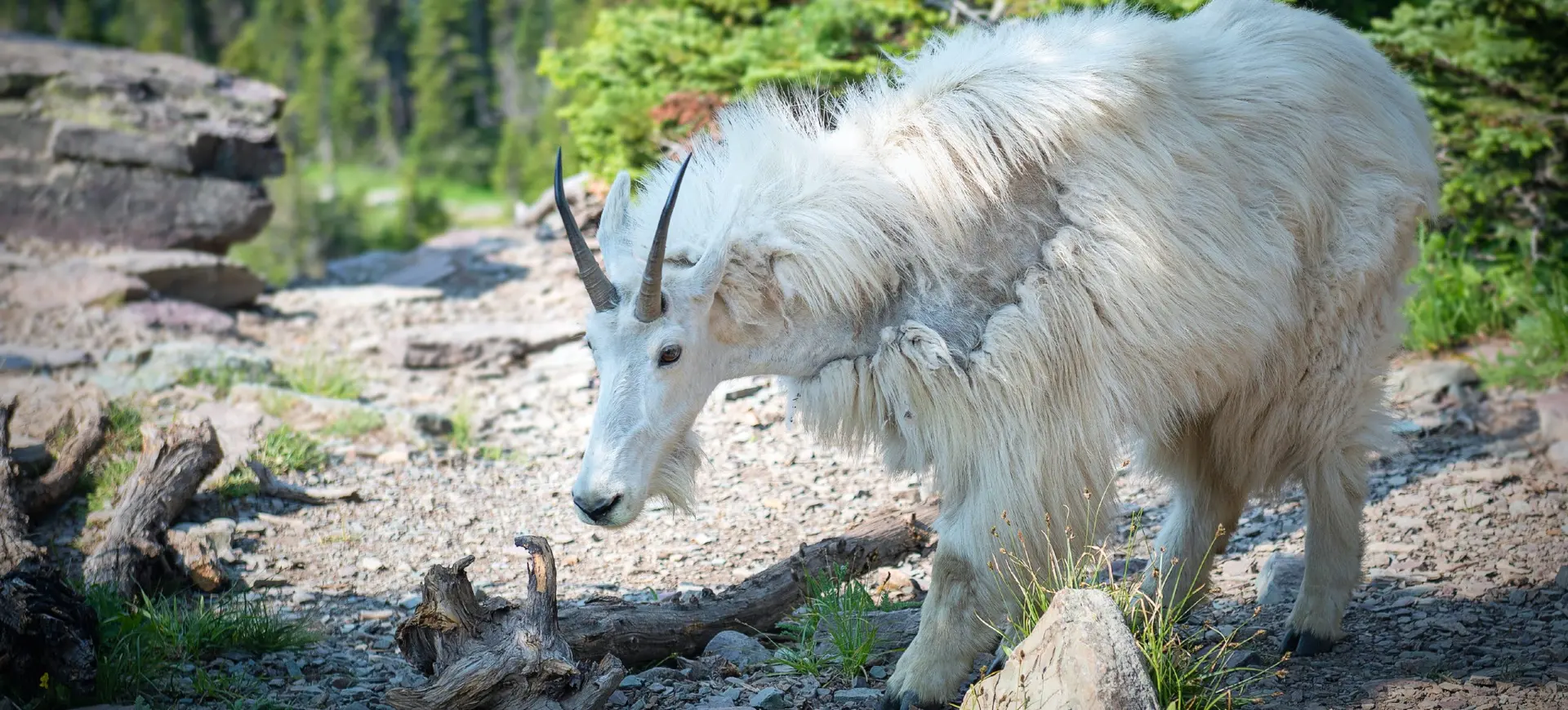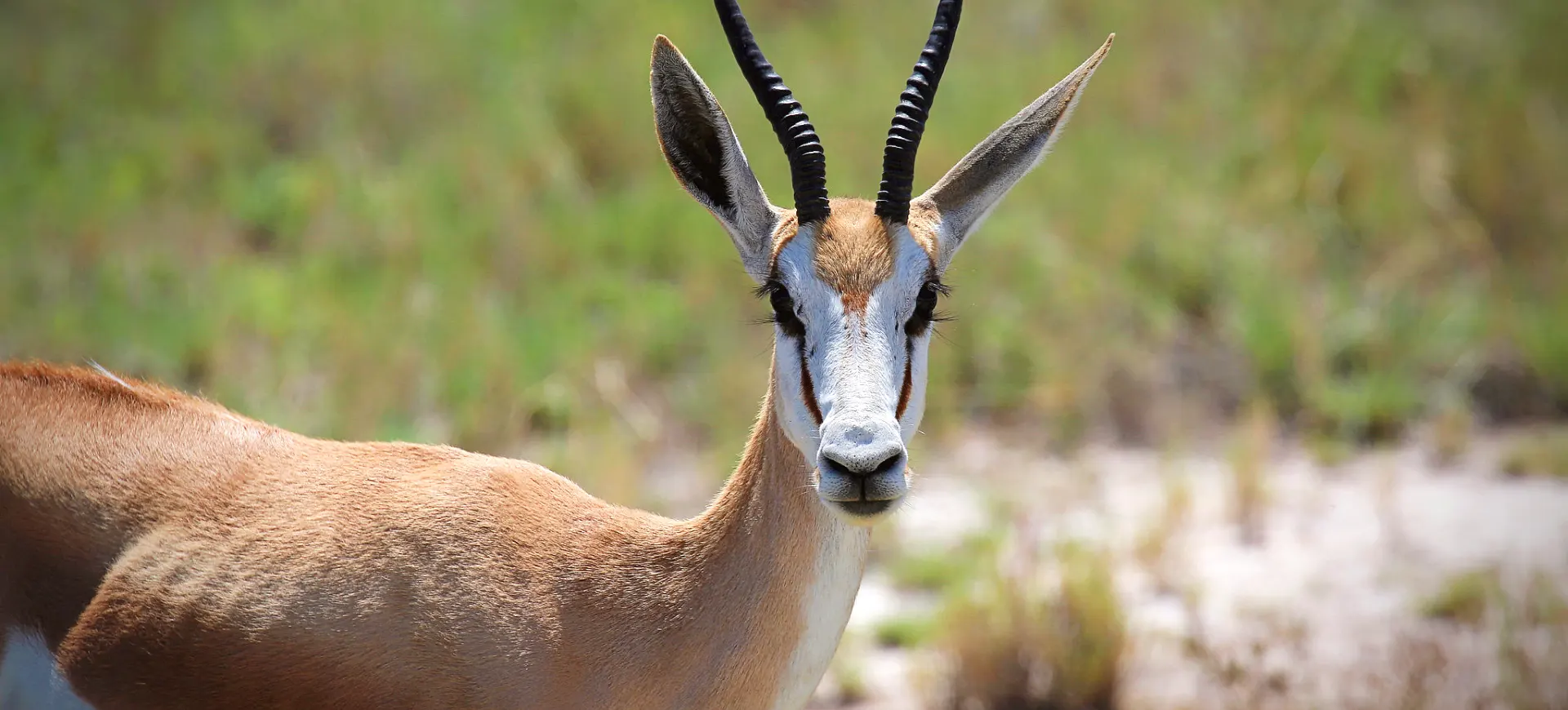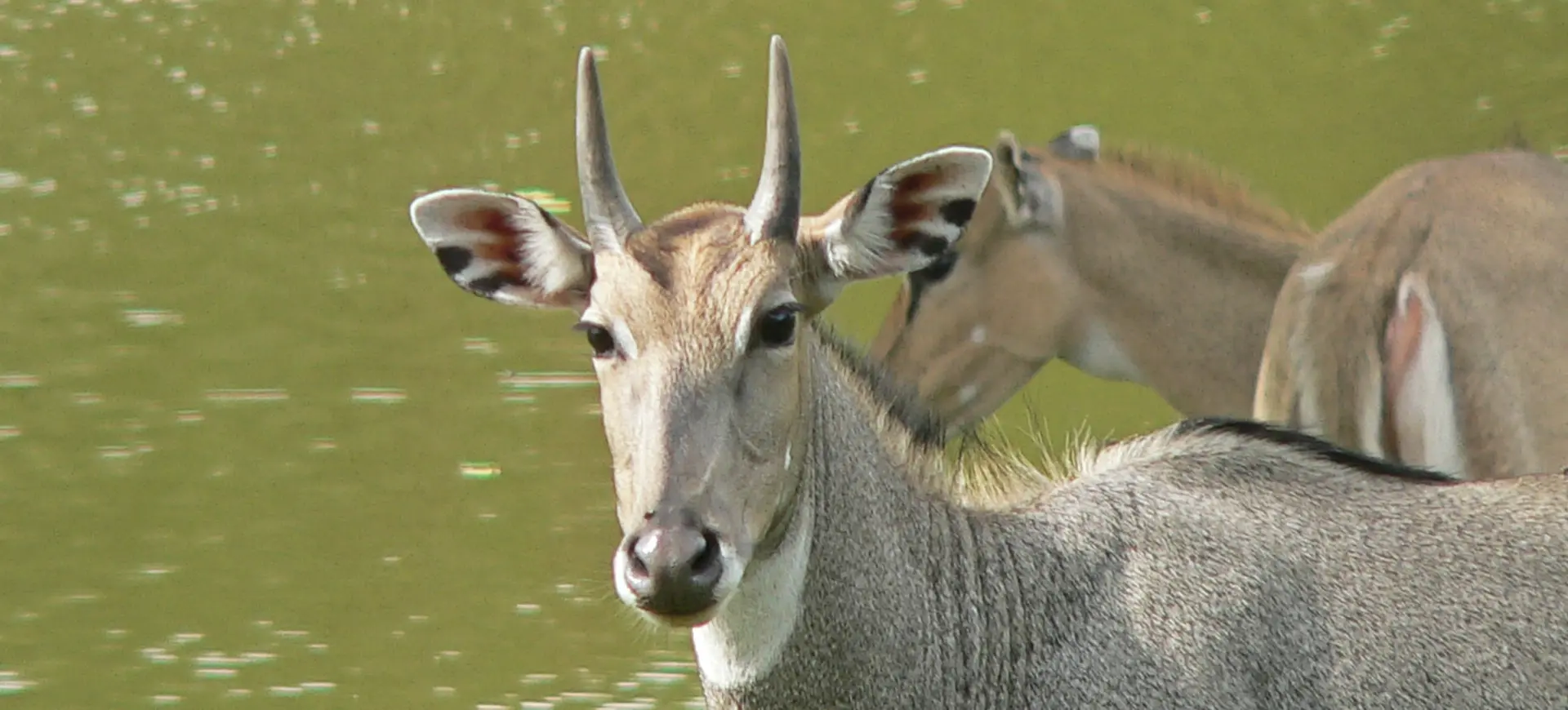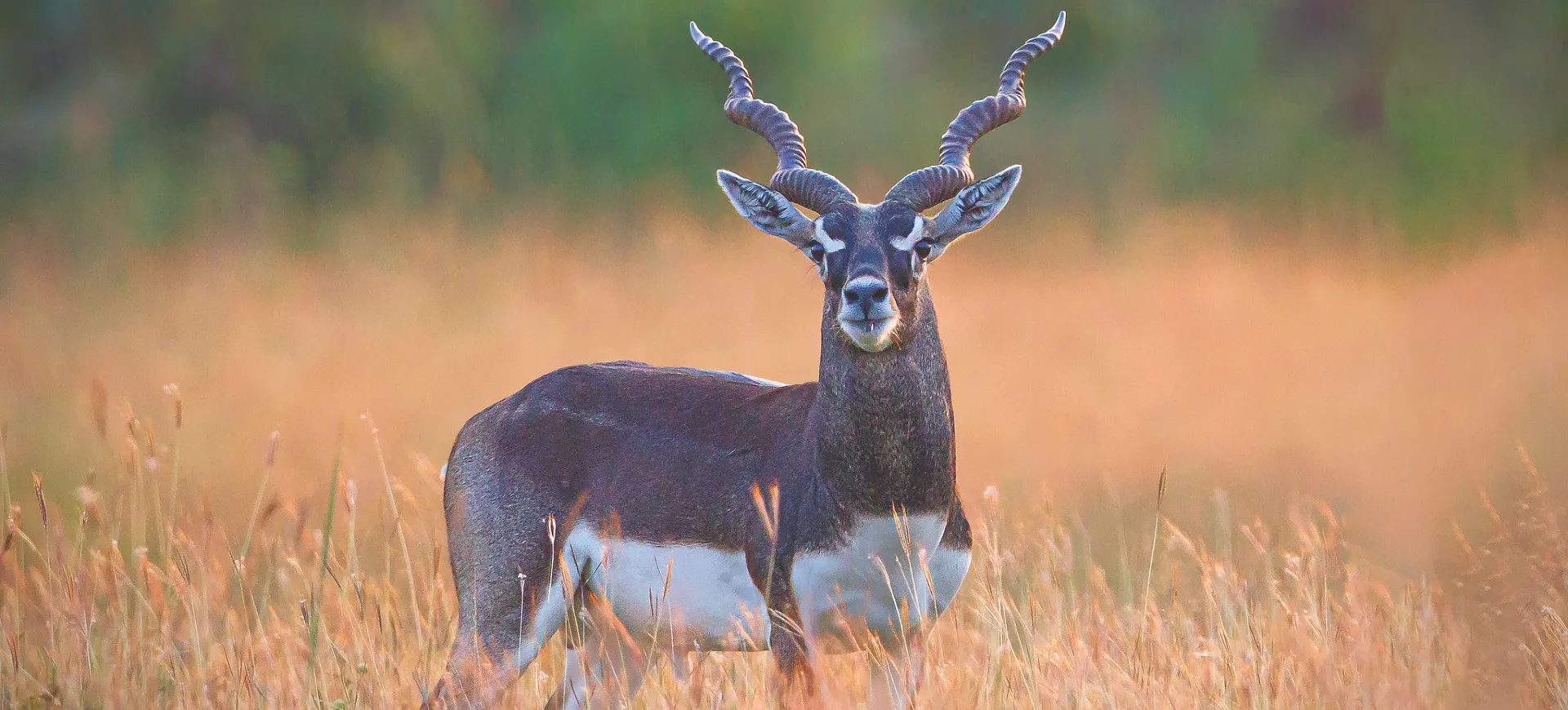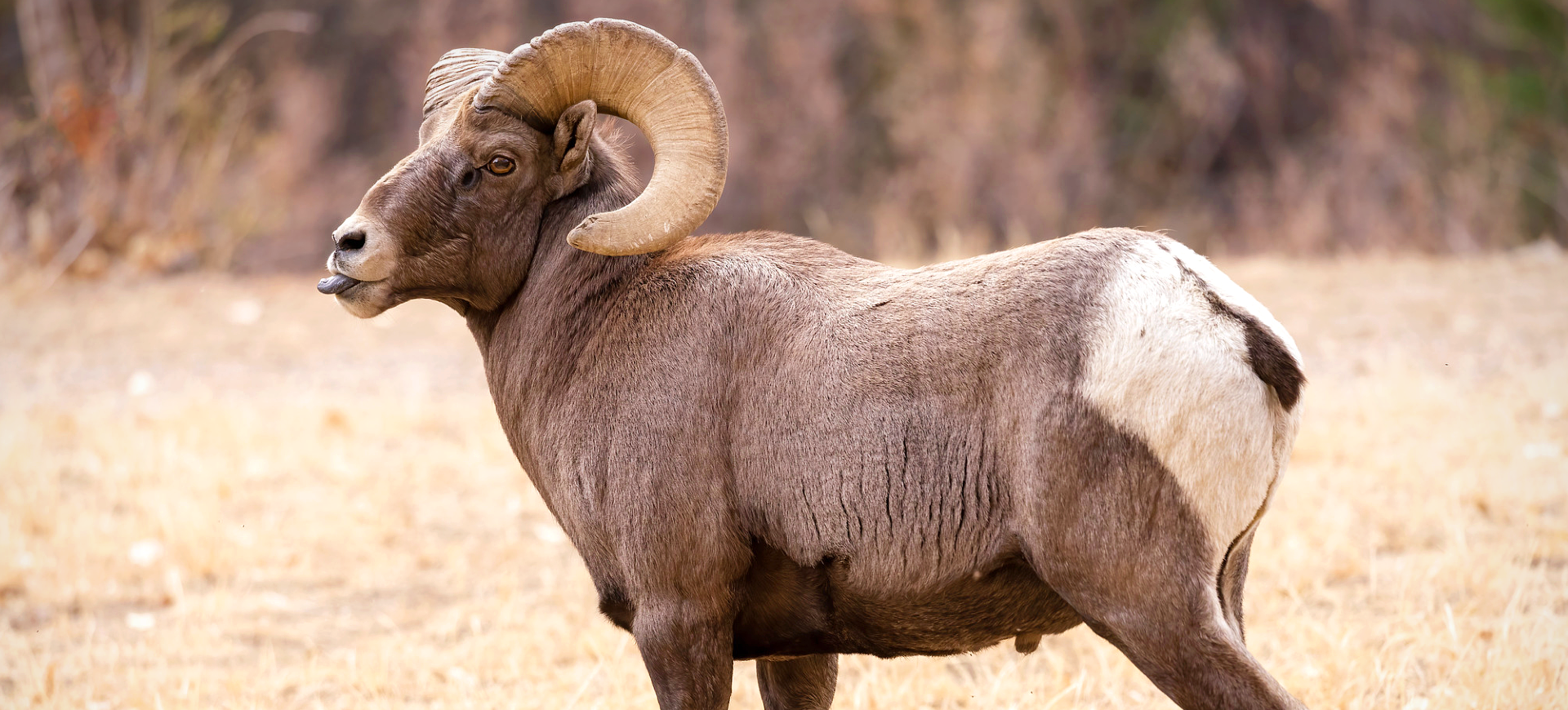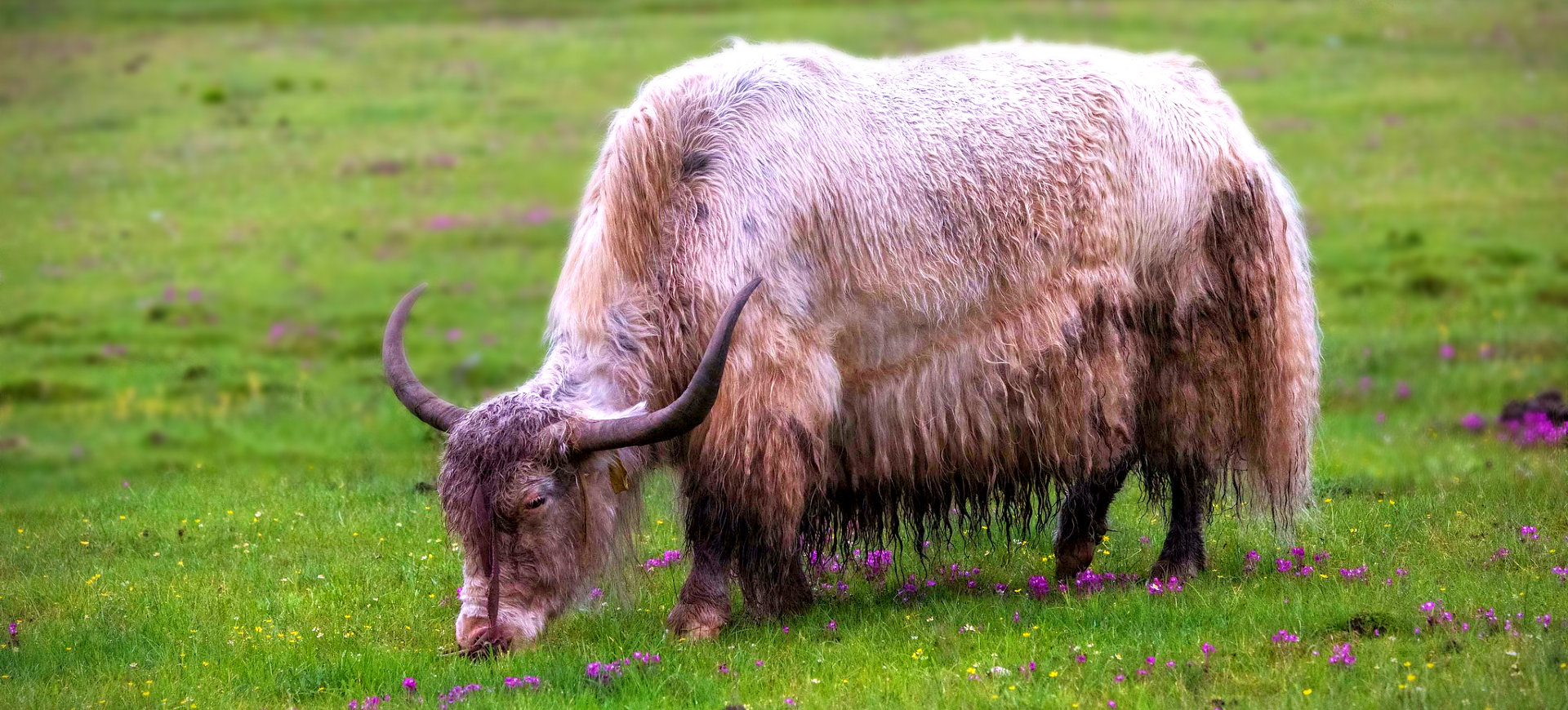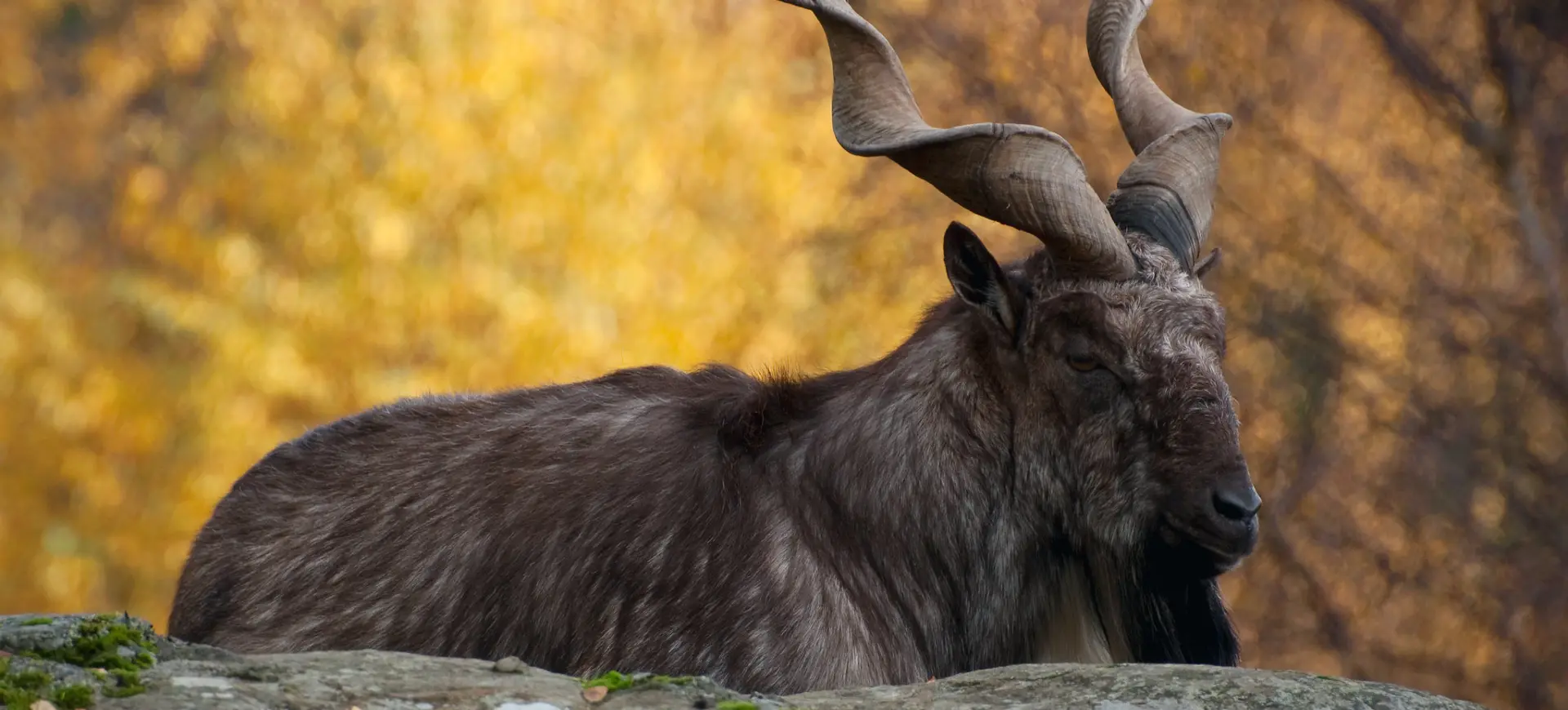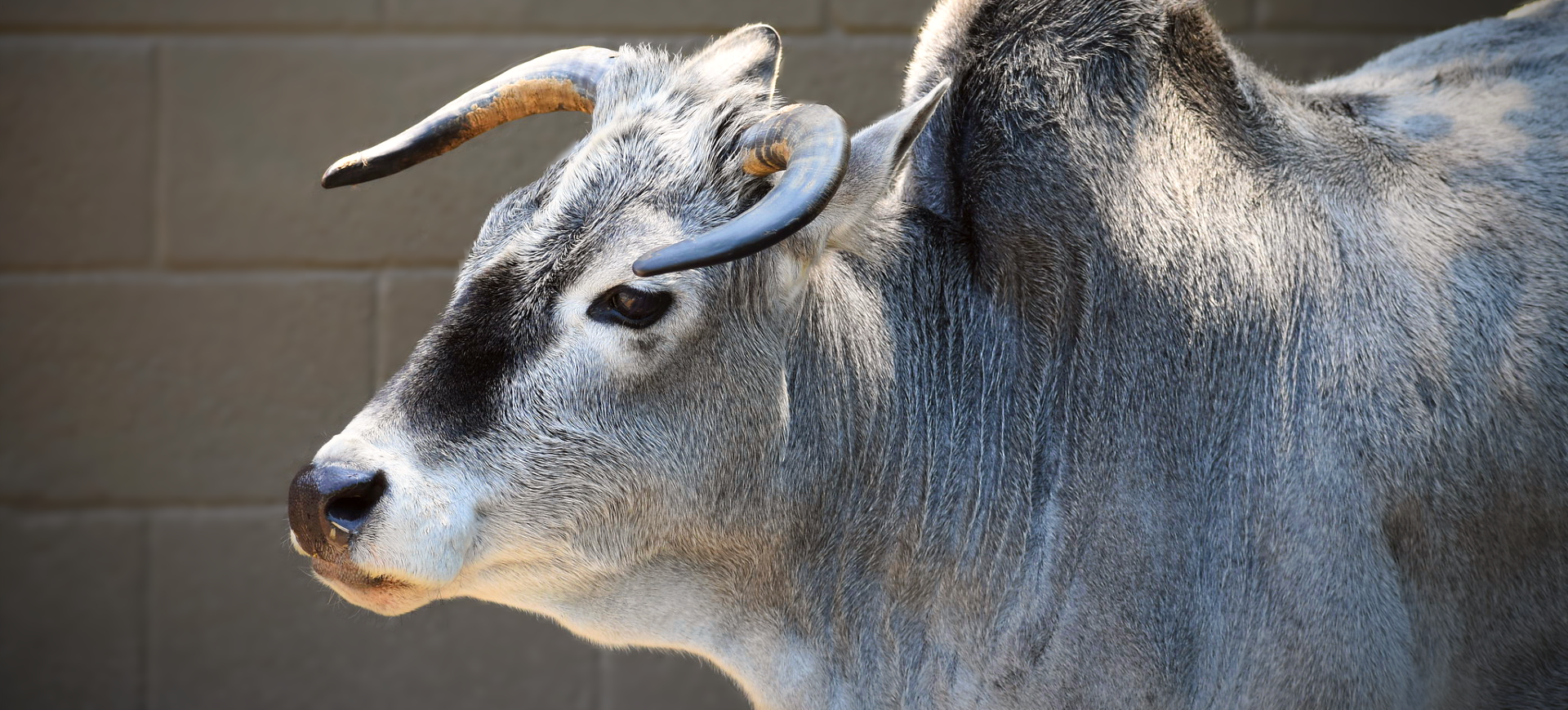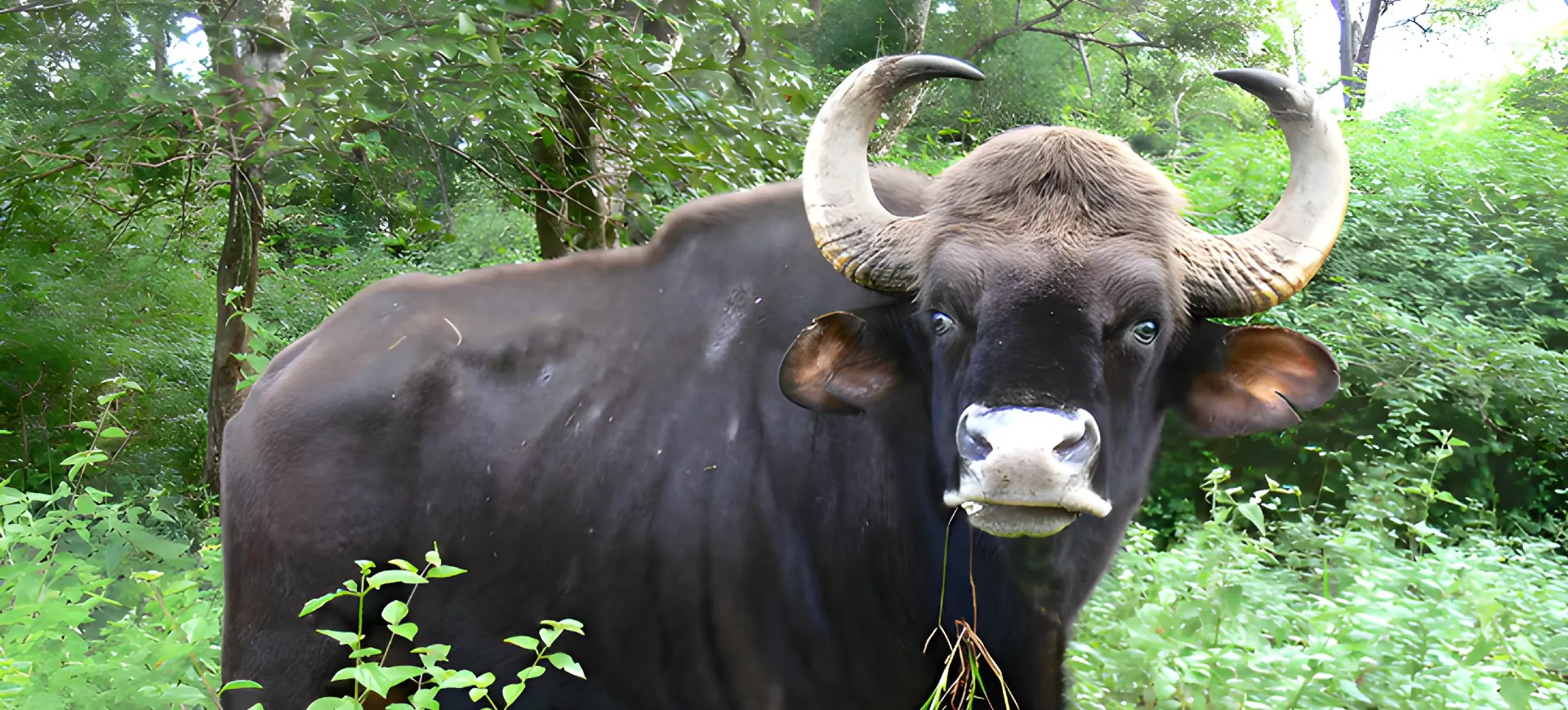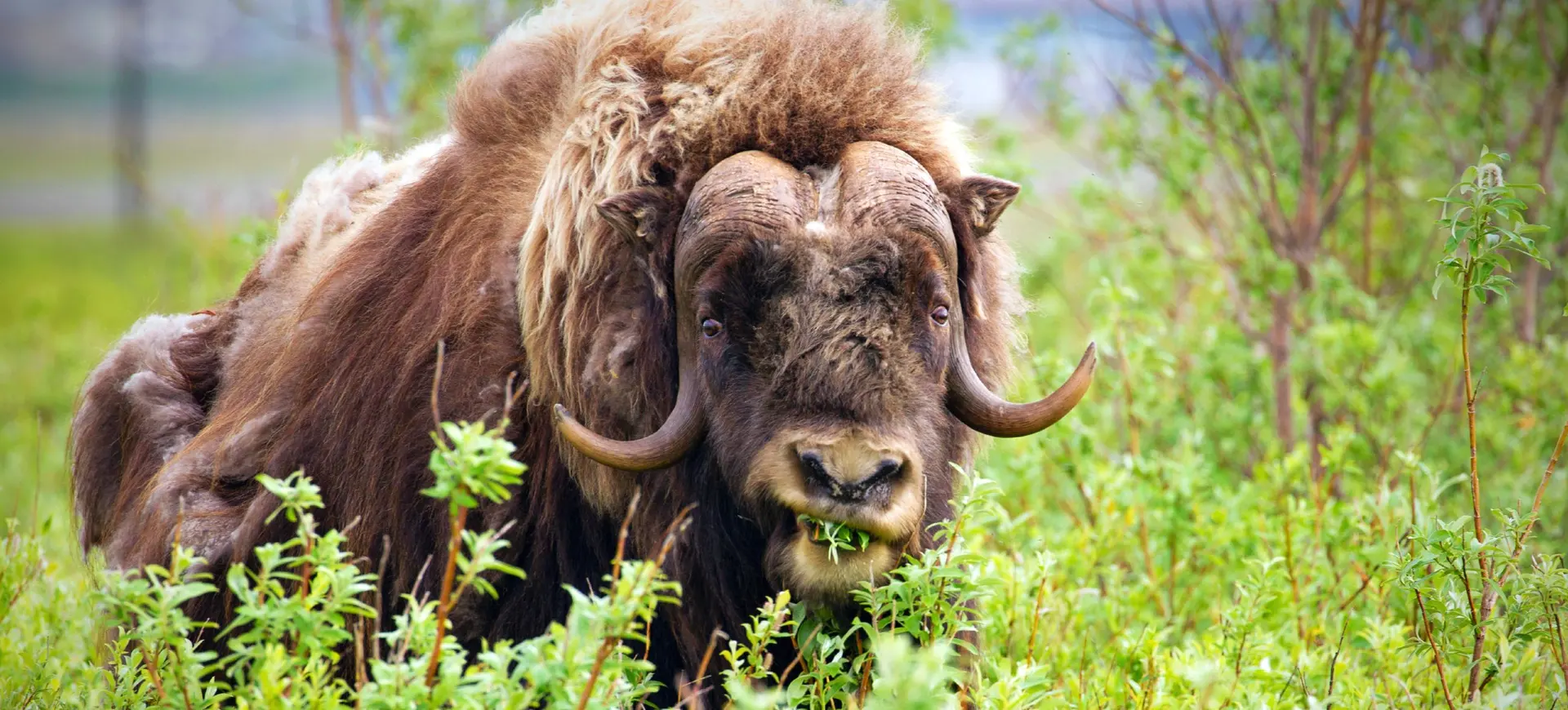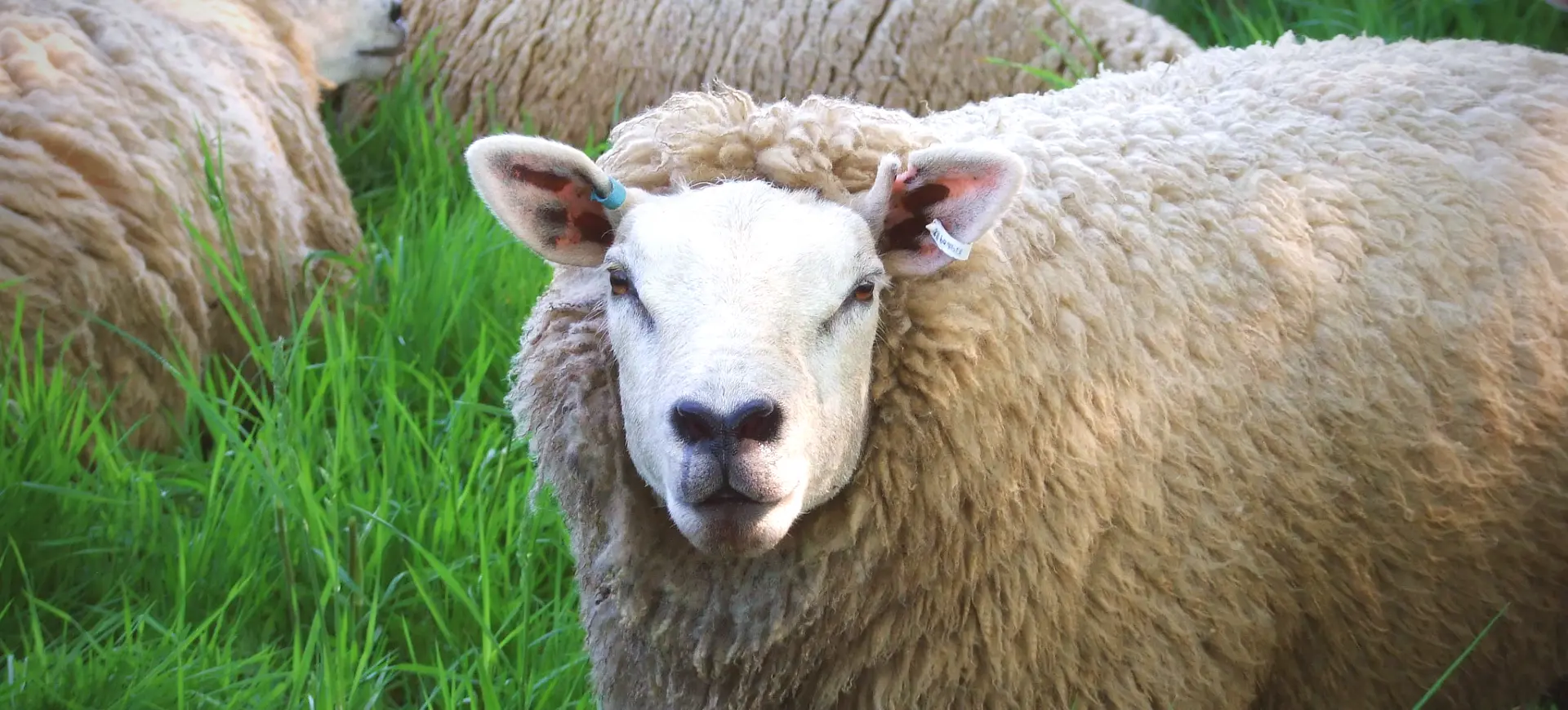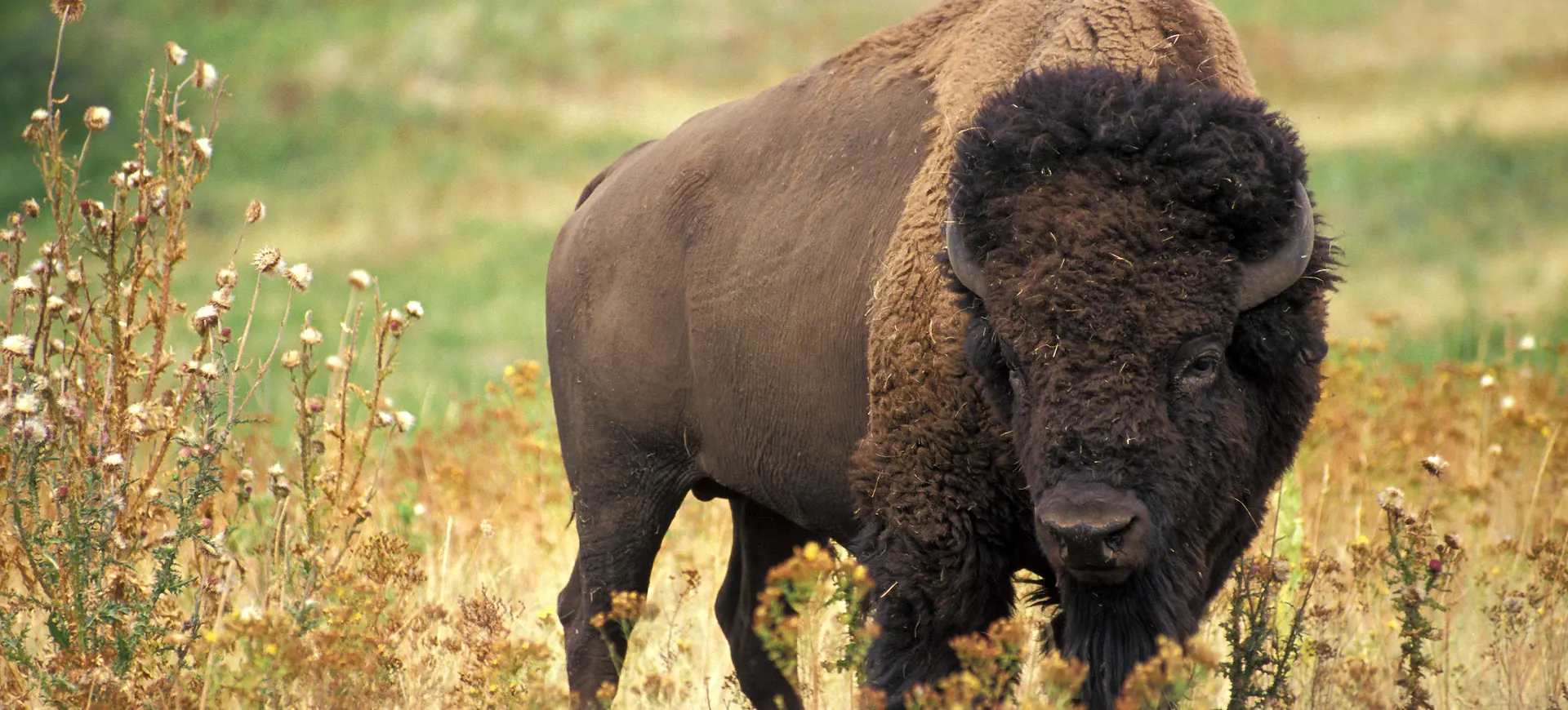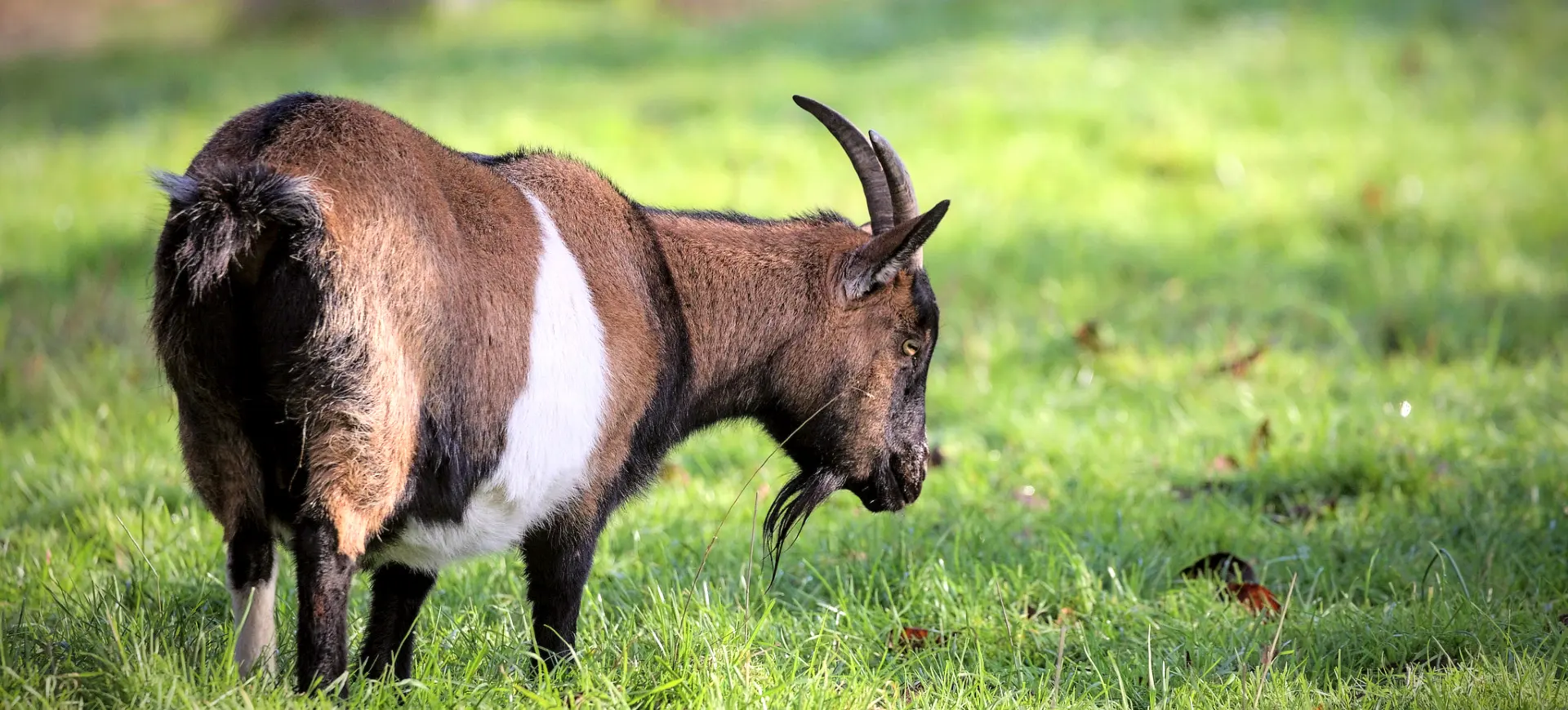Overview
The Cape Buffalo, native to the diverse ecosystems of sub-Saharan Africa, is a robust bovid that thrives in grasslands, swamps, and forests. The animal is particularly striking due to its thickset body and solid limbs, well-adapted to both foraging and escaping predators. Its large head is dominated by a set of formidable horns that span more than a meter across in some individuals, serving as a display of strength and a self-defense mechanism.
These horns are not merely for show; they play a vital role in the animal’s interactions with predators and within its social circle. Predominantly threatened by lions and crocodiles, the Cape Buffalo uses its horns effectively to gore or ward off attackers in close-combat situations. Furthermore, during mating seasons, males engage in fierce battles using their horns to assert dominance and secure access to females, contributing to the species’ complex social dynamics.
Cape Buffaloes are highly social animals that typically live in large herds, although the size and composition of these groups can vary significantly. Within these herds, complex behaviors and interactions are observed. Animals often cooperate to fend off predators or find the best grazing areas, displaying a level of social complexity rivaled by few other herbivores. The herd often consists of females and their offspring, accompanied by dominant males, while subdominant males may form separate bachelor herds.
Taxonomy
Kingdom
Phylum
Class
Order
Family
Genus
Species
Sub Species
Type
Current distribution:
Cape Buffaloes are predominantly found in sub-Saharan Africa, but their distribution is not uniform across the continent. They are notably absent from arid desert regions and the highest mountainous areas. Countries such as Kenya, Tanzania, Botswana, Zambia, and South Africa host significant populations of Cape Buffaloes. These nations often safeguard the species within reserves and national parks, ensuring a stable environment for these animals.
The presence of Cape Buffaloes in these protected areas benefits the species and plays a role in ecotourism, attracting visitors interested in African wildlife. Despite being in reserves and national parks, they are not entirely insulated from threats like habitat loss and human-wildlife conflict, especially when they roam outside protected zones. Nonetheless, these areas provide a relatively stable habitat, contributing to the overall sustainability of the species.
Physical Description:
The Cape Buffalo is characterized by its robust and muscular physique, complemented by a coarse coat that varies in color from dark brown to almost black. This coat is particularly dense, serving as a protective layer against environmental factors and minor injuries. Adult males tend to be larger than females and are generally darker in color, adding to their imposing presence. The arrangement of their eyes set high and to the sides of their head grants them a broad field of vision, making it easier to detect potential threats.
Despite their hefty build, Cape Buffaloes are surprisingly agile, thanks to their robust yet relatively short legs. These strong limbs enable the animal to make quick bursts of speed when necessary, either to escape predators or to charge when provoked. This agility is particularly advantageous in the diverse ecosystems they inhabit, where quick reflexes and high mobility can make the difference between life and death.

Lifespan: Wild: ~20 Years || Captivity: ~30 Years

Weight: Male: 1,300–2,000 lbs (590–910 kg) || Female: 1,100–1,200 lbs (500–544 kg)

Length: Male: 94–110 in (240–280 cm) || Female: 86–100 in (220–250 cm)

Height: Male: 51–59 in (130–150 cm) || Female: 47–55 in (120–140 cm)

Top Speed: 35 mph (56 km/h)
Characteristic:
Native Habitat:
Cape Buffaloes are highly adaptable and occupy a range of habitats in sub-Saharan Africa. These habitats include savannas, grasslands, and forests. A commonality among these diverse environments is the presence of water sources, which are essential for the buffalo’s daily drinking habits and wallowing activities. They strongly prefer areas with tall grass and reeds, as these offer effective cover from predators like lions and crocodiles.
In addition to requiring water for drinking and wallowing, Cape Buffaloes are also heat-sensitive. During the hottest parts of the day, they tend to seek refuge in shaded areas to mitigate the effects of high temperatures. This behavior complements their daily wallowing activities, as both are strategies to regulate body temperature. It is common to see herds congregating near water holes for hydration and cooling off during the day’s heat.
Biogeographical Realms:
Continents:
Diet:
Diet & Feeding Habits:
Cape Buffaloes primarily subsist on a diet of grass, acting as herbivorous ruminants within their ecosystems. They display a certain level of adaptability in their diet, opting for herbs and shrubs when grasses are not readily available. Water is essential in their daily routine, as they must regularly hydrate. Cape Buffaloes are often found near water sources and drink twice daily to meet their physiological needs.
The feeding habits of Cape Buffaloes exhibit a specific daily pattern dictated by temperature and other environmental factors. They prefer to graze during the cooler parts of the day, typically in the mornings and late afternoons. During the hotter periods, these animals often ruminate or seek out mud pools where they can wallow to regulate their body temperature. Wallowing not only helps them cool off but also serves as a means to remove parasites and provides a layer of mud that can act as a natural sunscreen.
Mating Behavior:
Mating Description:
The mating season for Cape Buffaloes typically falls between March and May. During this time, dominant males engage in intense competitions, often involving violent horn clashes, to gain mating access to females in estrus. These physical contests can be fierce and are crucial in determining which males will have the opportunity to mate. Once a male successfully mates with a female, he generally seeks other mating opportunities while the impregnated female returns to the herd’s safety.
The gestation period for Cape Buffaloes is approximately 11 months, usually resulting in the birth of a single calf. The female separates from the herd shortly before giving birth, seeking a secluded spot to minimize the risk from predators. After birth, the mother and calf spend a short period in isolation before rejoining the herd. This is a critical time for the calf, as the first few weeks are when it is most vulnerable to predators like lions and hyenas.
Reproduction Season:
Birth Type:
Pregnancy Duration:
Female Name:
Male Name:
Baby Name:
Social Structure Description:
Cape Buffaloes exhibit a complex and hierarchical social structure, often forming herds that can number in the hundreds. These herds are typically matriarchal, consisting mainly of related females and their offspring, with a few dominant males also present. The herd’s leadership is generally determined by older, more experienced females, who make key decisions such as when and where to move for grazing or water.
Within the herd, subordinate males usually form separate, smaller bachelor groups. These subgroups are lower in the social hierarchy and are often found on the periphery of the main herd. The bachelor groups serve as a “training ground” where younger males can gain experience and strength, aiming to one day challenge for a dominant position within the main herd. This layered social structure contributes to the overall cohesion and survival strategies of Cape Buffaloes in the wild.
Groups:
Conservation Status:
Population Trend:
The population of Cape Buffaloes is generally considered stable, mainly due to their limited number of natural predators, primarily lions and, to some extent, humans. Another factor contributing to their stable population is their social structure and herd behavior, which provides collective defense against predators. However, their numbers face threats from habitat loss caused by agricultural expansion and human settlements, as well as diseases like bovine tuberculosis, which can harm herd health.
Conservation efforts primarily focus on habitat preservation, particularly within protected areas and national parks across sub-Saharan Africa. These designated regions offer the Cape Buffaloes a sanctuary where they can roam, graze, and breed without immediate threat from habitat destruction. These protected areas are essential for their long-term survival, providing ample grazing lands and access to vital water sources.
Population Threats:
Habitat degradation is a considerable concern for the Cape Buffalo, particularly due to agricultural expansion and human encroachment into their native regions. As grasslands and savannas are converted for farming or human settlement, the available space for the Cape Buffalo to roam and graze diminishes, affecting their access to food and water sources. Additionally, foot-and-mouth disease and bovine tuberculosis can severely impact buffalo populations, sometimes leading authorities to cull to prevent these illnesses from spreading.
These challenges are compounded by the growing issue of human-wildlife conflicts, particularly in pastoral communities where grazing lands are shared between domestic livestock and wild buffalo herds. Such interactions increase the risk of disease transmission and can result in retaliatory killings of buffaloes by humans. This complex interplay of threats requires integrated conservation strategies that balance the needs of both wildlife and human communities.
Conservation Efforts:
Conservation strategies for the Cape Buffalo largely revolve around habitat preservation and effective disease control. Many reserves and national parks have been established to provide safe environments where these animals can roam freely. Additionally, vaccination programs are often implemented to mitigate the risk of diseases such as foot-and-mouth and bovine tuberculosis, which can devastate buffalo populations and even have broader ecological impacts.
Alongside these medical interventions, efforts are also being made to minimize human-wildlife conflicts, which can pose a significant threat to Cape Buffalo. Community education programs aim to inform local populations about the ecological importance of buffalo and safe practices for coexistence. Furthermore, wildlife corridors are being established to allow for the safe passage of buffalo and other animals, reducing the likelihood of encounters that could lead to conflict.
Additional Resources:
Fun Facts
- Cape Buffaloes have excellent memory and can recognize humans who have harmed them in the past.
- They are known to circle and guard wounded members of their herd.
- Cape Buffaloes can swim and are often found wallowing in water bodies.
- They have a symbiotic relationship with oxpeckers, which eat ticks off their bodies.
- Despite their bulky appearance, they can run up to 35 mph.
- Cape Buffaloes are among the most dangerous animals in Africa, responsible for several fatal attacks on humans.
- They have a gestation period of about 11 months, one of the longest among African bovids.
- Their sense of smell and hearing are excellent, compensating for relatively poor eyesight.
- The males engage in “necking behavior,” resting their heads on each other’s shoulders to establish dominance.
- Cape Buffaloes are known to engage in mobbing behavior when threatened, where the herd bands together to chase away predators.


